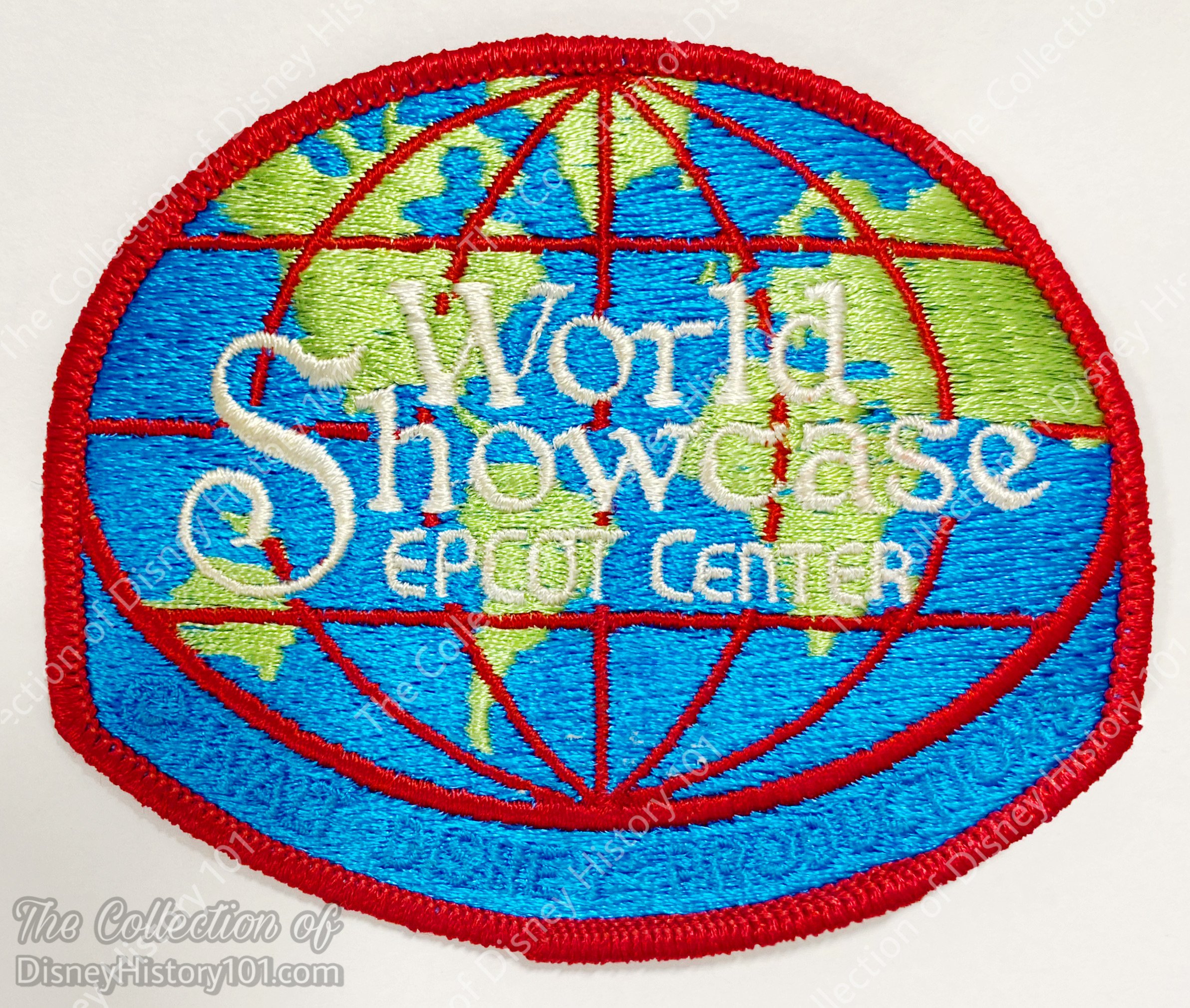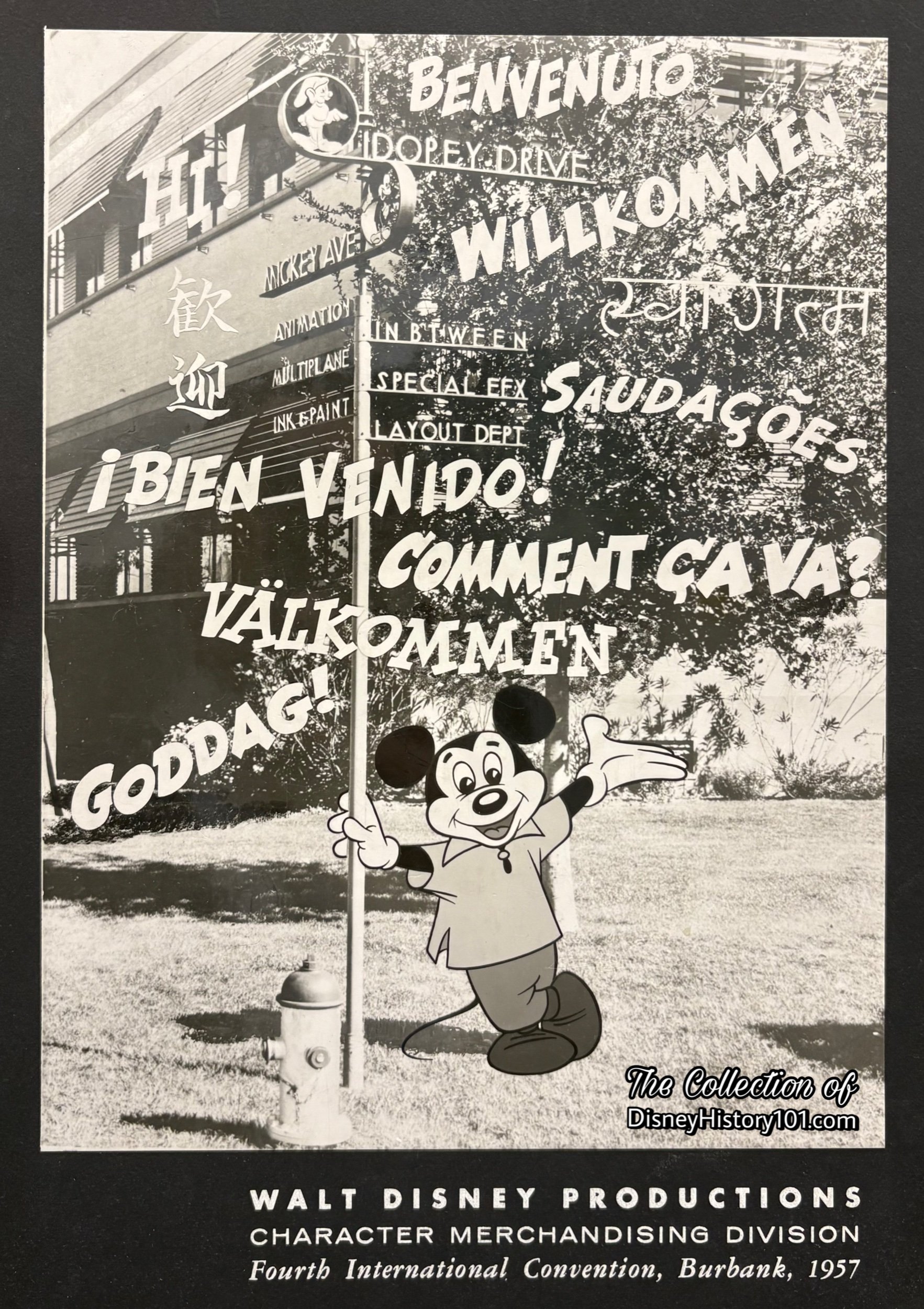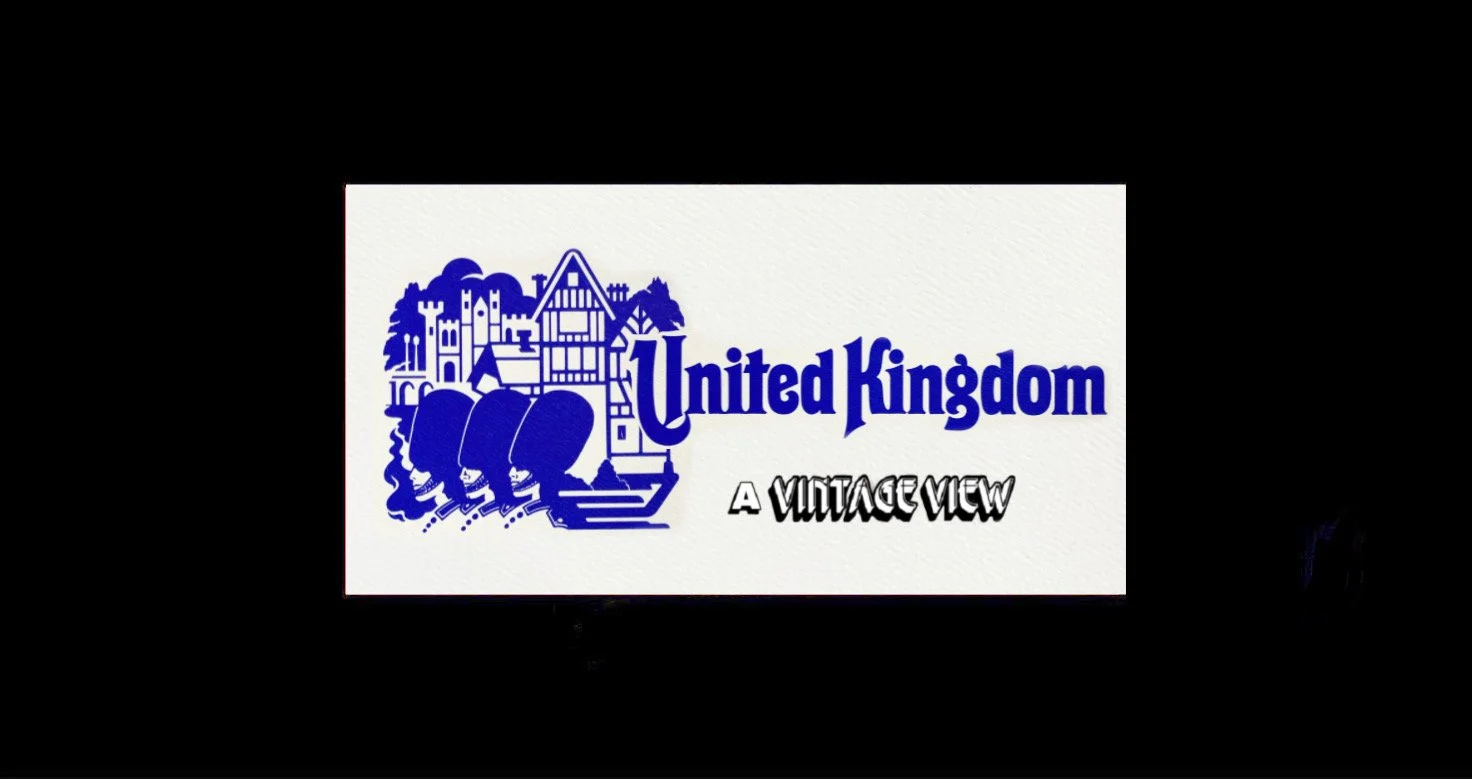WORLD SHOWCASE - UNITED KINGDOM PAVAILION
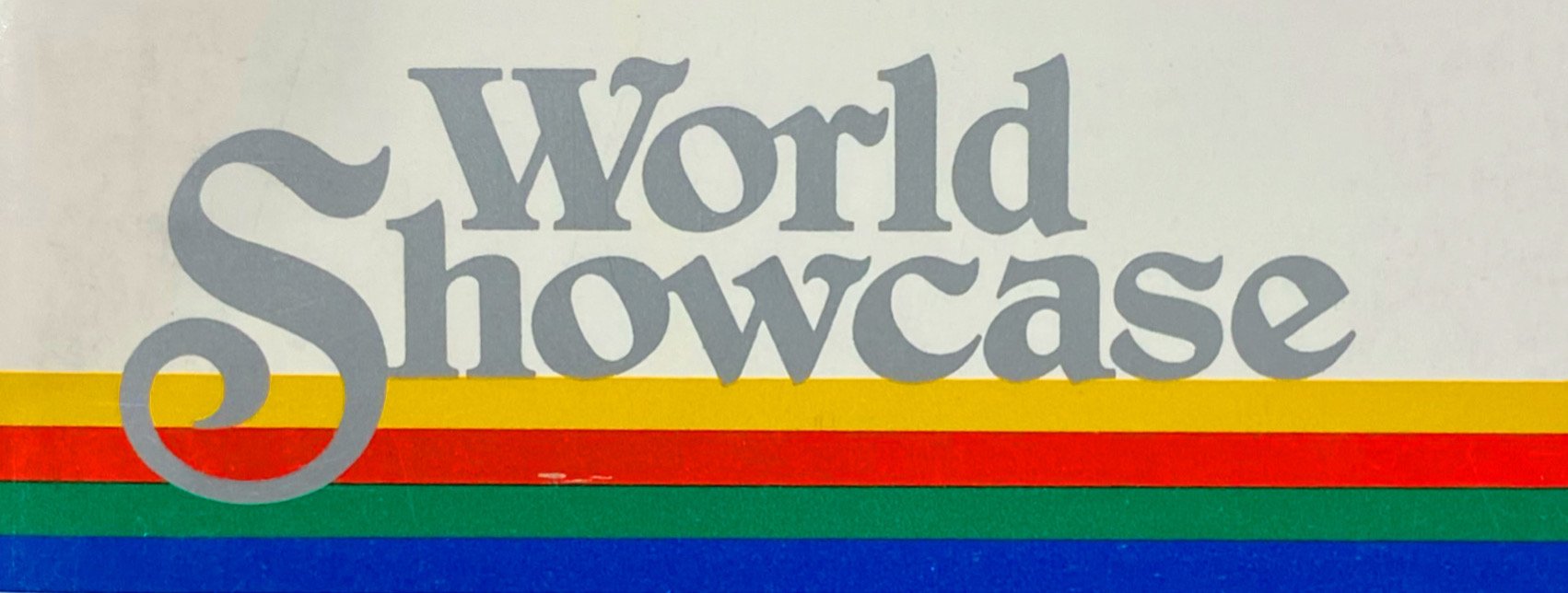
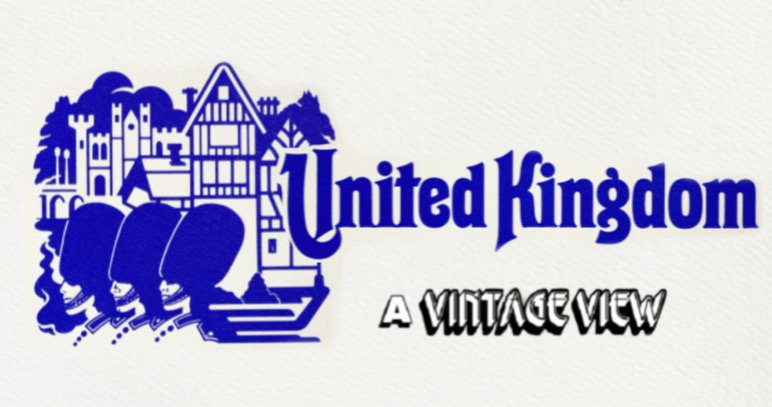
(October 1, 1982 - The Present)
On December 15, 1966, Roy Disney addressed the employees of Walt Disney Productions: “Walt Disney's preparation for the future has a solid, creative foundation. All of the plans for the future that Walt had begun - new motion pictures, the expansion of Disneyland, television production and our Florida and Mineral King projects will continue to move ahead. That is the way Walt wanted it to be… Last October when he accepted the ‘showman of the World’ award in New York, Walt said, ‘The Disney organization now has more than four thousand employees. Many have been with us for over thirty years. They take great pride in the organization which they helped to build. Only through the talent, labor and dedication of this staff could any Disney project get off the ground. We all think alike in the ultimate pattern.’”
By 1975, “the need for an Experimental Prototype Community of Tomorrow… was[sic] even greater than when Walt Disney first began talking about it in 1965.” The Experimental Prototype Community of Tomorrow was to feature a living community where American Industry would always be introducing, testing and demonstrating new techniques and systems designed to enhance the quality of urban life. EPCOT was always to be a showcase to the world community. And so the author of one c.1975 prospectus stated: “Now, more than ever, our world needs a focal point a forum where creative men and women of science, industry, government and the arts from around the world can present new ideas and technologies... stimulating new concepts that will enable both the leaders of the world and the general citizenry to better understand the great challenges facing people around the world…and the possible solutions to these great challenges.”
Soon the second Phase of Walt Disney World was being planned - EPCOT Center. According to one EPCOT Center’s instructor’s orientation guide, one objective set out for EPCOT was “to be a ‘permanent international people-to-people exchange’. . . advancing the course of world understanding among its citizens. What we are doing now is creating a public focus. . . a ‘center’ for the communication of what is being done. . . made directly to the public in ways they will both understand and enjoy. Our goal through EPCOT Center is to inspire our guests who come here, so that they will be turned on to the positive potential of the future and will want to participate in making the choices that will shape it. In short, we believe that EPCOT Center will establish a new level of entertainment and equally important, education for families and people of all ages from all lands. . . and that EPCOT Center will give people hope that there are solutions to all the problems that exist in the world today. . . and that there truly can be understanding among nations.”
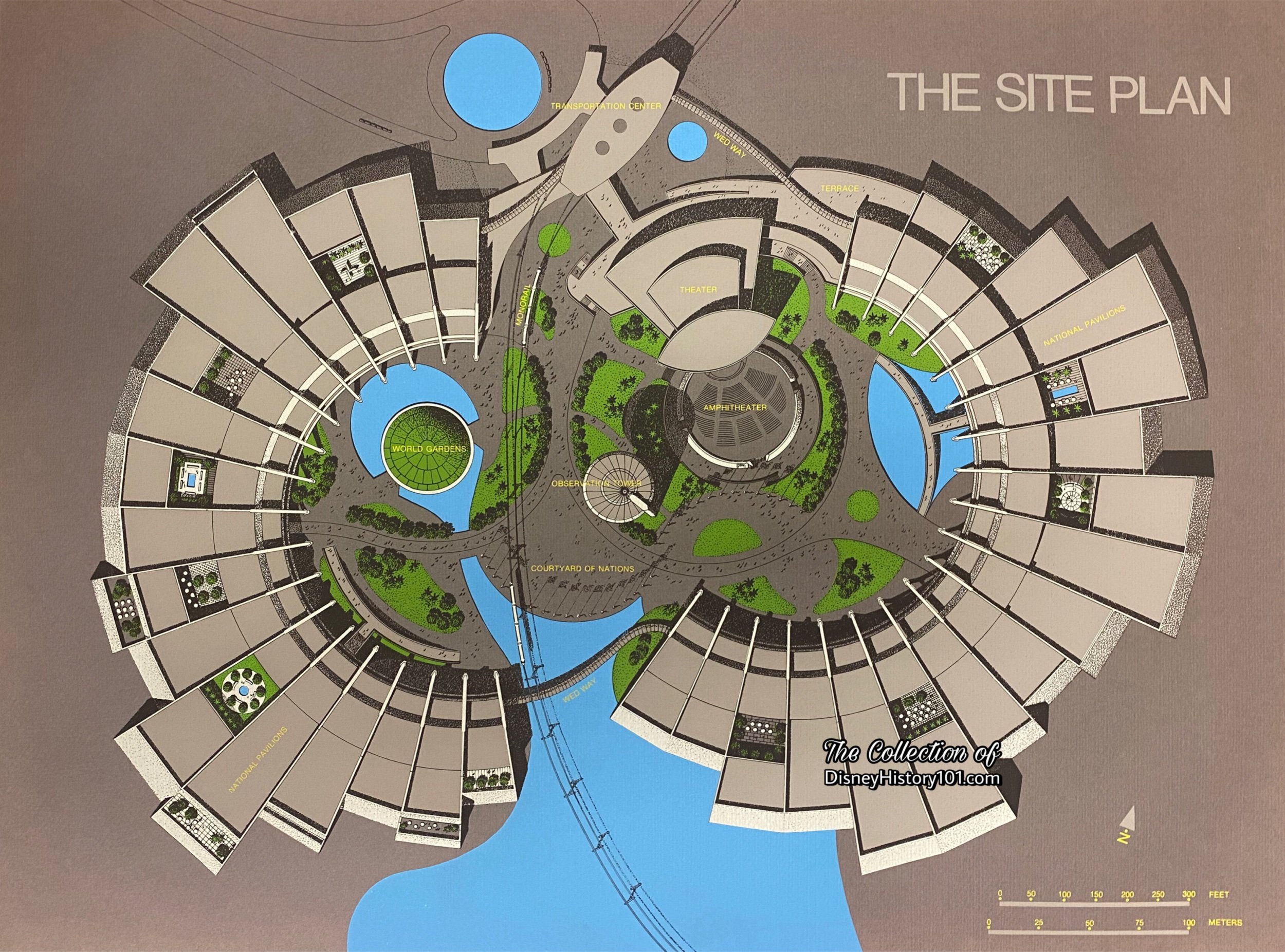
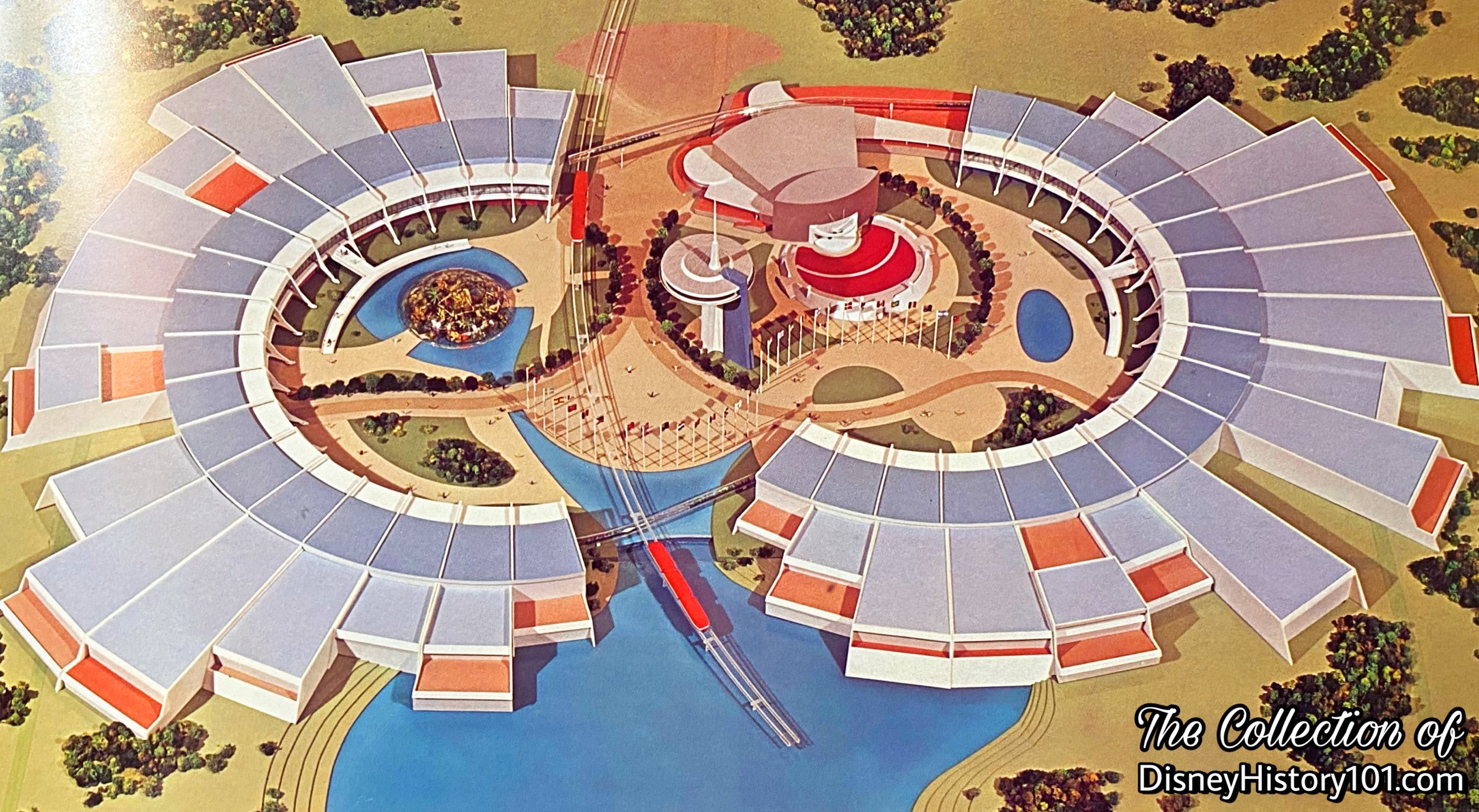
An excerpt from an EPCOT Center World Showcase prospectus.
“Unlike a world's fair, EPCOT's World Showcase will be a permanent international exhibition. No nation's exhibit or restaurant or product displays will be ‘torn down’ after one year or less-the standard requirement at world's fairs. Instead the one-time construction costs will go on working for a country for many years at Walt Disney World. Here the nations of the world will stand side by side in two semicircular buildings. This semicircular design not only will offer equal exposure and public access for each nation...but will also function as an interrelated series of experiences for every guest. for the entire complex of attractions and exhibits will be tied together by a Disney people-moving system that will also offer visitors a ‘preview look’ into each country's pavilion.”
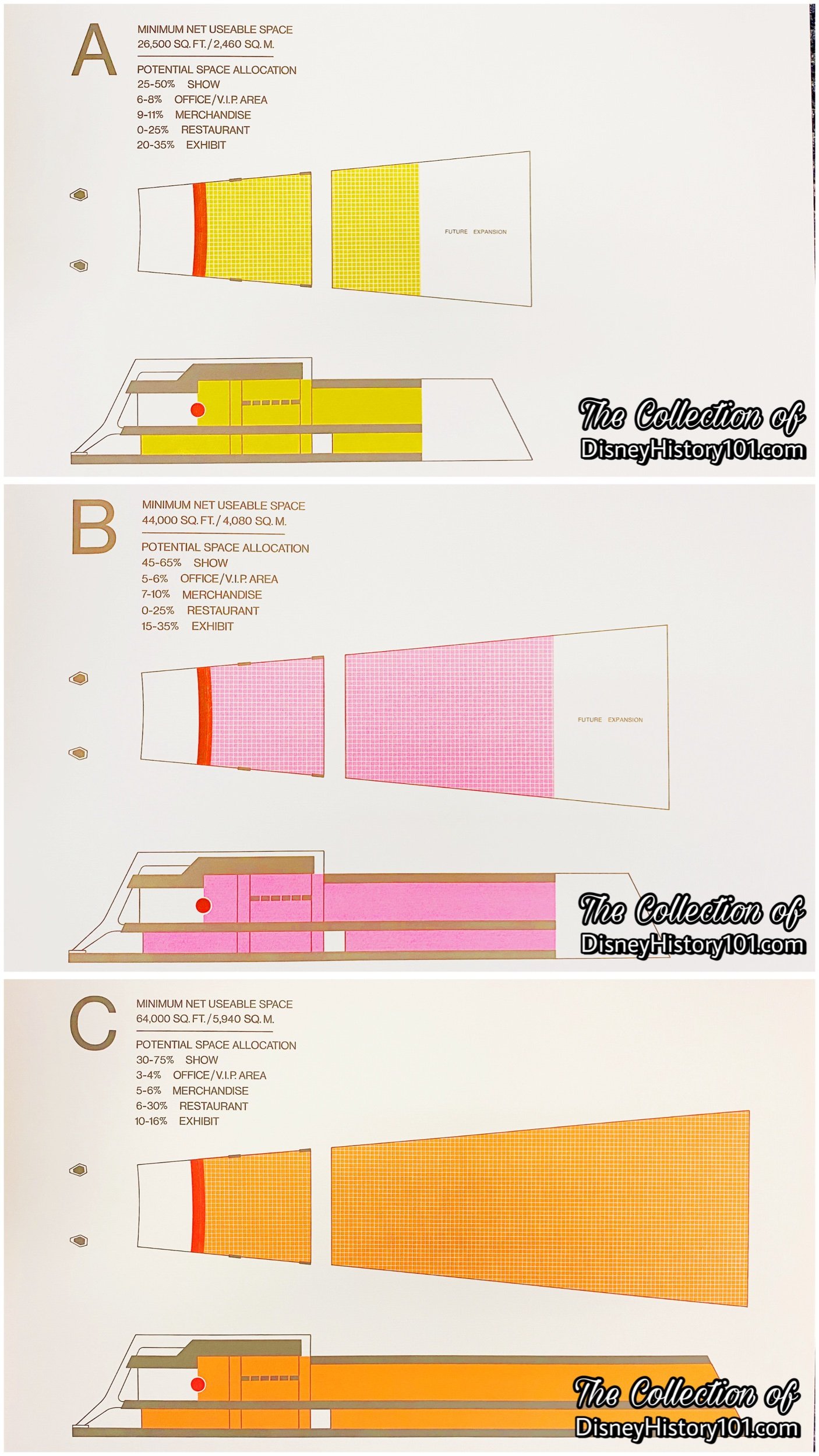
Proposed plans for all National Pavilions prepared by Carlos Diniz & Associates featured various amounts of square footage for offices, merchandise areas, restaurants, and exhibits.
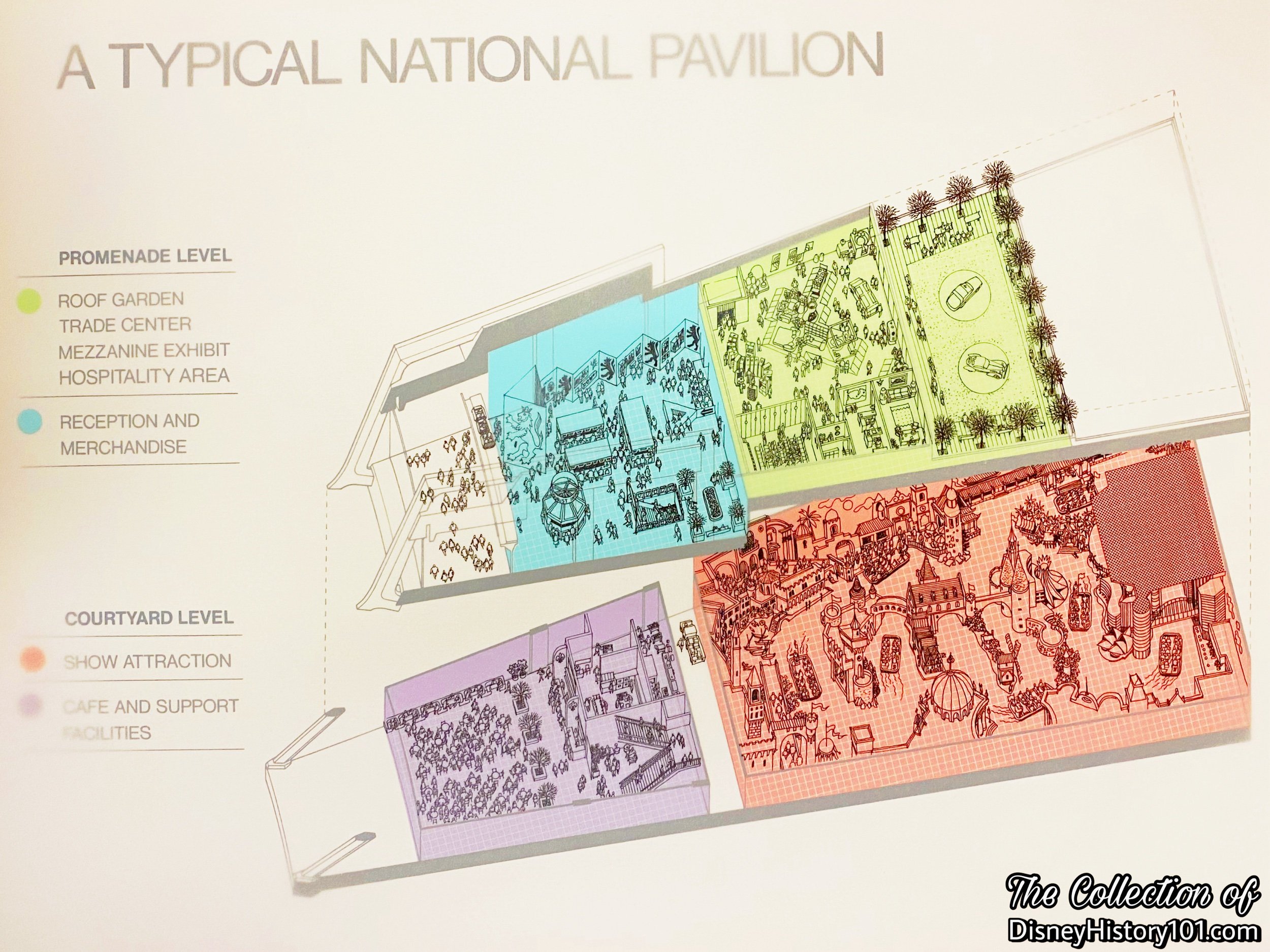
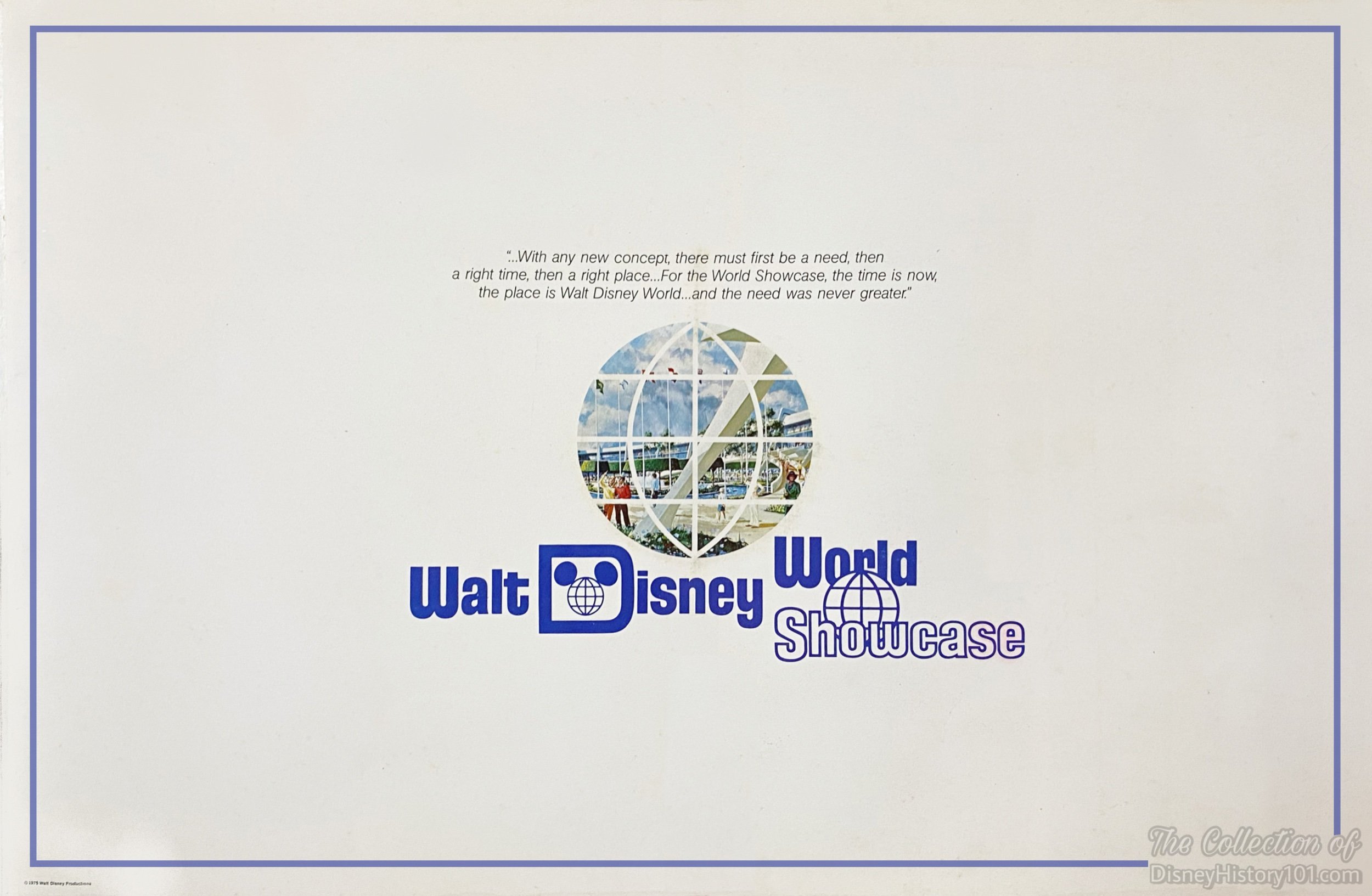
The cover of one Walt Disney World Showcase Prospectus which gave a preview of international pavilions during 1975.
One Walt Disney World Showcase prospectus added: “Here the nations of the world will meet on a coequal basis to communicate on a ‘people to people’ exchange with the more than 12 million visitors to Walt Disney World. Here young people from all over the earth will come to operate the attractions of their native lands… to serve the distinctive foods and to demonstrate and sell the unique merchandise of their home countries. Unlike a world's fair, EPCOT's World Showcase will be a permanent international exhibition. No nation's exhibit or restaurant or product displays will be ’torn down’ after one year or less-the standard requirement at world's fairs. Instead the one-time construction costs will go on working for a country for many years at Walt Disney World.”
A prospectus (entitled “EPCOT Center… People Bring It To Life”) opens by describing how the World Showcase was one of two principle themes of EPCOT Center, as it “be a ‘Community of Nations,’ the only permanent international exposition of its kind anywhere, focusing on the cultures, traditions, tourism, and accomplishments of people around the world.” Initial show master-planning and conceptual development resulted in EPCOT Center World Showcase presentations were “80 per cent World Showcase and 20 per cent EPCOT. Since then, we’ve evolved to the place where there’s maybe 80 per cent EPCOT and 20 per cent World Showcase. I think now we feel we’re at a point where we know what EPCOT and World Showcase are going to be. The two projects will work together and compliment each other,” according to a statement by Jack Lindquist, in which he discussed EPCOT Center plans. Herb Ryman created c.1965 suggestions for Walt Disney’s Progress City and “enclosed shopping areas… representing countries of the world.” According to another prospectus, “The World Showcase comprises the southern half of EPCOT Center where at least ten participating countries will stand side-by-side in friendship along the banks of a broad lagoon… The participants in this first phase of World Showcase include United Mexican States, Japan, Federal Republic of Germany, United Kingdom, French Republic, United Arab Emirates, Italian Republic, Canada, State of Israel and Morocco. Disney Imagineers are now working with government or business interests from these countries to achieve a unique and meaningful showcase for each nation.” Surely any wanderlust was sure to be satiated through the Epcot Center World Showcase.
Walt’s people and company were now embarking on “imagineering” a new, grander “theme show” for Florida audiences. The latter expression (“theme show”) was once defined as: “A controlled, usually man-made environment where as many as possible elements pertain to a single fictional or non-fictional motif. Thus, an individual placed within that environment may consciously or subliminally experience it.” But even more (as one sanctioned statement elaborated): “We are talking about all the things a guest may experience and be entertained by - colors, sounds, lights, detail - timing, taste and texture. Through art and animation, our imagination, creativity and talent blend together to make our ’show.’” Everything in the EPCOT Center World Showcase would be to this theme and atmosphere from this particular time, place and subject. A themed motif would be incorporated into every aspect of operation (e.g., room décor, menus, attractions and costumes).
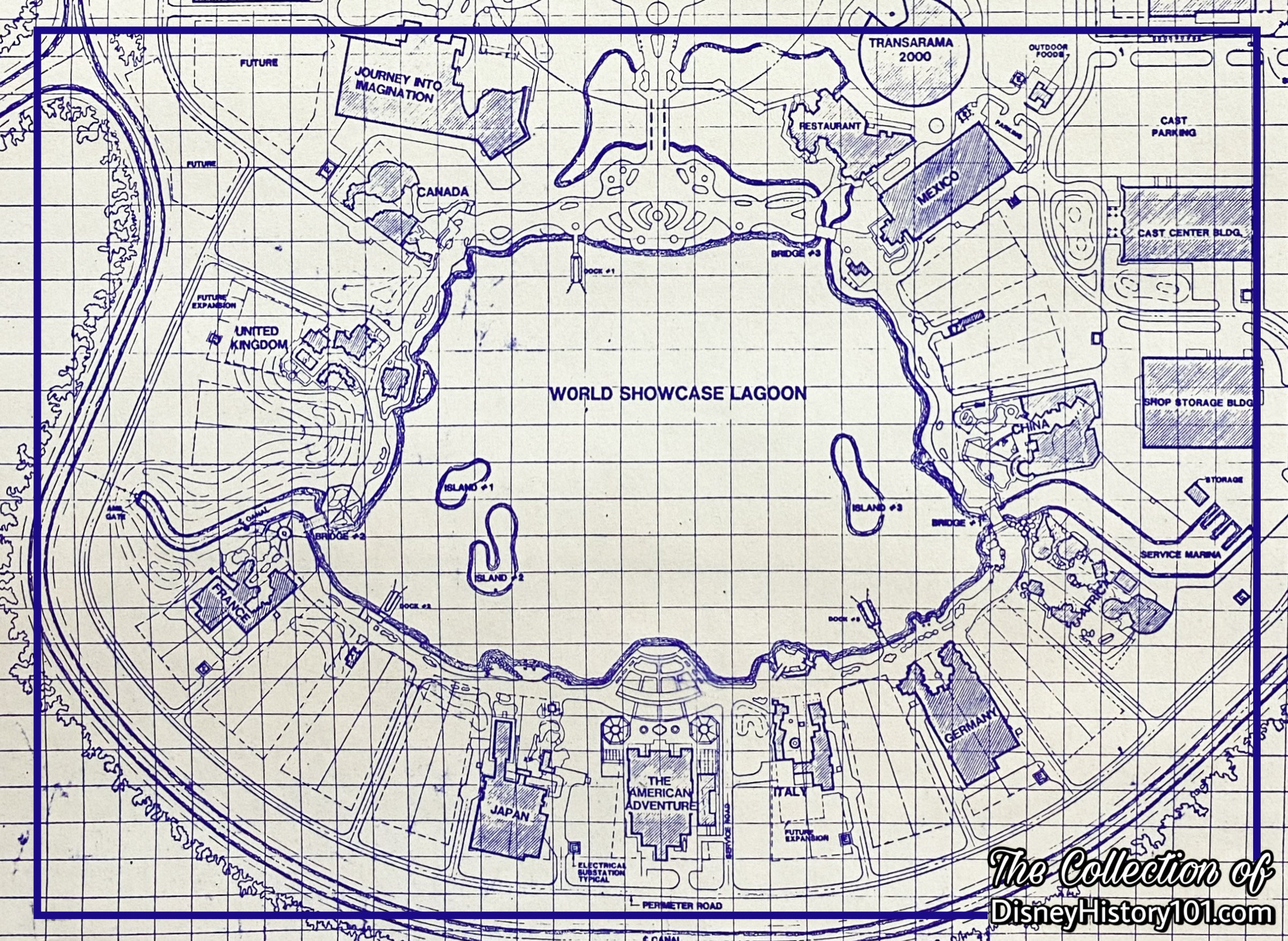
An Epcot Center Site Plan reveals the realm of World Showcase as previously viewed in an exhibit.
"I don't want the public to see the world they live in while they're in the park. I want them to feel they're in another world.” - Walt Disney. Nestled between a stretch (of more than 40 miles) of canal, a perimeter road, a service road, and the shores of the World Showcase Lagoon Promenade, is the EPCOT Center United Kingdom World Showcase.
Marty Sklar recollected (in “One Little Spark! Mickey’s Ten Commandments and The Road to Imagineering”: “I had spent eight of my eventual fifty-four years at Disney leading the Imagineers in developing the concepts, playing a key role in convincing the major corporate sponsors to make Epcot a reality, and producing the myriad of shows and stories that attracted more than ten million visitors to visit Epcot in its first year.” In June of 1980, Harper Goff described: “We start with the lagoon. The front has to be a water element. The pub in the British Pavilion has two aspects. On the lagoon side, it is a replica of the waterside pub on the Thames used by the boating population. On the side street in resembles a pub in Soho. You can dine in the pub and then wander back into a London park like Grosvenor Square. One building has the feel of St. James Palace. The replica of Hampton Court houses a toy shop. The pavilion will also have a Royal Doulton china shop, a gift shop and a biscuit and confectionery store. farther back, you’ll be able to stroll into an area like the Cotswold Hills.” Within the same interview, Dave Baron (World Showcase Development) added: “Soon after opening we’ll have a British music hall. A live show will be presented with dinner.” And still, Jack Lindquist added: “We may also have a British historical facility.”
Walt Disney once said: “The whole thing here is the organization. Whatever we accomplish belongs to our entire group, a tribute to our combined effort.” In step with Walt’s philosophies, what was described as a “complex and highly diversified team” of individuals (among the Project Management and the Project Team) would coordinate and translate the concept of EPCOT Center into a reality.
The United Kingdom Pavilion would be Imagineered by the collaborative contributions of writers, designers, artists, film makers, engineers, sculptors, and builders, in addition to committees of foreign nationals, representatives of corporations and governments. These were lead by Project Director Jim Nagy, EPCOT Center World Showcase United Kingdom Project Manager Joe Navarro, Jim Barrett (Resident Engineer), Jerry Hunt (BVCC Project Manager), Robby Blackman (Tishman Project Manager), Alan Bourgeois (Pico Coordinator), Joanne Fernholz (Project Business Administrator), and Dave Yanchar (Project Planner).
Katie Olson (future WED Principal Color Concept Designer” was a painter in the Model Shop and had been tasked with painting the color boards for the facilities at EPCOT. “A ‘Color board’ is a term used by Disney to describe the documentation that takes color from pure design to construction in a format that can be used by both designers and paint contractors to first understand and then deliver the finished product— and do it right. An architectural elevation of the facility is printed, dry-mounted on board, and then painted with colors that have been hand-mixed and exactly matched to swatches that have been chosen by the designated art director.” She recalled: “I was given the United Kingdom Pavilion in World Showcase to render, and I was told to take color direction from the architect. That architect was, in fact, color-blind. He said he had to trust me to illustrate what he wanted, as he couldn't see the color for himself.”
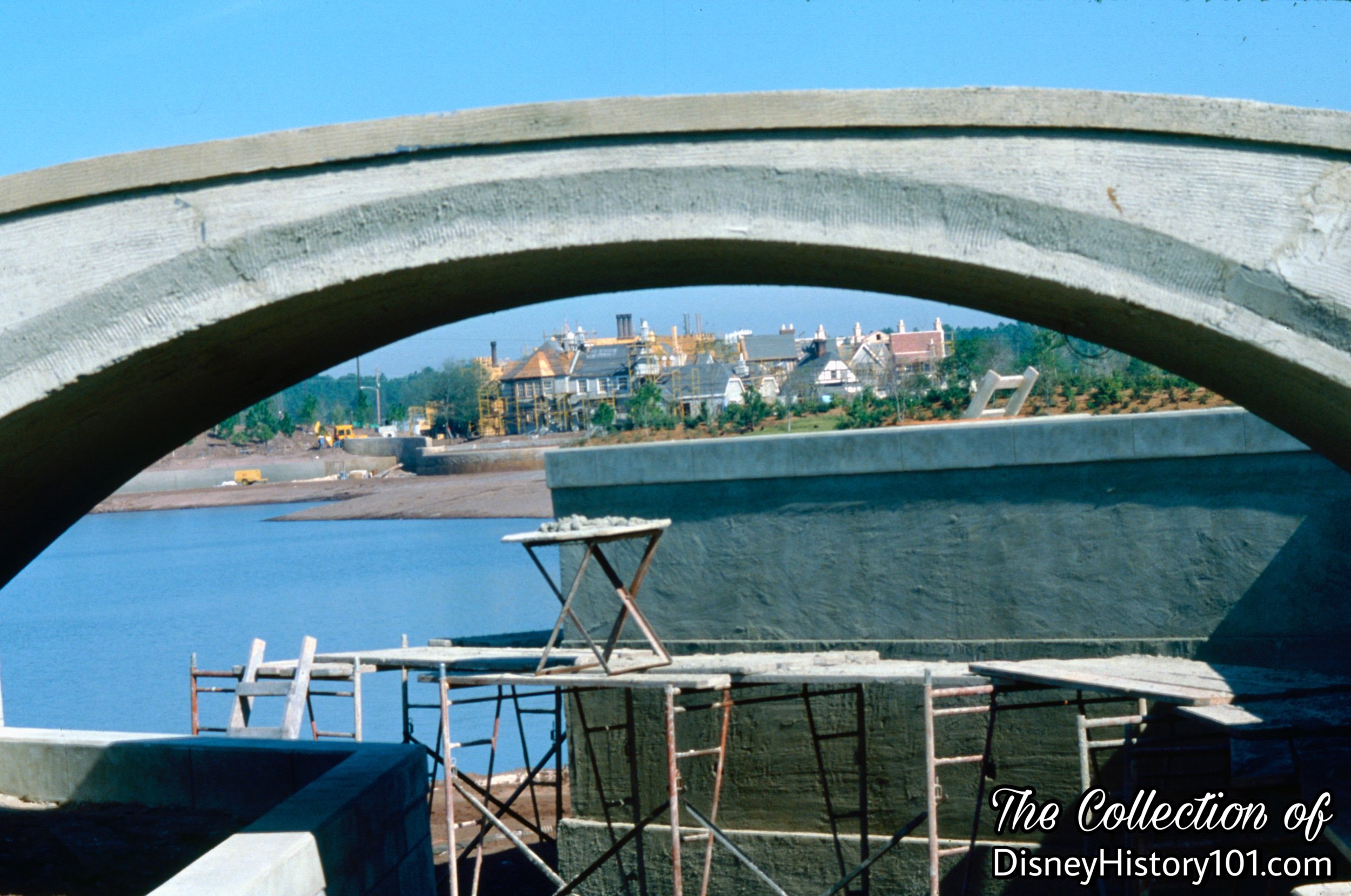
The United Kingdom World Showcase from across the World Showcase Lagoon.
Walt Disney World Shops would employ disciplines found at MAPO, supporting MAPO with in construction manufacturing. During construction some 750,000 - 800,000 square feet of concrete were poured in EPCOT Center.
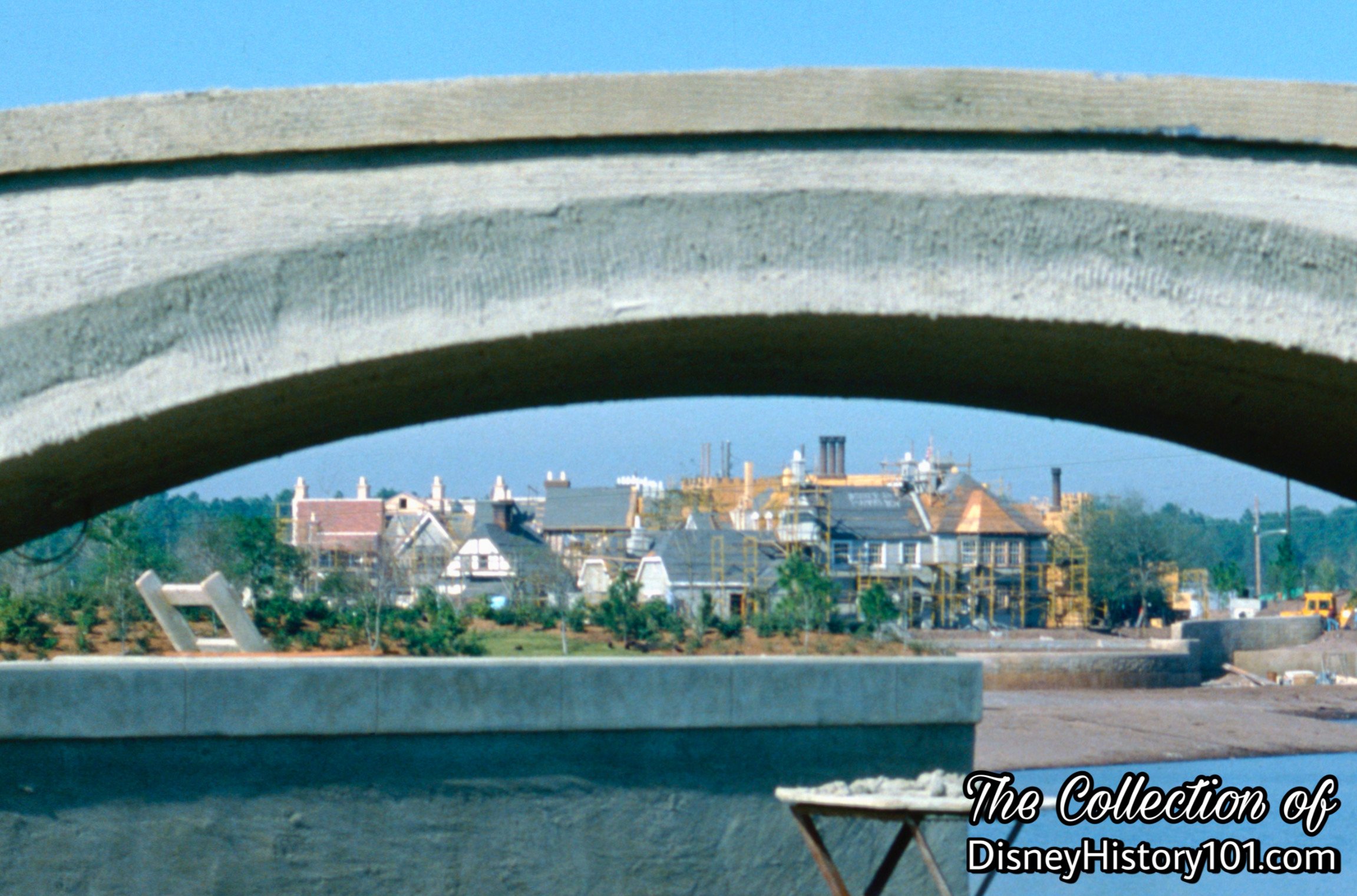
The United Kingdom World Showcase from across the World Showcase Lagoon.
The Showcase Area Development Landscaping Team was comprised of Don Hughes (Project Manager), Bill Coan(Resident Engineer), Jim Franklin (BVCC Project Manager), John Payne (PICO Coordinator), Joanne Fernholz (Project Business Administrator), and Dave Yanchar (Project Planner). [“Epcot Center - People Bring it to Life,” prepared by WED/MAPO, c.1980]
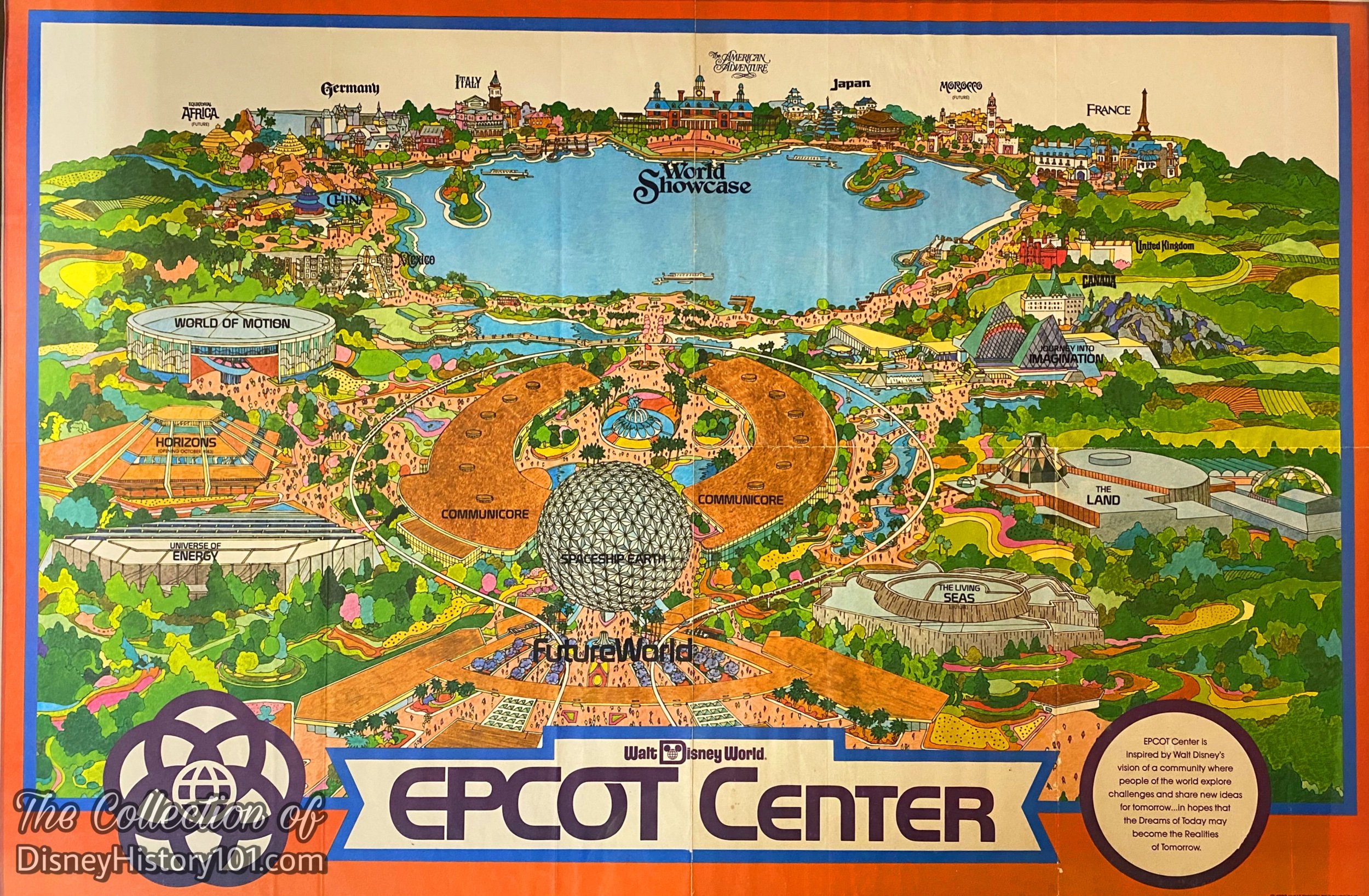
Note the future attractions among the details of this EPCOT Center map, c.1982.
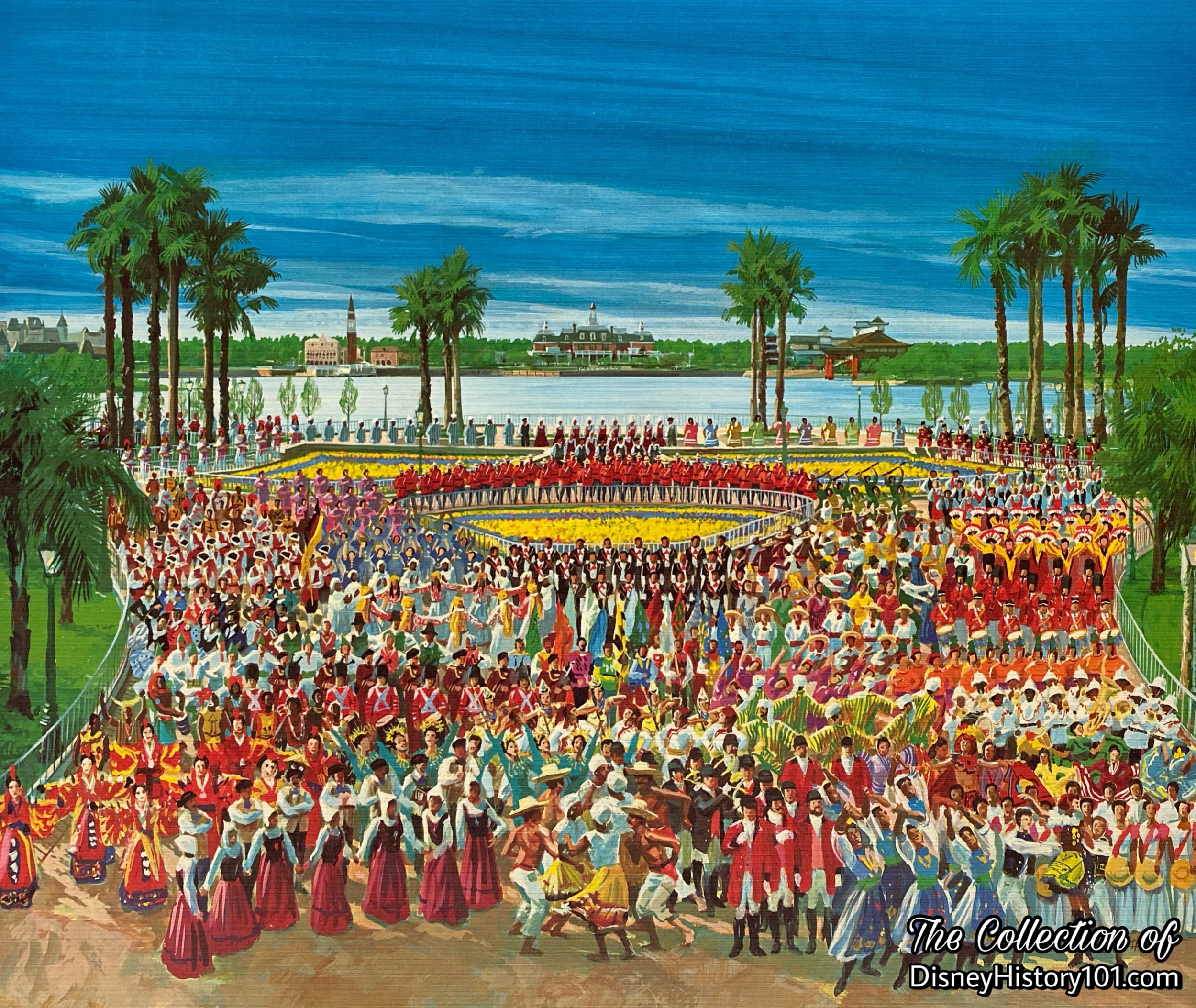
“We Did It” by Charles Boyer.
On September 16, 1981, Jack Lindquist firmly announced the official EPCOT Center Grand Opening date for EPCOT Center World Showcase United Kingdom Pavilion - Tuesday, October 19, 1982. On Tuesday, October 19, 1982, ceremonies were held at United Kingdom.
“The United Kingdom is Represented at the International Festival of Festivals”
Epcot Center World Showcase Festival Program Reception celebrated a unique Community of Nations on Saturday, October 23, 1982. The grand finale the evening's festivities, Le Carna-val de Lumière proudly proclaimed the Official Opening with the presentation of the world premiere of its International Festival of Festivals, a celebration of celebrations. Epcot Center's nighttime extravaganza of illuminations, water, sound, and fire was viewed from Showcase Plaza. This show, was to be an ongoing feature of World Showcase, using the new medium of computerized “magic-lantern” illumination to transport audiences to other times and cultures, inviting their imagination to engage in moments of festivity around the world.
Every society rejoices in what it feels most deeply about, inventing vivid rituals to celebrate important events in the cycle of life. Throughout the ages, the family of man has marked these joyous occasions with impressive public feasts and fêtes, dancing and music, parades and processions, pageants and exhibitions, spectacles and fireworks. These celebrations march from the past, through our lives today, and into the heritage of future generations. Through kaleidoscopic tapestries of light and sound, Le Carnaval de Lumière took audiences across the entire world and through twenty centuries to experience the rich diversity - and the commonality - of human celebration.
The roster of international entertainers is still impressive. The following groups were featured: All-American College Marching Band, West Point Glee Club, the Royal Irish Rangers (the last Irish infantry regiment in the British Army), Koleda (a highly professional group of dancers and musicians from Valenje, Yugoslavia), the Folkloric Dancers of Madrid (Spain), the Folklore Group Fribourg (Switzerland), Leyte Kalipayan Dance Company (Philippines), Areyto (The National Folkloric Ballet of Puerto Rico), Kelaa M'Gouna and Imintanout Folk Dancers and Musicians (Morocco), Ballet Folklórico Nacional de Mexico, The Boys Band of Meersburg (Germany), National Korean Folk Dance Company, Historic Standard Bearers of the District of Cori (Italy), "Lous Pastous Seignossais" Folk Ensemble (France), Finnish Folk Dance and Music Ensemble, "Katrilli" (Finland), Tivoli Boys Guard Band (Denmark), The National Folklore Troupe of Egypt, Universidad del Valle Folk Dance Group (Columbia), Lucnica (Czechoslovakia), The Shanghai City Song and Dance Ensemble (China), the Royal Canadian Mounted Police Musical Ride, The Royal Barbados Police Band, The Hunting Horns of Hoffalize and The Hunting Horns of St. Hubert (Belgium), COSAAN African Dance Company, and Odori Festival of Japan.
The 1982 program introduced The Royal Irish Rangers:
“As the last Irish infantry regiment in the British Army, the Royal Irish Rangers regard themselves as custodians of the proud heritage of all the gallant Irish regiments that preceded them. Organized in 1968 from an amalgamation of three famous old Irish regiments, the Royal Irish Rangers consist of a Military Band, Pipe Band with Drums, and a Corps of Bugles which, when combined, form a massed band of upwards of 60 performers. The military band in its green and silver uniforms, the buglers in their shakos, and the pipers dressed in saffron kilts create an impressive visual effect. The Rangers produce a variety of musical entertainments, including band concerts, parades, Irish dancing, and folk ensembles, as well as ceremonial fanfares and formations.”
![“Jack Lindquist, Vice President of Marketing for Disneyland and Walt Disney World… [headed] up our team responsible for lining up participants for EPCOT and World Showcase,” according to Disneyland LINE Magazine. By 1978, at least nine companies h](https://images.squarespace-cdn.com/content/v1/5b3d7f804eddec6e826be0c9/1670953625872-Z8V1HFN7WXCN3SK6S513/5CCDAF6B-F3EA-45D9-89D8-6A0C66EED647.jpeg)
“Jack Lindquist, Vice President of Marketing for Disneyland and Walt Disney World… [headed] up our team responsible for lining up participants for EPCOT and World Showcase,” according to Disneyland LINE Magazine. By 1978, at least nine companies had expressed an intention to participate in the United Kingdom World Showcase - British Airways, Selfridges Ltd., Bass Export Ltd., Dunbee-Combex-Marx Ltd., Associated Biscuits Ltd., Royal Doulton, British Rail, Guinness-Harp Corp., and Heraldic Promotions.
When Epcot Center opened in 1982, there were 34 merchandise locations, several located in the the United Kingdom Pavilion. The United Kingdom Pavilion opened with the Rose & Crown Pub & Dining Room restaurant, Pringle of Scotland shop, His Lordship shop, Toy Soldier shop, and Biscuit Barrel shop.
The Disney concept of theming is evident throughout Disneyland and Walt Disney World. Our shops complement the themed area and the merchandise. This is also carried over to Epcot Center World Showcase where we find souvenir shops that create tangible memories for Guests through Show and traditional merchandise of national origin.
It is notable to mention that during these early years, it was commonplace for merchandise locations to stock General Merchandise - non -character and/or decorative items, including film and sundries. In all, about 30% of merchandise had the Epcot Center logo, while the other 70% was general.
The aforementioned “The Spirit of EPCOT Center” c.1982 instructor’s orientation guide introduces the microcosm that is the U.K. Pavilion the following way:
“In a matter of only a few hundred feet, it’s possible to stroll from an elegant London square to the edge of a canal in the rural countryside via a bustling urban English street. In all, there are more than eight different architectural styles along the way, from English Tudor and Georgian to English Victorian.
The Rose & Crown Pub & Dining Room serves fish and chips, hot roast beef piled on an English muffin and steak and kidney pie. Bass Exports is the participant here.
Rocking horses, toys, baby carriages, dolls, all made in the U.K., are available in the Toy Soldier.
His Lordship sells brass blazer buttons, compasses, oil lamps, and a variety of other men’s accessories.
Pringle of Scotland offers a huge selection of styles and colors in men’s and women’s sweaters knitted by Scotland’s most famous maker.
The Queen’s Table specializes in Royal Doulton’s fine collector’s plates, figurines, and limited edition offerings.
The Biscuit Barrel looks something like Anne Hathaway’s cottage in Stratford-Upon-Avon, offering English cookies and other goodies.
Sharing Anne Hatahway’s cottage with the Biscuit Barrel , The Tea Caddy stocks English tea cups and other necessities.”
•Toy Shop (The Toy Soldier) was stocked with toys, dolls, cars, wooden toys and figures. As guests browse through the shop one of the first things they notice is the window display. The colorful designs provide yet another dimension to the Epcot Center experience. The animated display for the toy shop in the United Kingdom, provides a charm and craftsmanship that appeals to everyone. Display design also encompasses the fixtures and props which exhibit merchandise within the shop. Antique pieces from England, along with the specially designed displays, are part of the elements used to enhance the authenticity for the store.
•Men's Gift Shop (His Lordship) offered tobacco items, men's gifts and accessories.
•Tea Shop (The Tea Caddy), featuring Twining Teas carried teas and service accessories.
•Biscuit Shop (The Biscuit Barrel) sold an assortment of packaged biscuits, tins, cookies and jellies.
•Apparel Shop (Pringle of Scotland, Fine Woolens Since 1815), offered a full line of men's and ladies' wearables and accessories.
•China Shop (The Queen's Table), featuring Royal Doulton sold figurines, flatware and mugs.
•The Rose & Crown Pub & Dining Room featured traditional British fare, imported beers and ales over lunch and dinner.
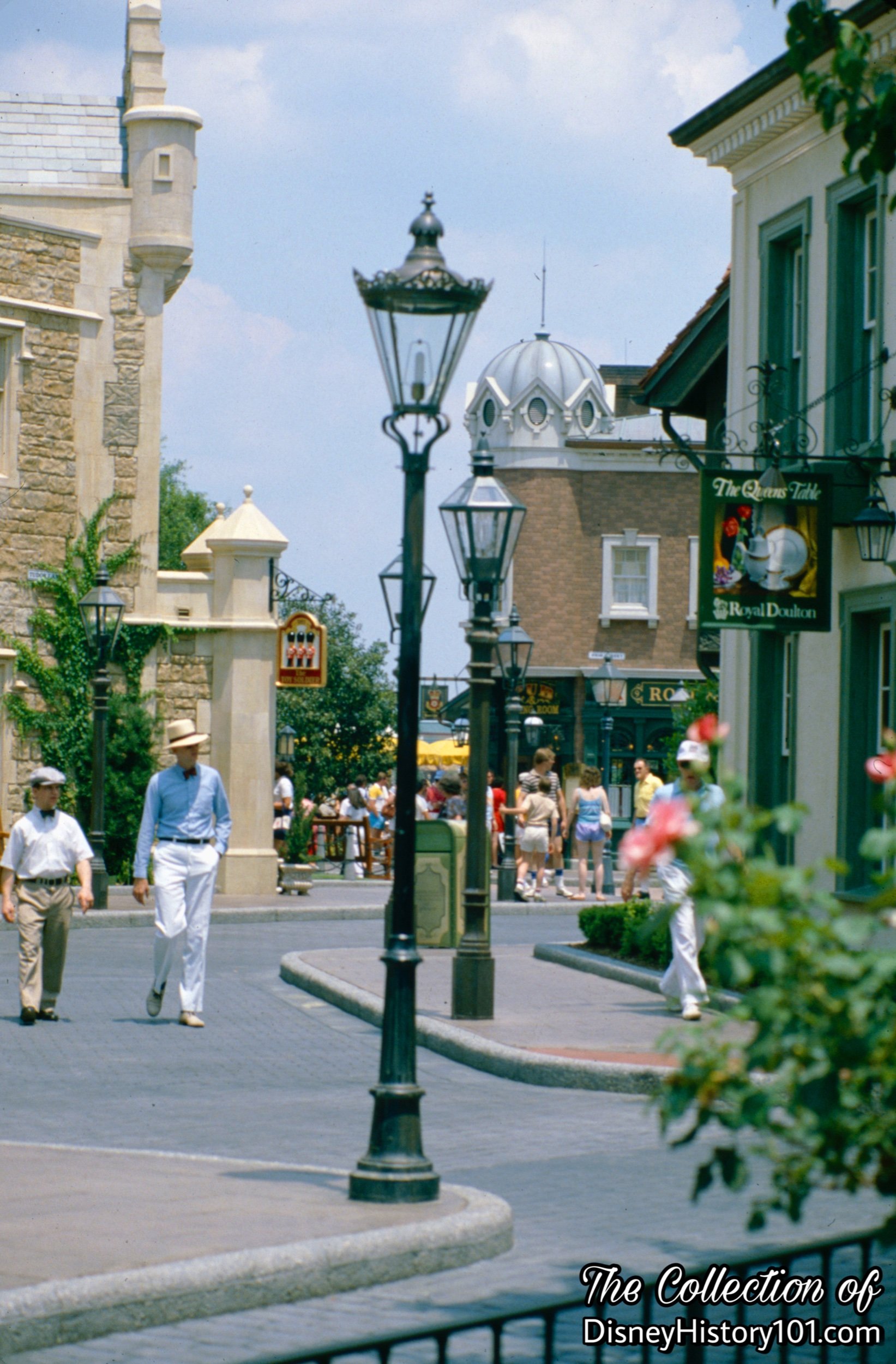
The United Kingdom World Showcase. Note the Queen’s Table, the Toy Soldier, and the Rose & Crown beyond the Character Lighting.
The area utilized two separate types of lighting: Character lighting, and Functional Lighting. Character lighting such as a chandelier, or kerosene lamp, was themed to enhance the overall appearance and complement the interior. These added to the show, but didn’t necessarily create enough illumination for operation. Functional lighting on the other hand, offered substantial light without being obvious, or distracting from the show.
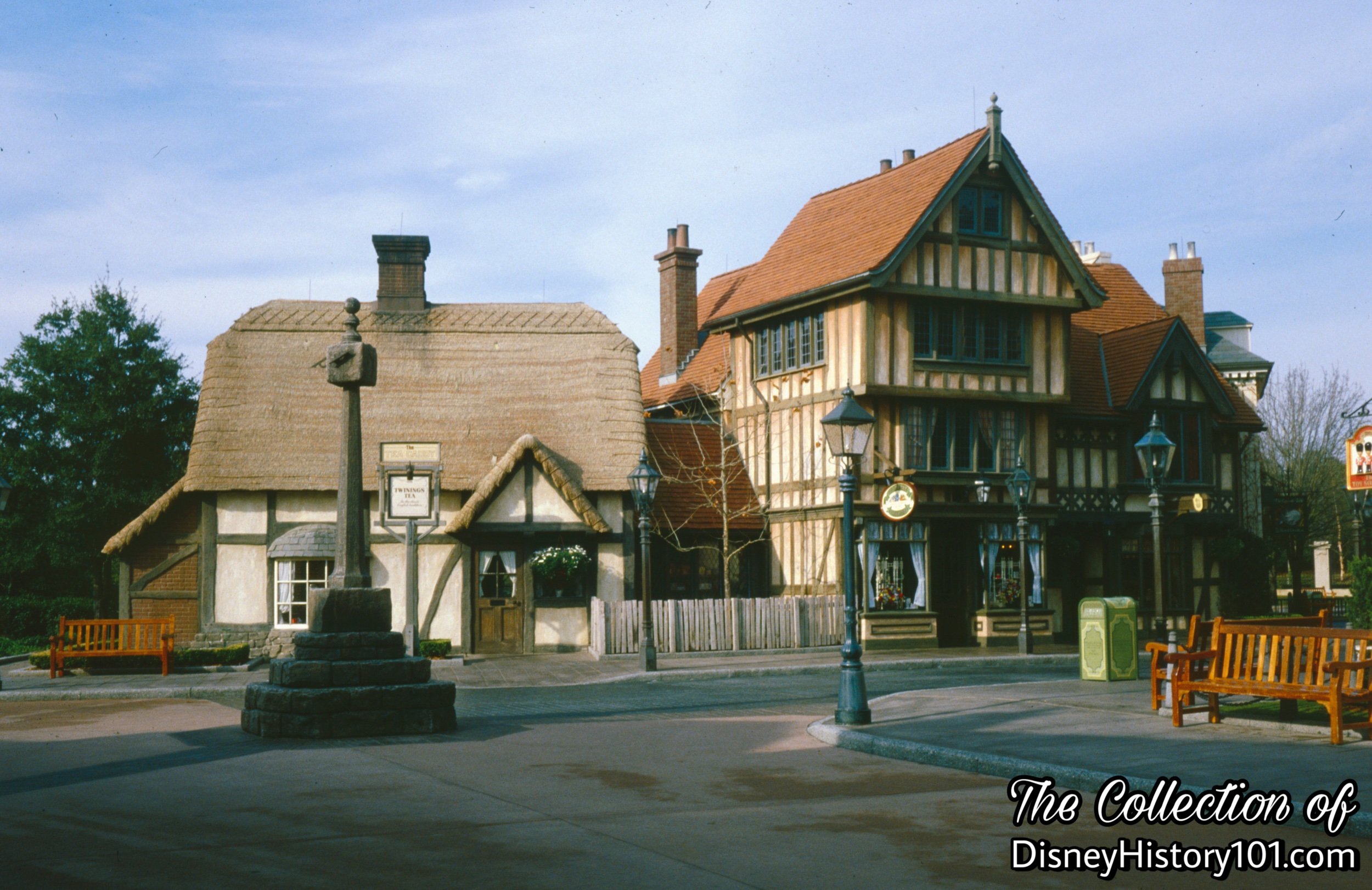
The Tea Caddy (left) in the United Kingdom World Showcase.
“EPCOT World Showcase Dining”
Epcot Center offered a sampling of delicious cuisine - a wide variety of dining experiences available for guests to savor in an international setting. Beer, wine and spirits were available at all table-service locations. Refreshing ice cream, beverages and snack carts could be found throughout Epcot Center.
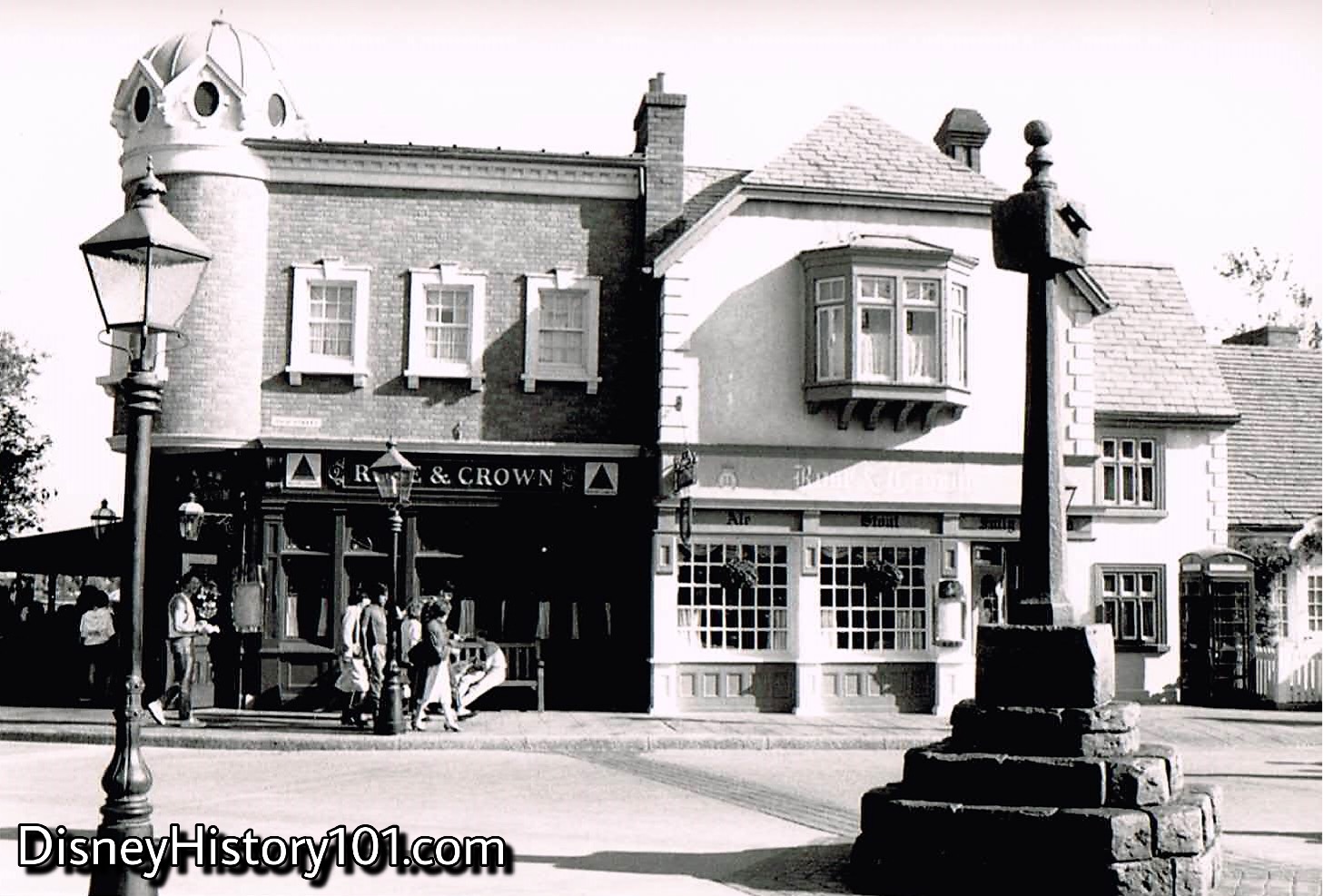
Rose & Crown Pub and Dining Room.
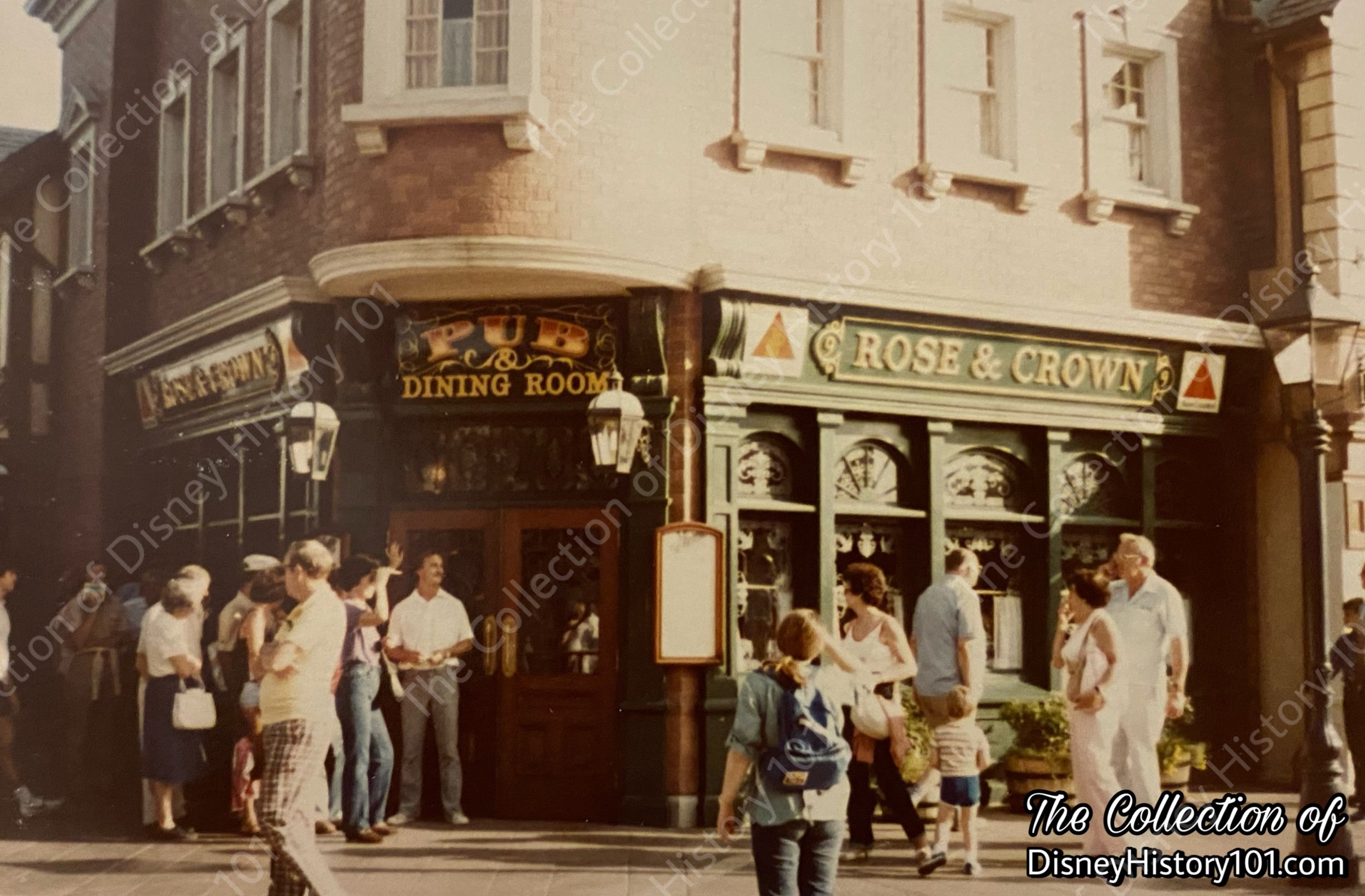
Rose & Crown Pub and Dining Room.
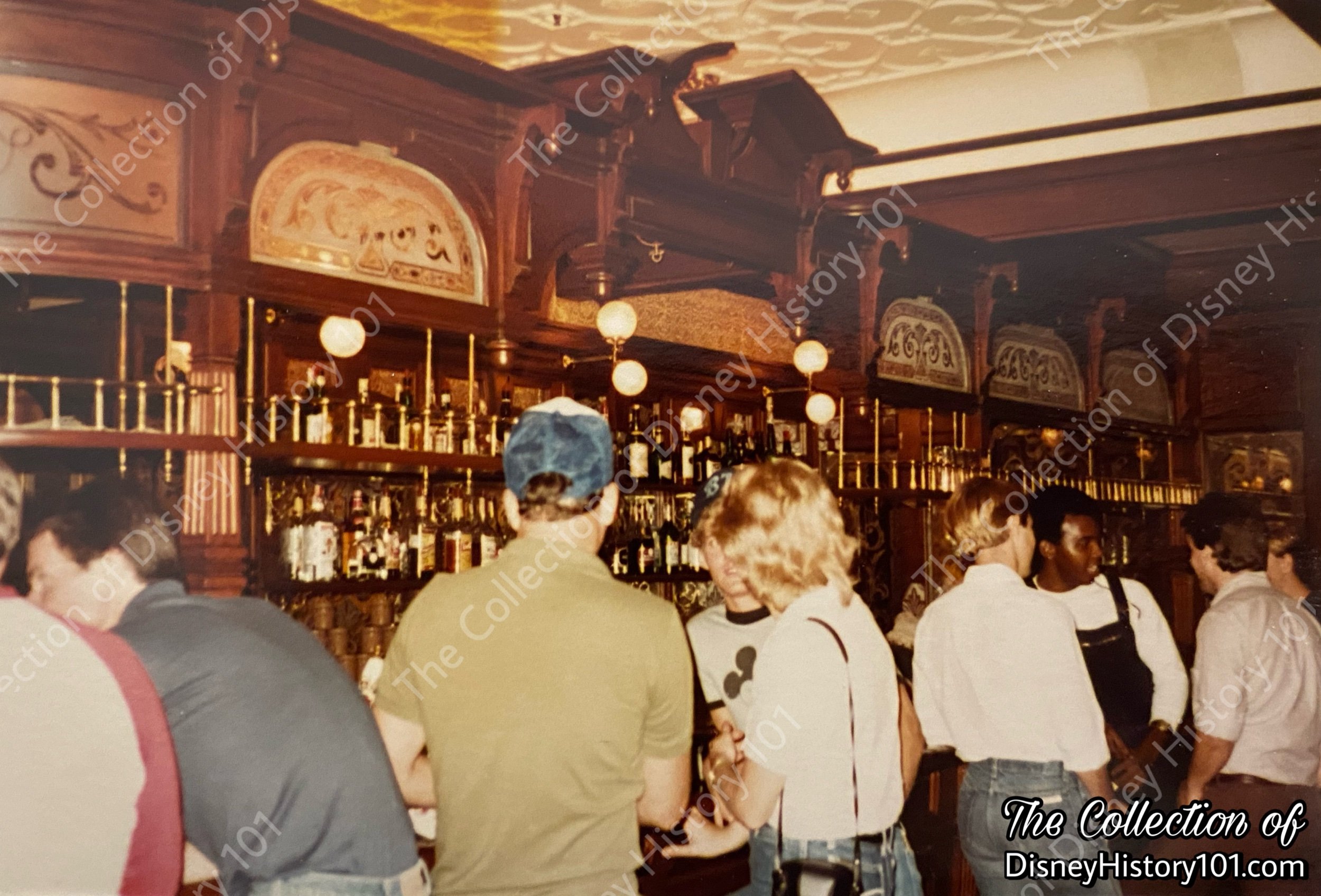
Rose & Crown Pub and Dining Room.
A Latin phrase is woven into the Pub sign - “Otium cum Dignatate,” (meaning leisure with dignity).
When asked what his favorite Park food is, Disneylander (and “55er”) Buzz Price answered: “Martinis at the English Pub in Epcot at Walt Disney World in Florida.”
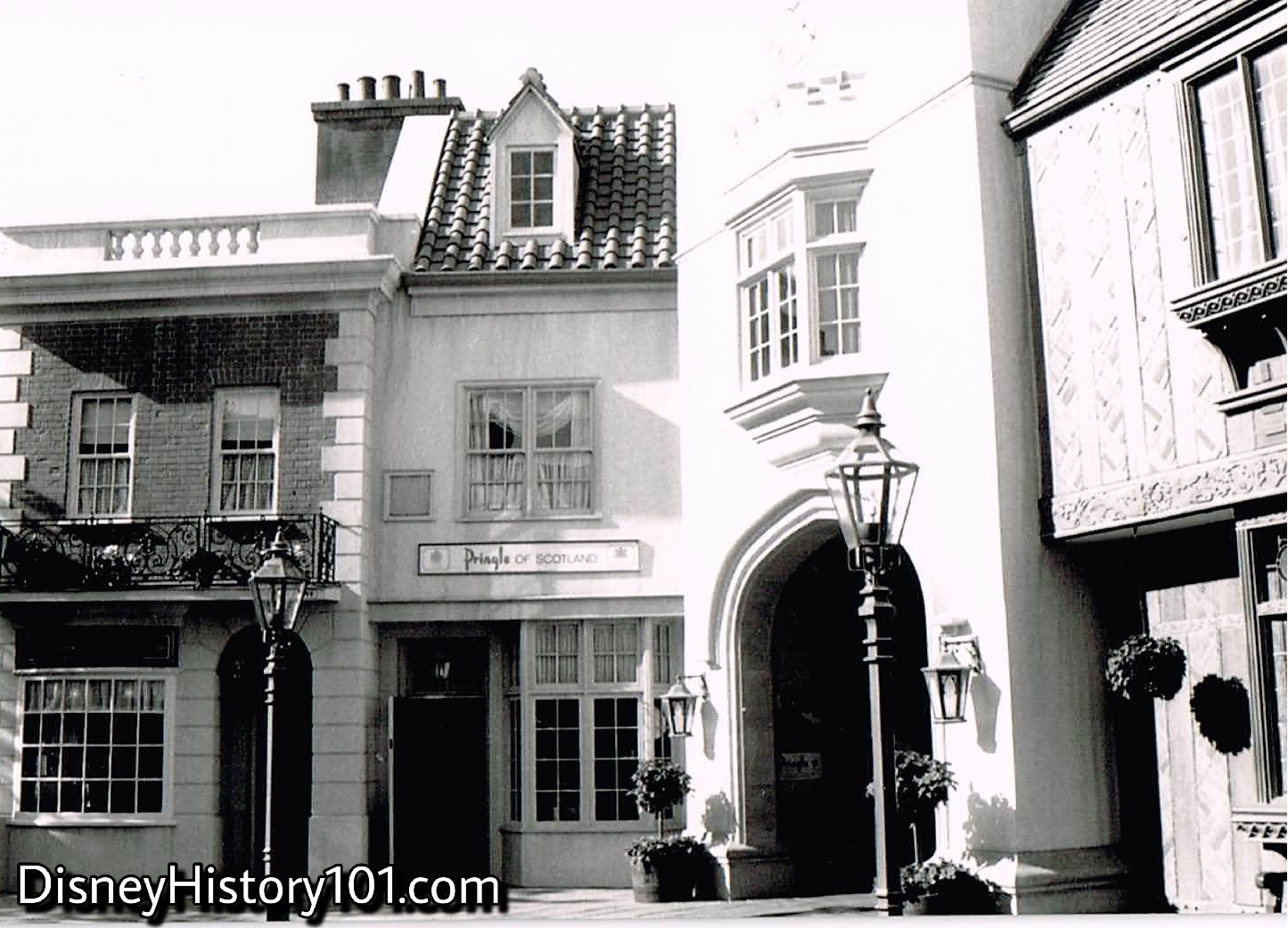
Pringle of Scotland.
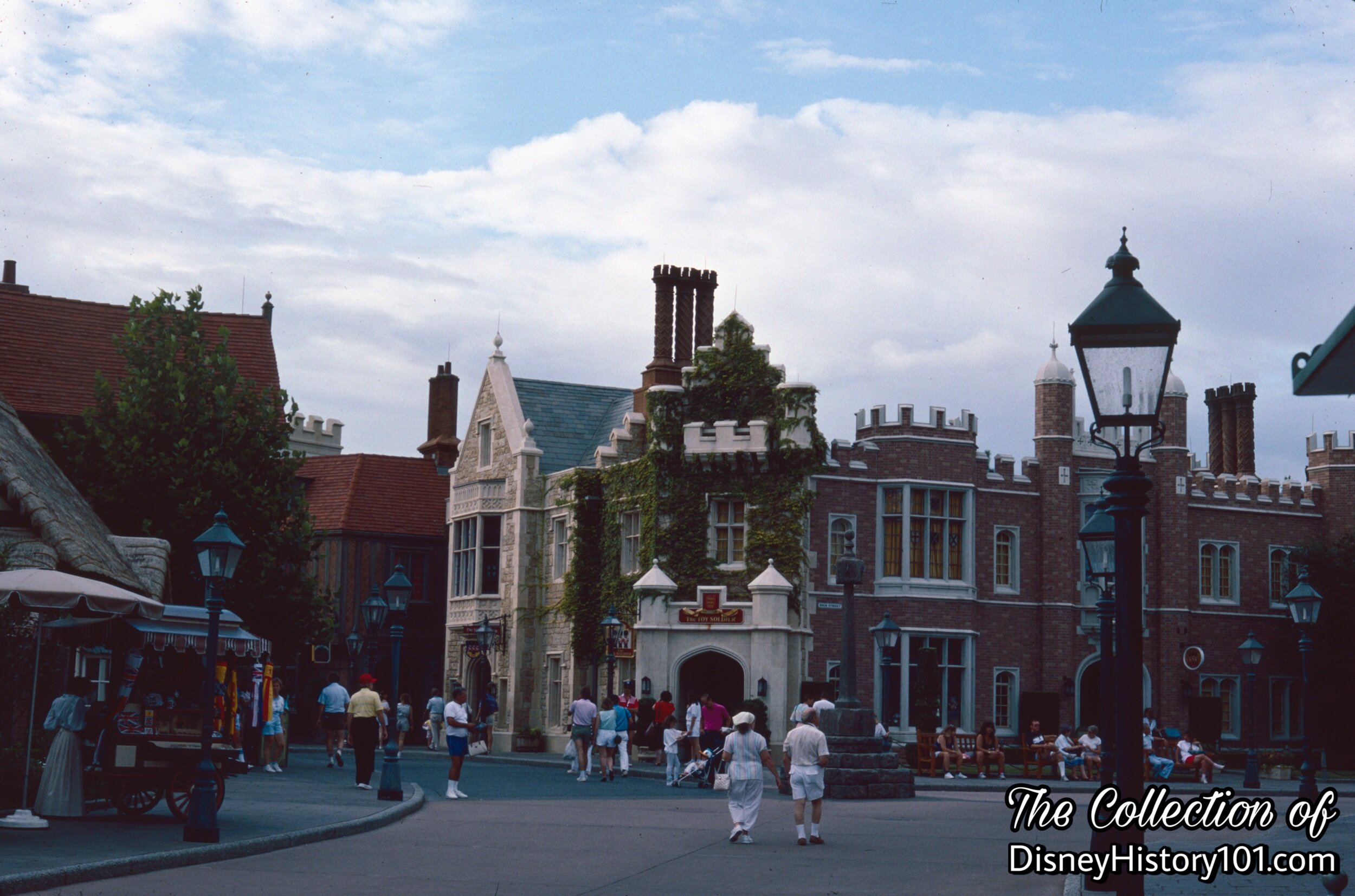
The Toy Soldier in the United Kingdom World Showcase.
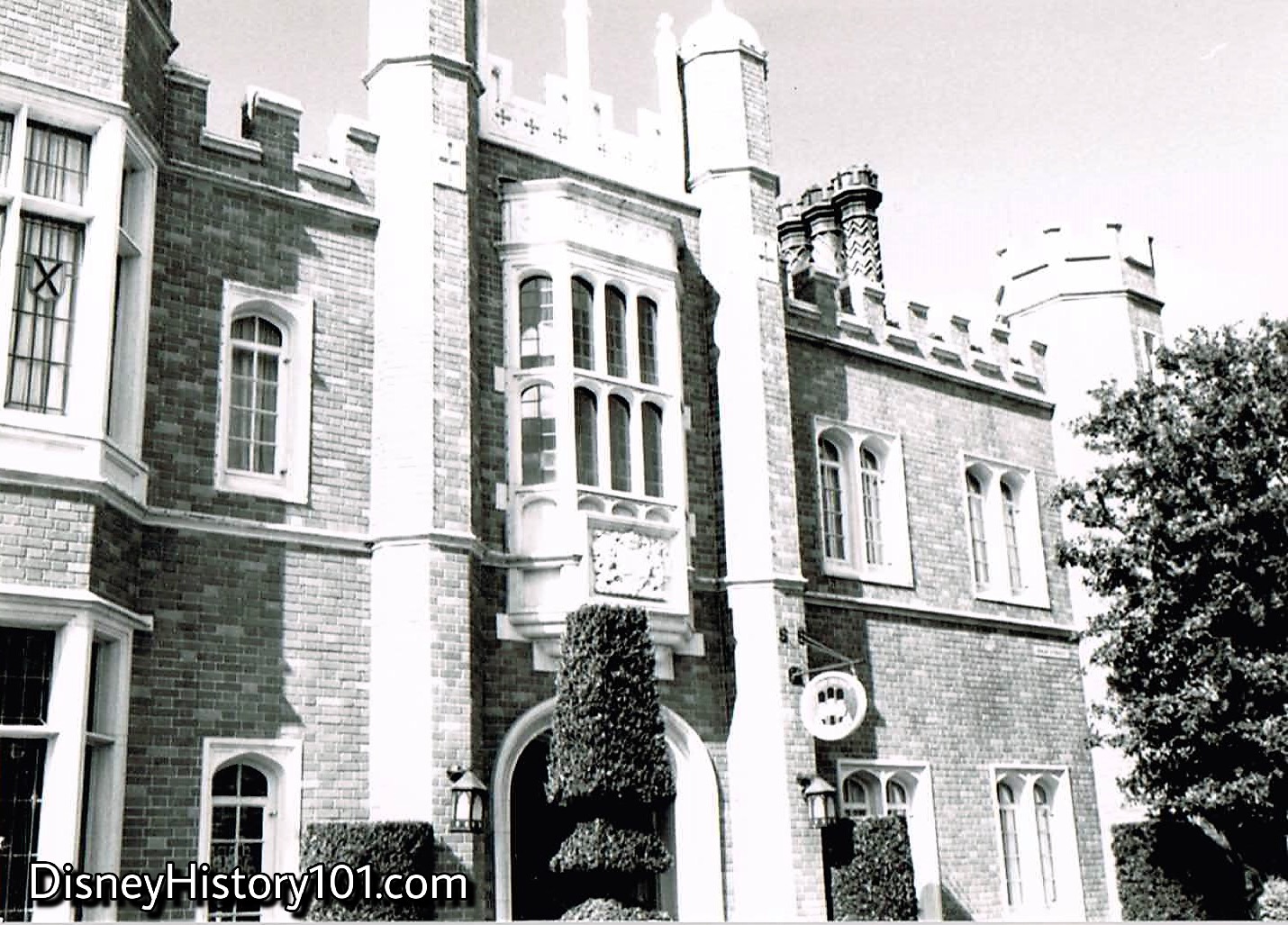
The Toy Soldier.
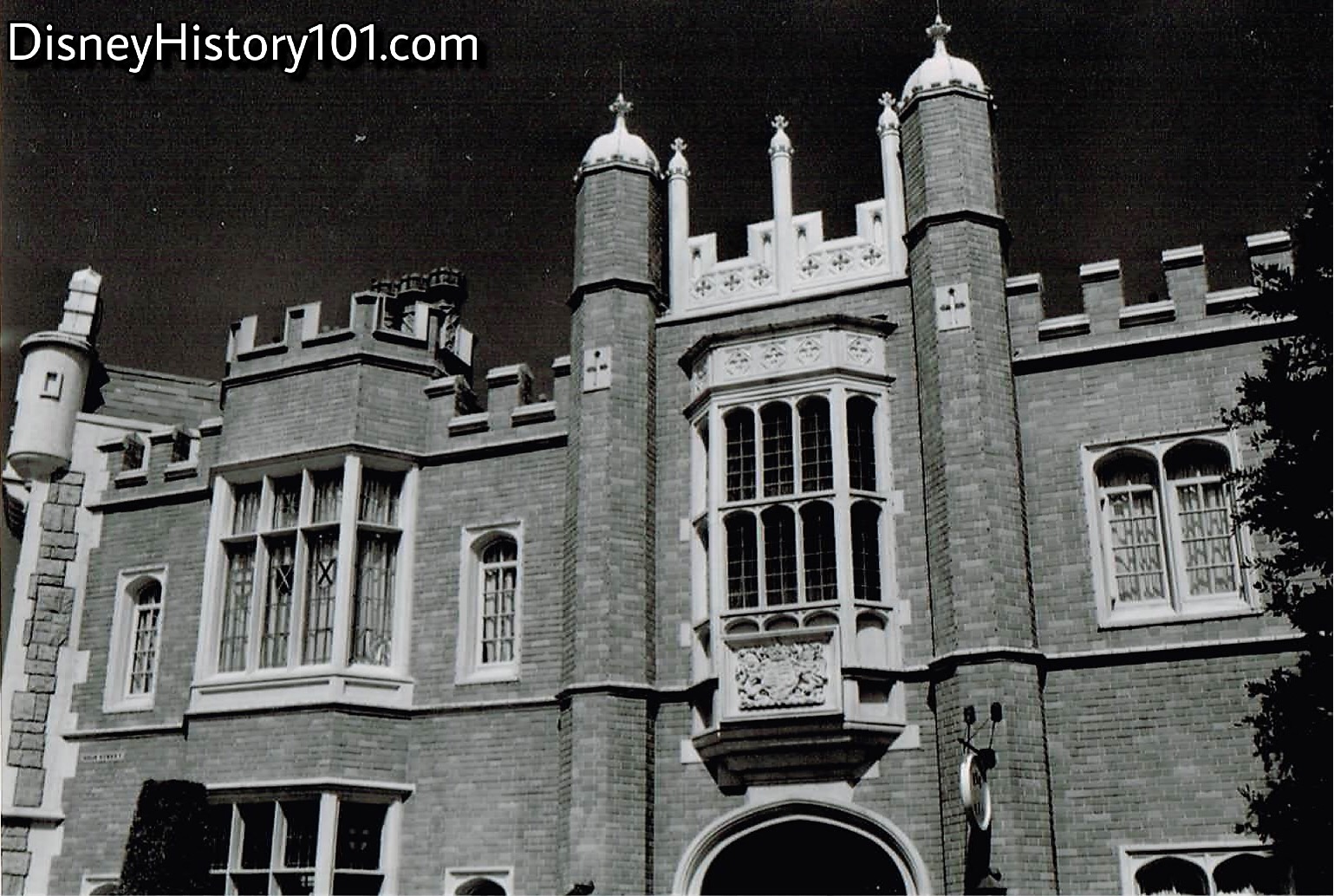
Towering turrets (ornamental corner towers) over The Toy Soldier.
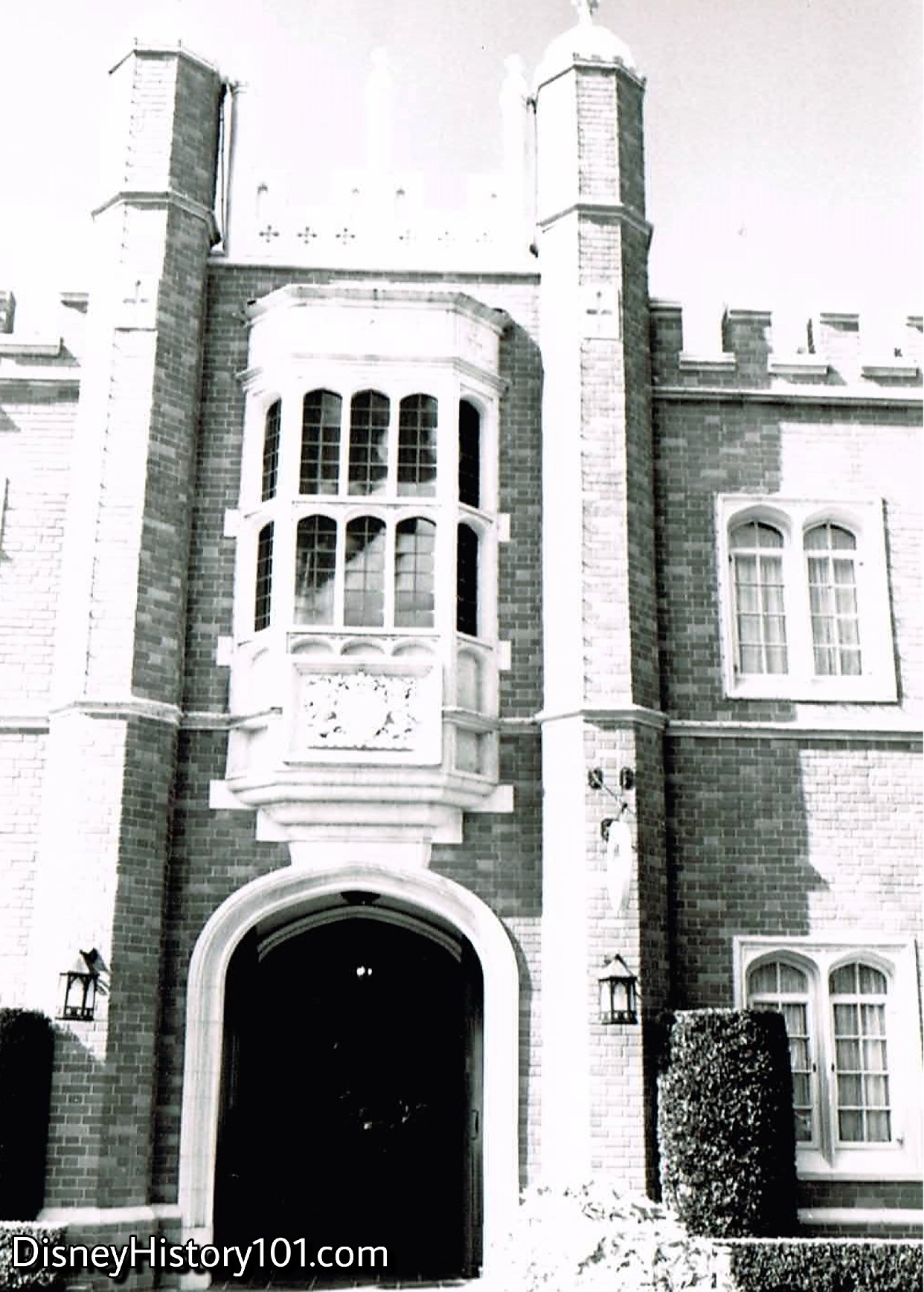
The Toy Soldier.
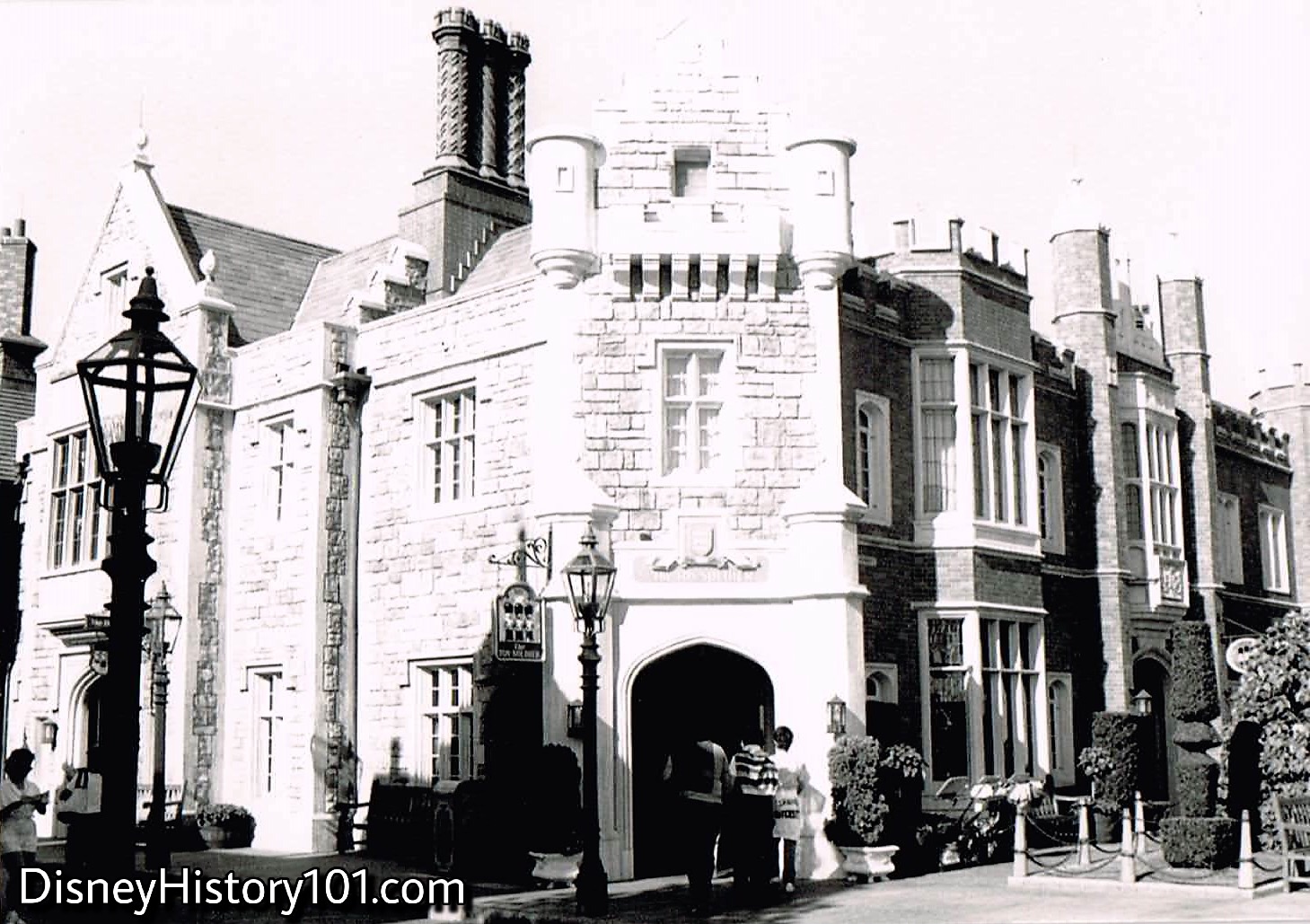
The Toy Soldier.
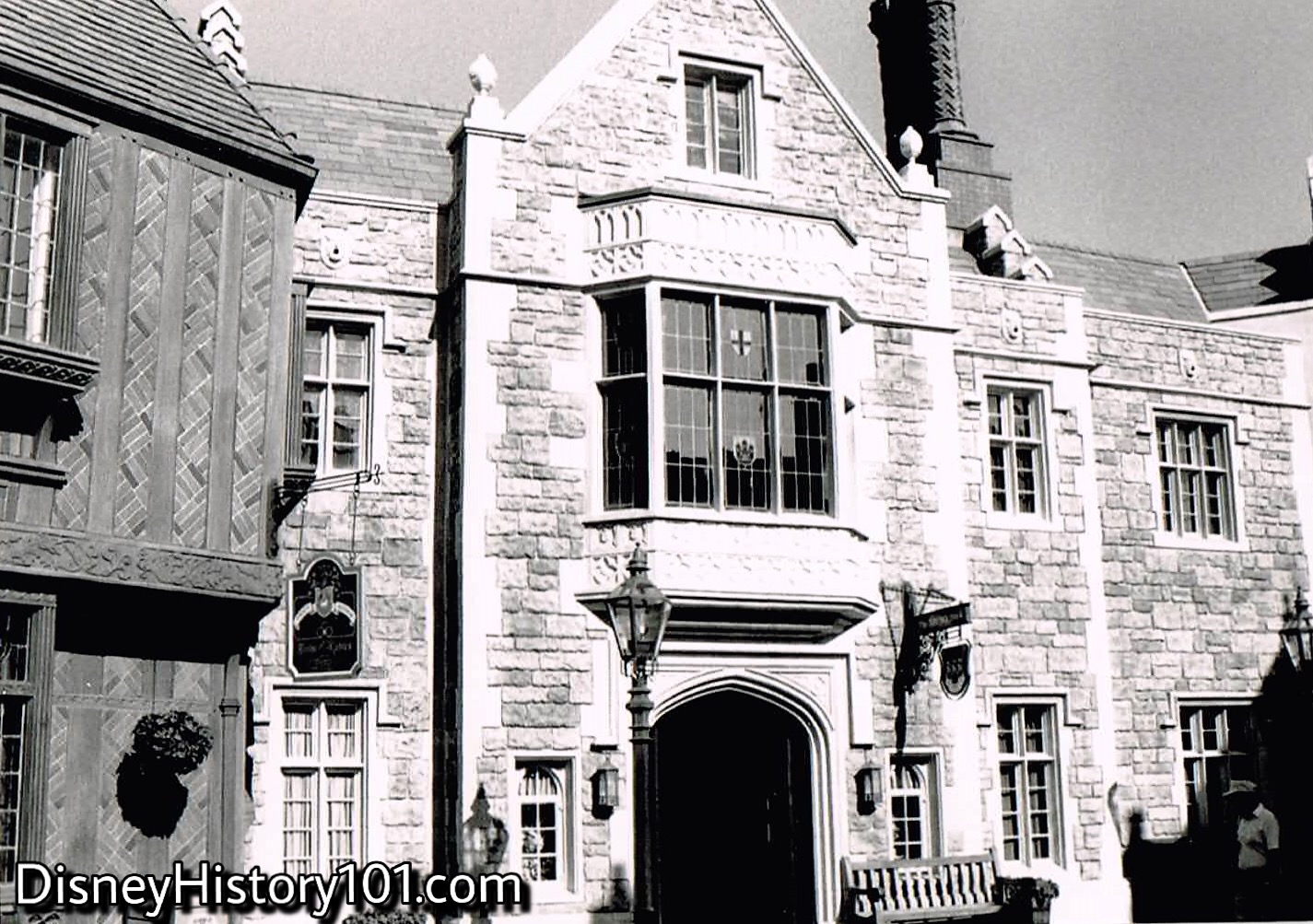
The Toy Soldier.
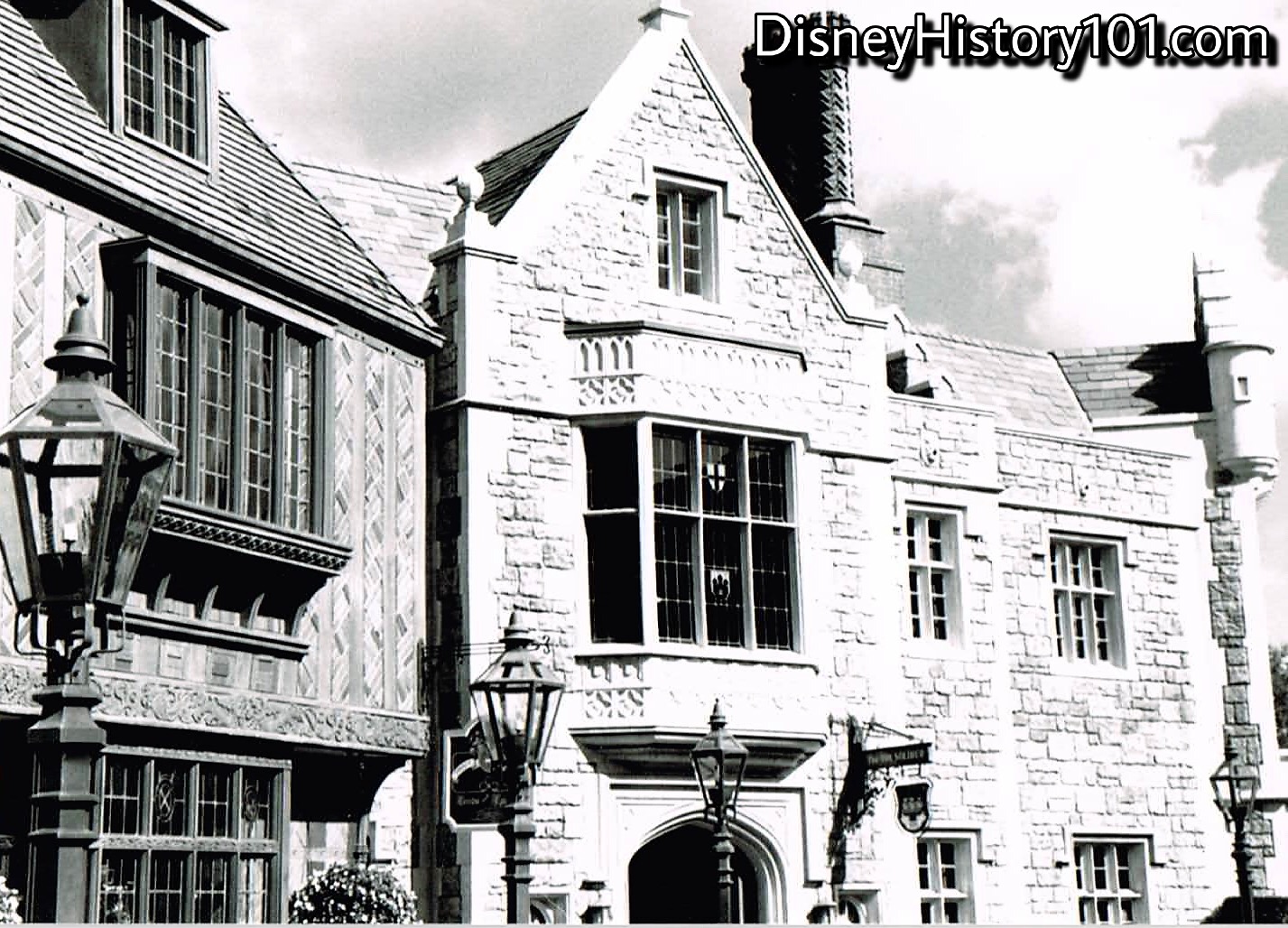
The Toy Soldier.
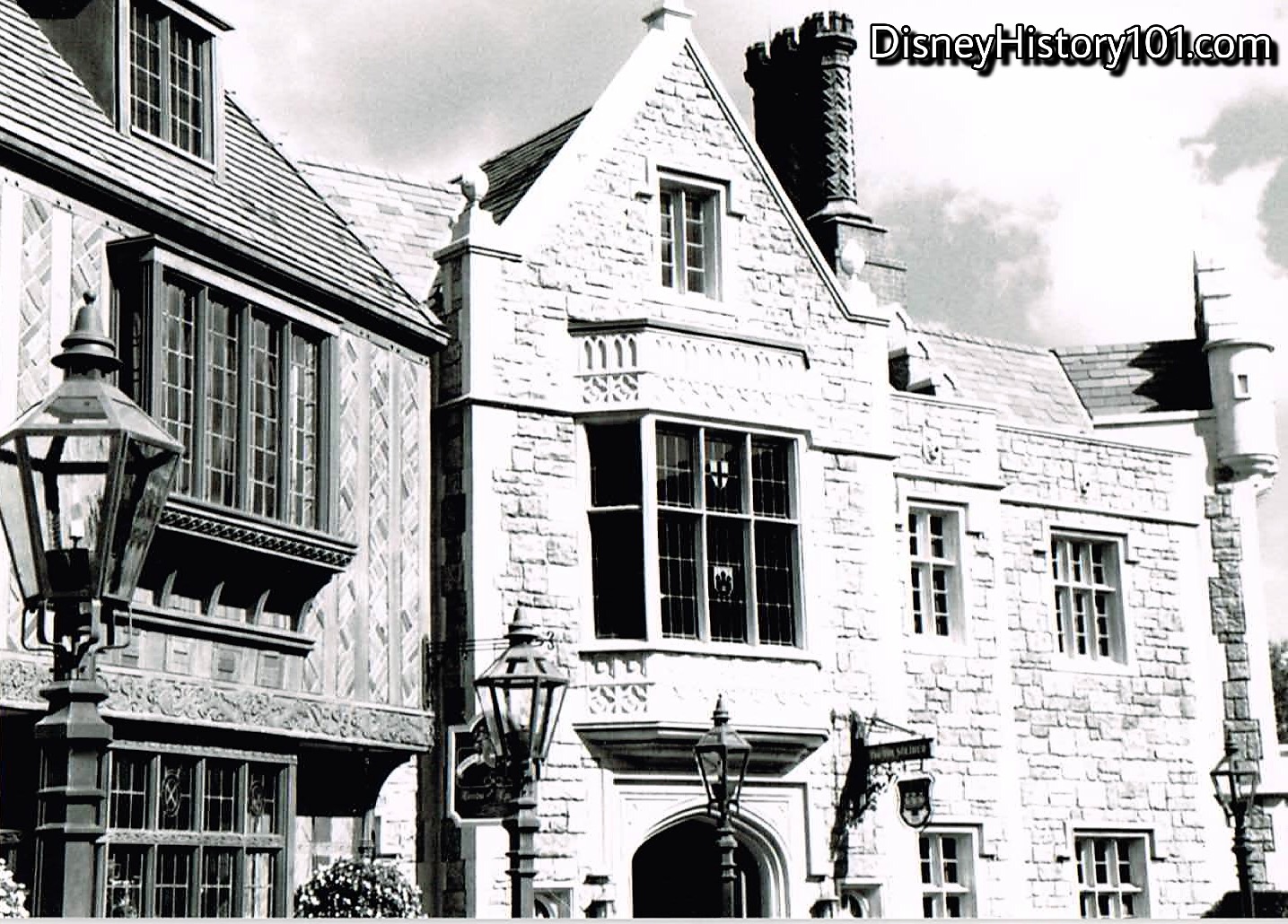
The Toy Soldier.
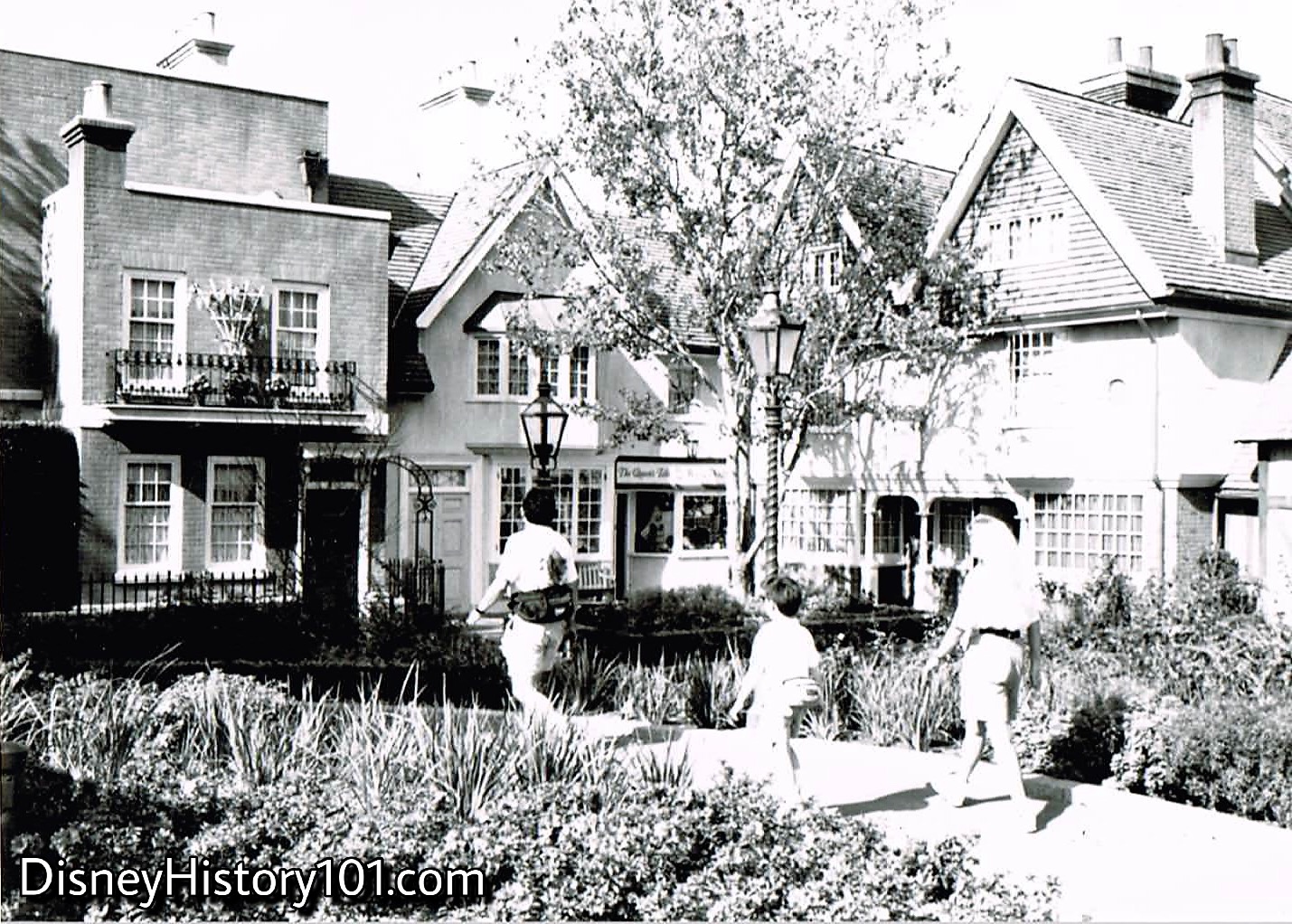
The Queen’s Table.
“The Queen’s Table”
Alison Nisbet, a second generation designer and costumer from The House of Nisbet visited The Queen’s Table fine china shop in Epcot Center’s World Showcase, Monday and Tuesday, September 19 and 20, 1983. Mrs. Nisbet introduced two new dolls recently added to the Royal Doul-ton Heirloom Collection: “H.R.H. Prince William of Wales” and “Princess Diana.” In celebration of Prince William's first birthday, Royal Doulton had created special limited edition “H.R.H. Prince William of Waler” and “Princess Diana” Heirloom dolls. Limited to 2,500 editions worldwide, “Prince William” was a cuddly one-year-old dressed in a typical Victorian-style sailor suit.
The House of Nisbet had taken its cue from the British press, which had closely watched Princess Diana’s choice of royal clothing for her royal heir and had duplicated the type of outfit in which she would dress him.
The House of Nisbet was internationally famous for its 8” high styrene dolls representing historical and contemporary royalty and other famous personalities. With over 100 portrait and costume dolls in the editions of “H.R.H. Prince William”, one of the brand new dolls that was added to the Royal Doulton Heirloom Doll Collection Nisbet Collection, the subjects ranged from a London Bobby through King Henry VIII to Ronald Reagan. The first House of Nisbet doll was created in 1953. 30 years later, it was still the extraordinary detail in costuming that marks dolls created by The House of Nisbet.
The association of Royal Doulton with The House of Nisbet brings together two extraordinary English traditions: Fine Bone China figure making and painting by Royal Doulton and fine doll costuming by The House of Nisbet. The end result: Royal Heirloom Dolls were a delight to today's doll collectors and admirers.
Nisbet Collection, the subjects range from a London Bobby through King Henry VIII to Ronald Reagan. The first House of Nisbet doll was created in 1953. Today, 30 years later, it is still the extraordinary detail in costuming that marked dolls created by The House of Nisbet.
The association of Royal Doulton with The House of Nisbet brings together two extraordinary English traditions: Fine Bone China figure making and painting by Royal Doulton and fine doll costuming by The House of Nisbet. The end result:
Royal Heirloom Dolls that are a delight to today's doll collectors and admirers.
Alison Nisbet autographed the days’ purchases from the famous line of Royal Doulton Heirloom dolls. Collectors and connoisseurs of Royal Doulton Heirloom dolls were able to learn, on a firsthand basis, what went on behind the scenes in the making of the treasured and sought-after collector’s items.

The Queen’s Table.
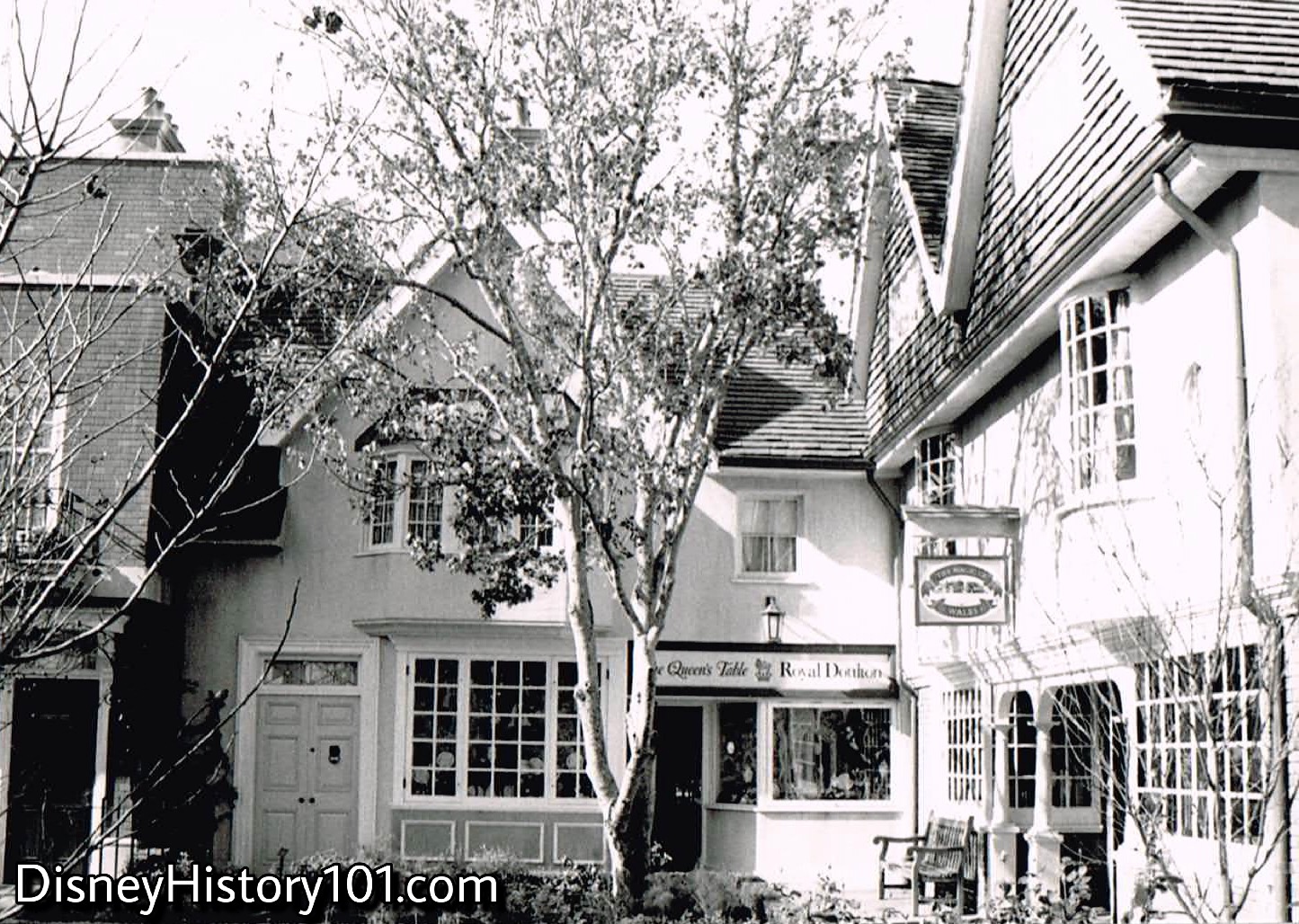
The Queen’s Table.
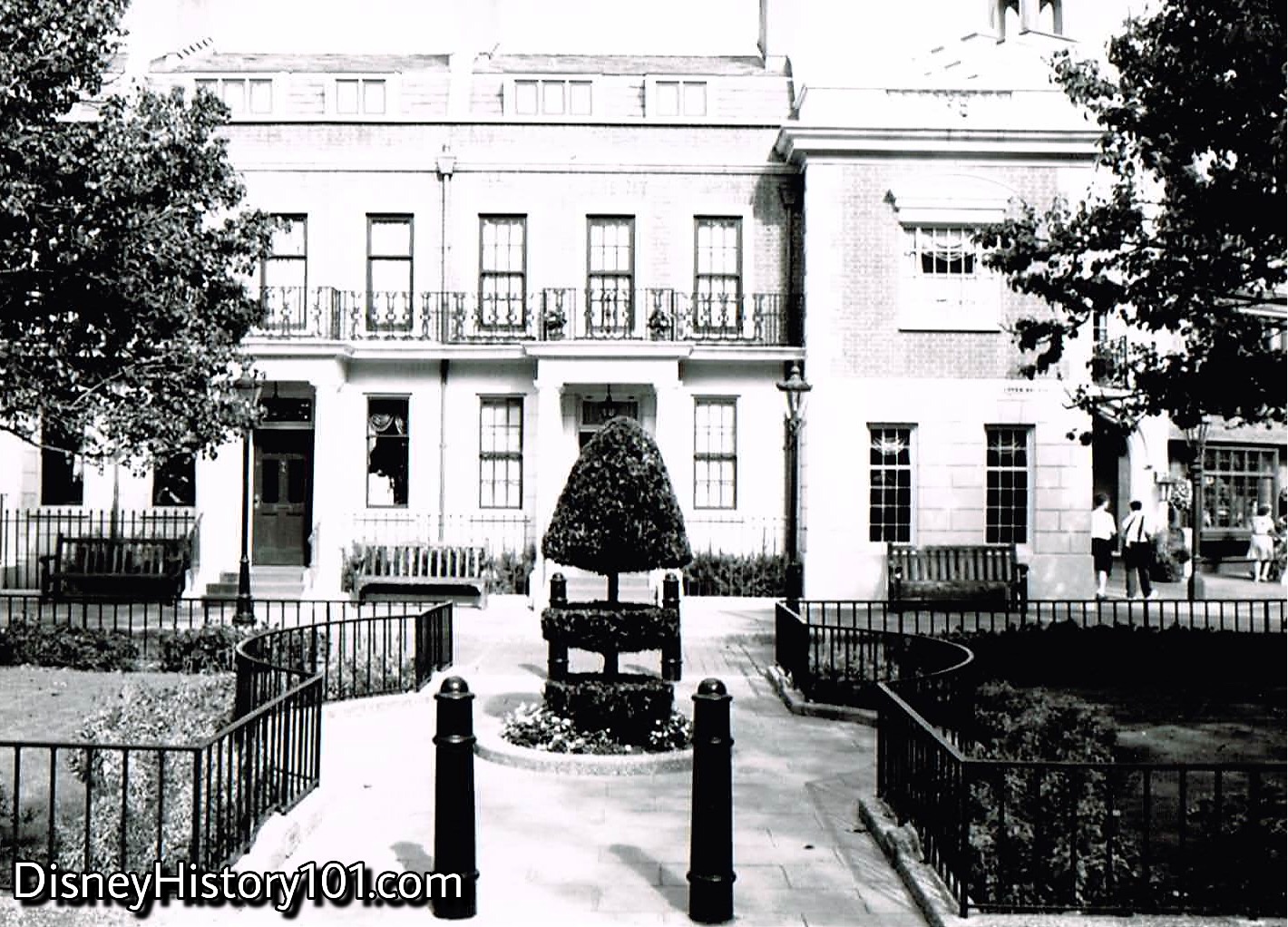
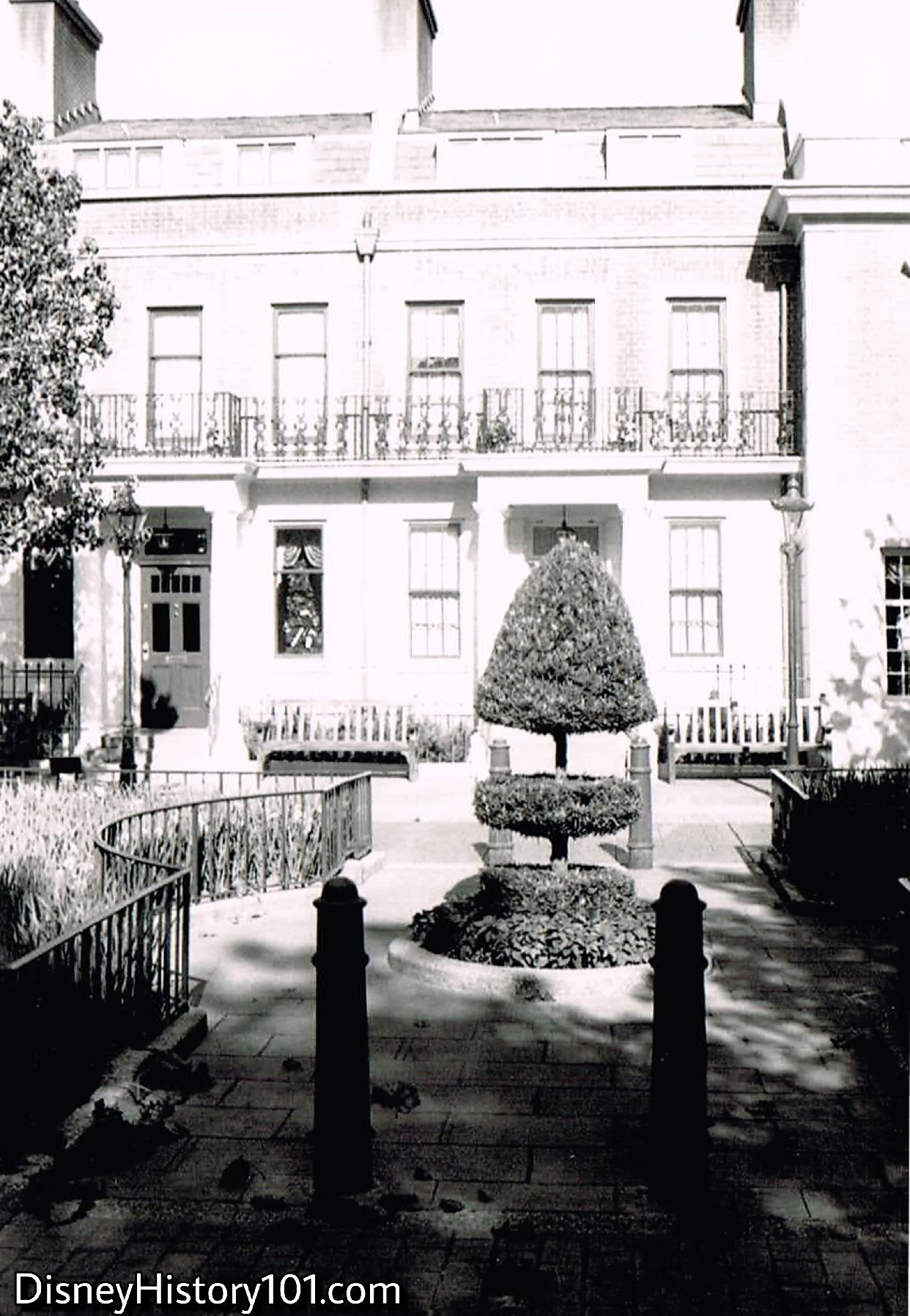
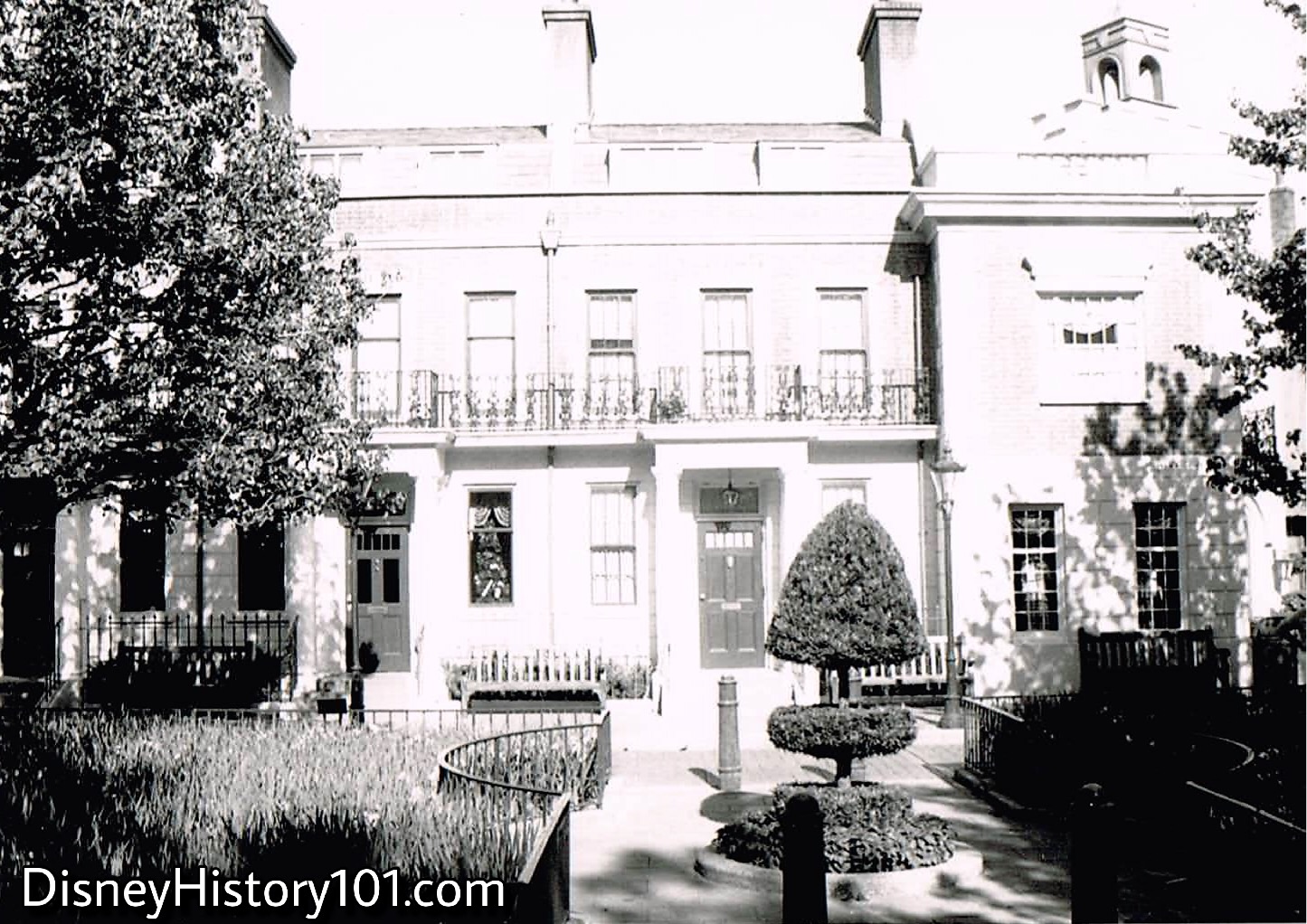
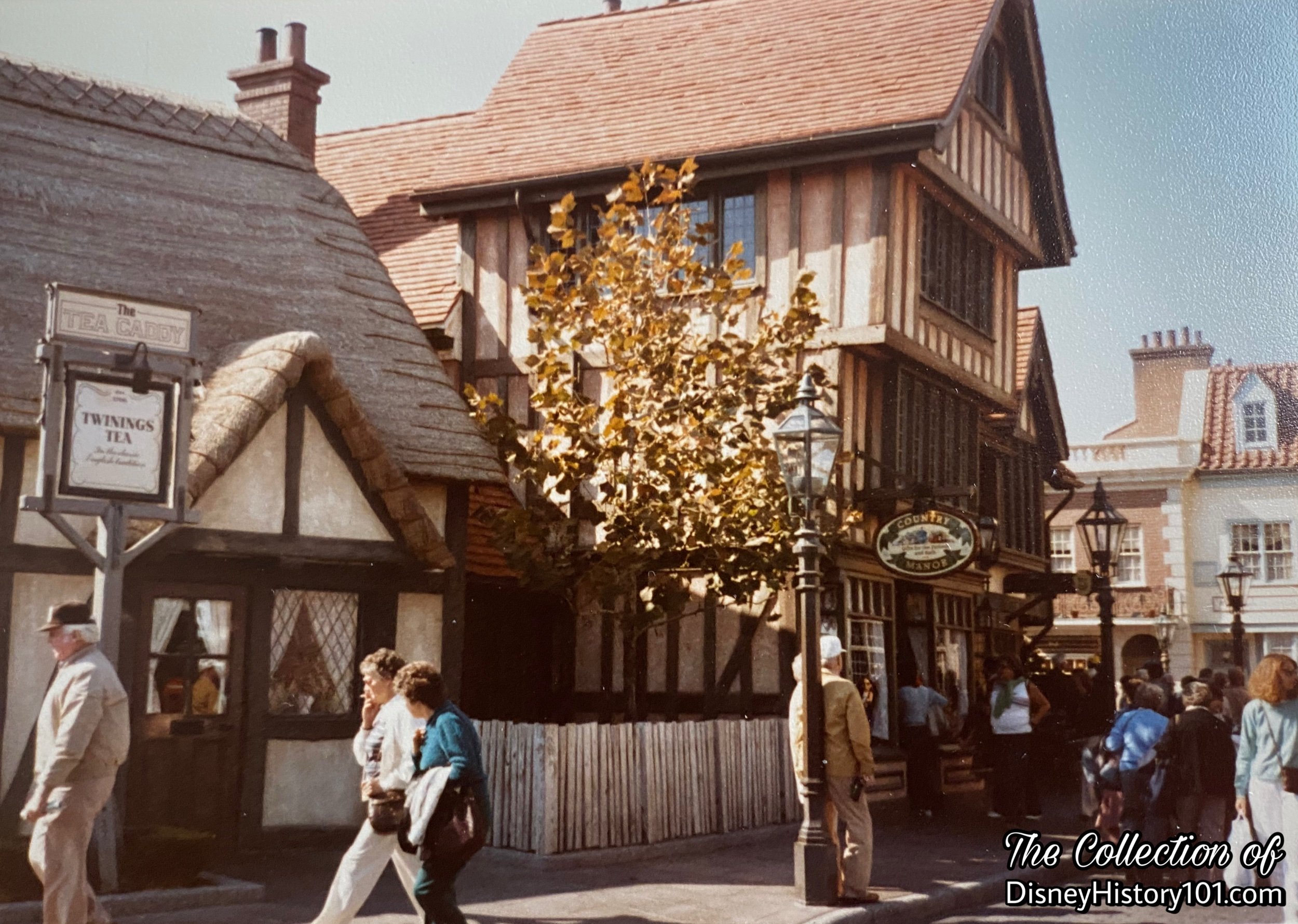
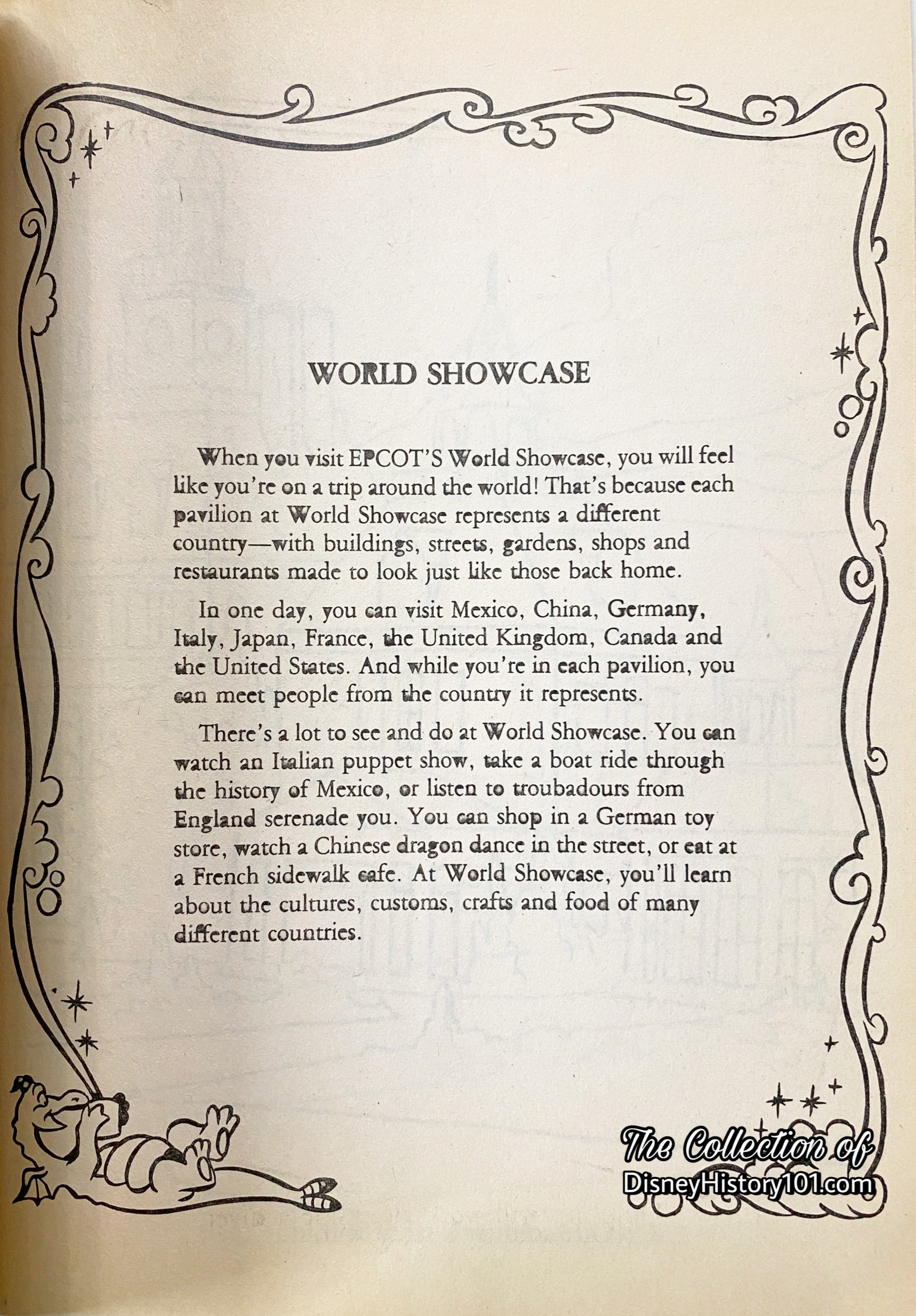
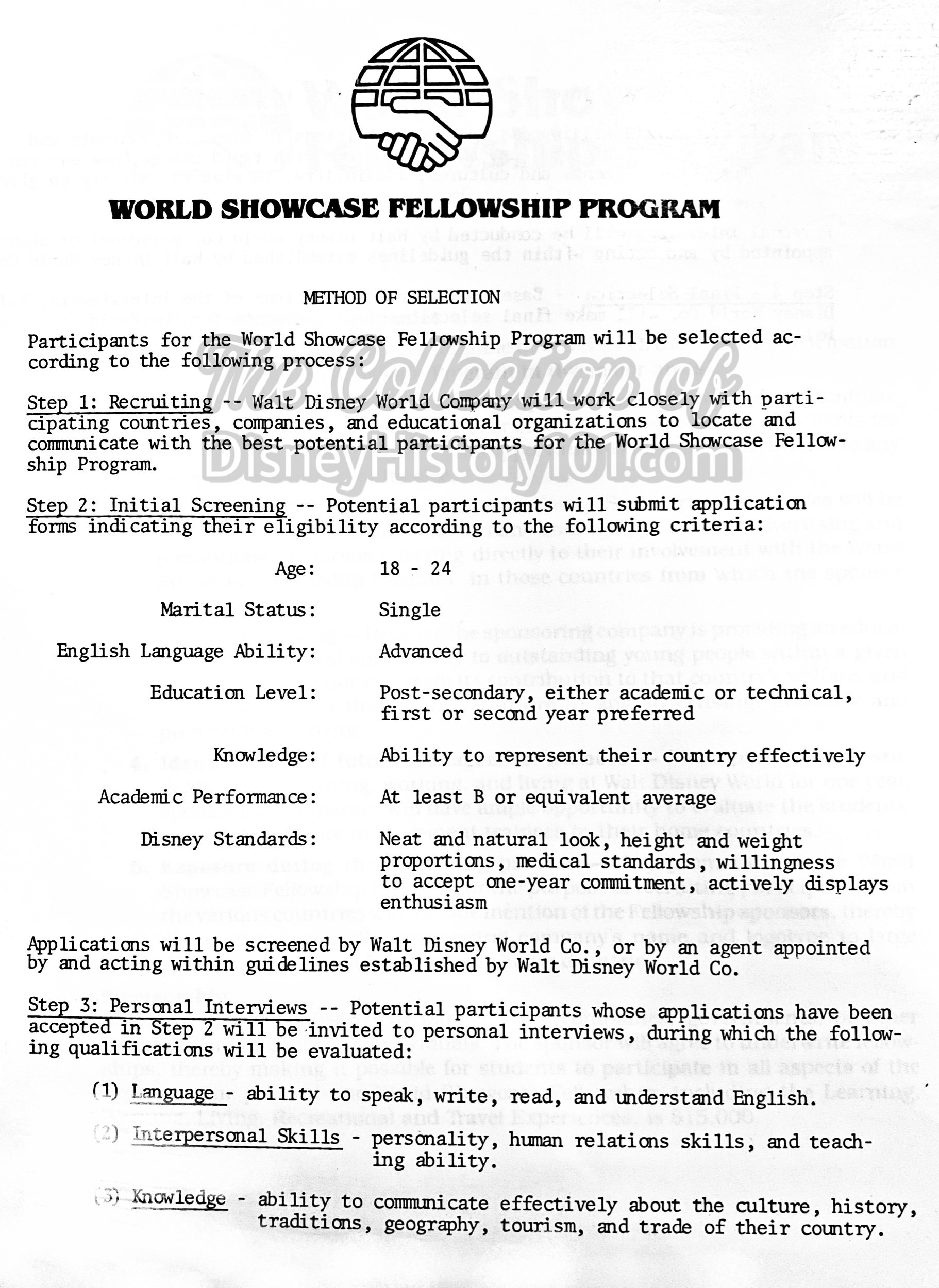
In 1978, Card Walker (at the World Congress of the International Chamber of Commerce) announced: “The World Showcase will be a community of nations, the only permanent international exposition of its kind anywhere, focusing on the culture, traditions, tourism and accomplishments of people around the world… a model for true people-to-people exchange, the World Showcase will offer participating nations an opportunity to send their outstanding young adults to operate the attractions, shops, restaurants and exhibits of their pavilions. And these young people who will work, play and learn together for a period of up to one year will help to generate greater international understanding.” The Epcot World Showcase would truly be “a showcase of the world…and a showcase to the world.” Here ”the nations of the world will stand side by side…” and “meet on a coequal basis to communicate on a ‘people to people’ exchange with the more than 12 million visitors.” Here ”the nations of the world will stand side by side…” and “meet on a coequal basis to communicate on a ‘people to people’ exchange with the more than 12 million visitors.”
According to one Pre-Opening Day c.1982 orientation instructor’s guide: “The familiar faces of the Disney Characters won’t be there.” Instead, EPCOT Center Cast Members would be referred to as ambassadors of “the spirit of EPCOT Center,” since that very namesake orientation class. Without them, EPCOT Center would just be one magnificent stage. This ambassadorial Cast (in understanding the Epcot dream) would become “the link between the shows and the guest.” According to a souvenir guide, the EPCOT Center Hosts and Hostesses were ambassadors “of happiness, hope, optimism and goodwill.” According to one prospectus: “In this true people-to-people concept, sponsoring nations will be invited to send their outstanding young adults to operate the attractions, shops, restaurants and exhibits of their pavilion.” Proving this were the authentic Royal Irish Rangers, Pearly Kings and Queens, and one “William Shakespeare” that helped open the World Showcase on October 1, 1982. Through the World Showcase Festival Program, Epcot Center guests were entertained by performers from all over the world. These “cultural ambassadors” included entertainers representing Greece, Africa, Cambodia, the Dominican Republic, Yugoslavia, Israel and Norway.
The international guests would soon find that the United Kingdom World Showcase Cast Members were knowledgeable and prepared to answer questions about the pavilion and the country itself, and would even provide foreign language assistance, and guest literature in many languages. As early as June of 1980, it was divulged: “Young people will be brought over from their native country on a combination work and education program. Courses with college credit will be conducted at Walt Disney World University.” [“Orlando-Land!” published for June of 1980] All of these would contribute to a community of nations standing side by side. As Ken Anderson once noted, “I see people getting to know one another better on a scale, and in an environment that makes our similarities more important than our differences… a tremendous way of shrinking the world even further.”
The author of one newspaper supplement recognized that while “each of the pavilions features a film, live show or entertainment presentation designed to spotlight the history and culture of the sponsoring country… it's the aroma of foreign foods and the accented speech of the pavilions’ hosts and hostesses that lend an aura of authenticity to World Showcase.”
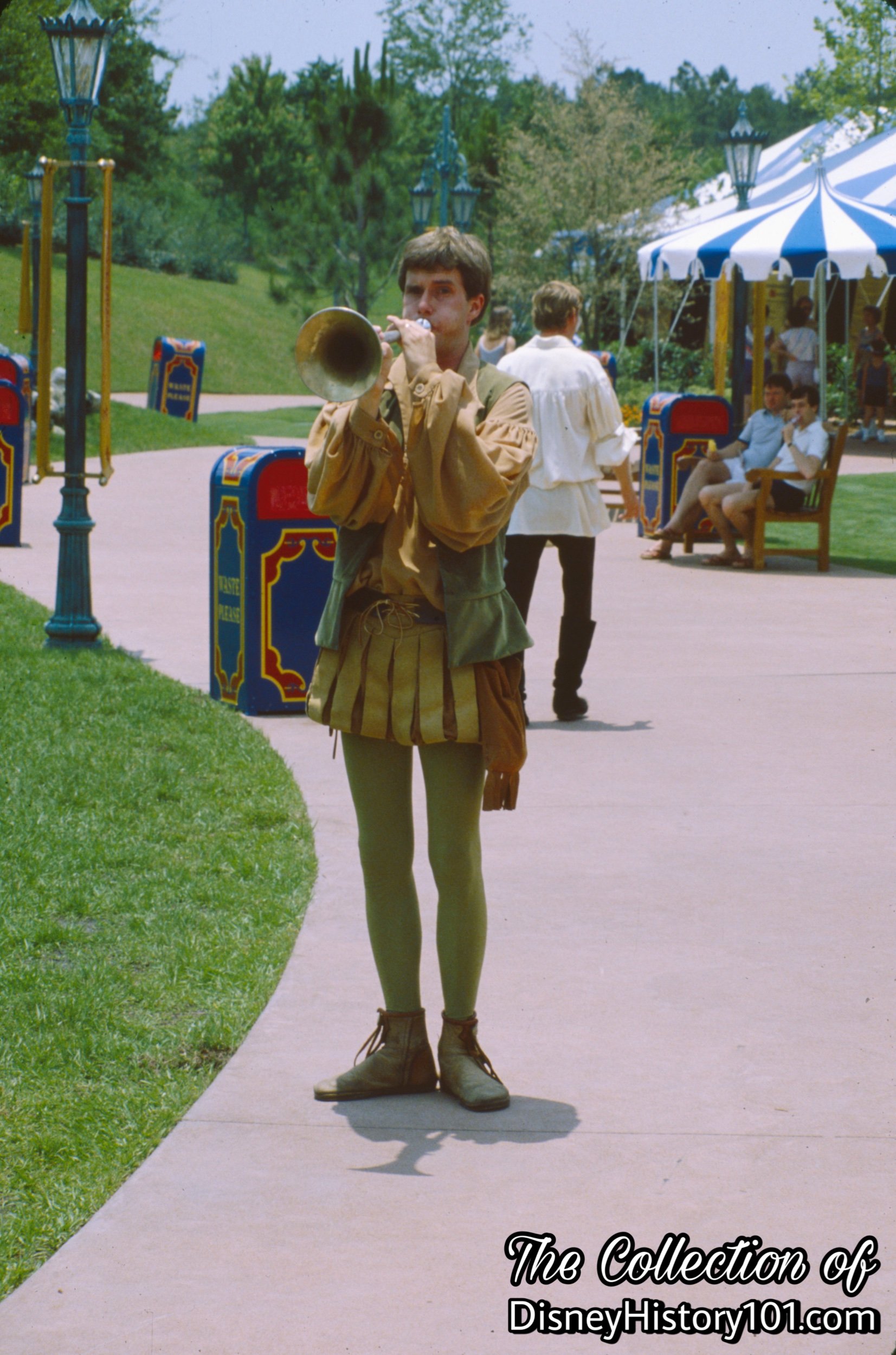
One of many Streetmphere actors of the United Kingdom Pavilion.
Since the beginning, Atmosphere Entertainment complimenting the theme of areas was staged to entertain Pavilion Guests on an immediate and personal level. The Streetmosphere program began in the Italy Pavilion with some 60 SAK Theater actors (including C. McNair Wilson, Terry Olson, Herb Hansen). Eventually shows were added to Future World and the United Kingdom World Showcase Pavilion, at a rate of 45 shows a day performed from four areas. At the United Kingdom, you'll meet the Pearly Kings and Queens and an Elizabethan poet named Will Shakespeare.
Walt Disney Entertainment department developed new shows and parades for all of Walt Disney World. Soon Character and Equity groups performed in this area of World Showcase West (and the International Gateway between the UK and France Pavilions), with Characters overseen by the WSC West Captain. Ultimately, Streetmosphere also called “Streetmo”) would support the Disney-MGM Studios Show. There, equity contract performers would portray 1930's/40's Hollywood citizens on Hollywood or Sunset Boulevards.
At EPCOT, “8,990 additional costume pieces will be laundered each day - bringing daily output to approximately 27,400 costume pieces.”
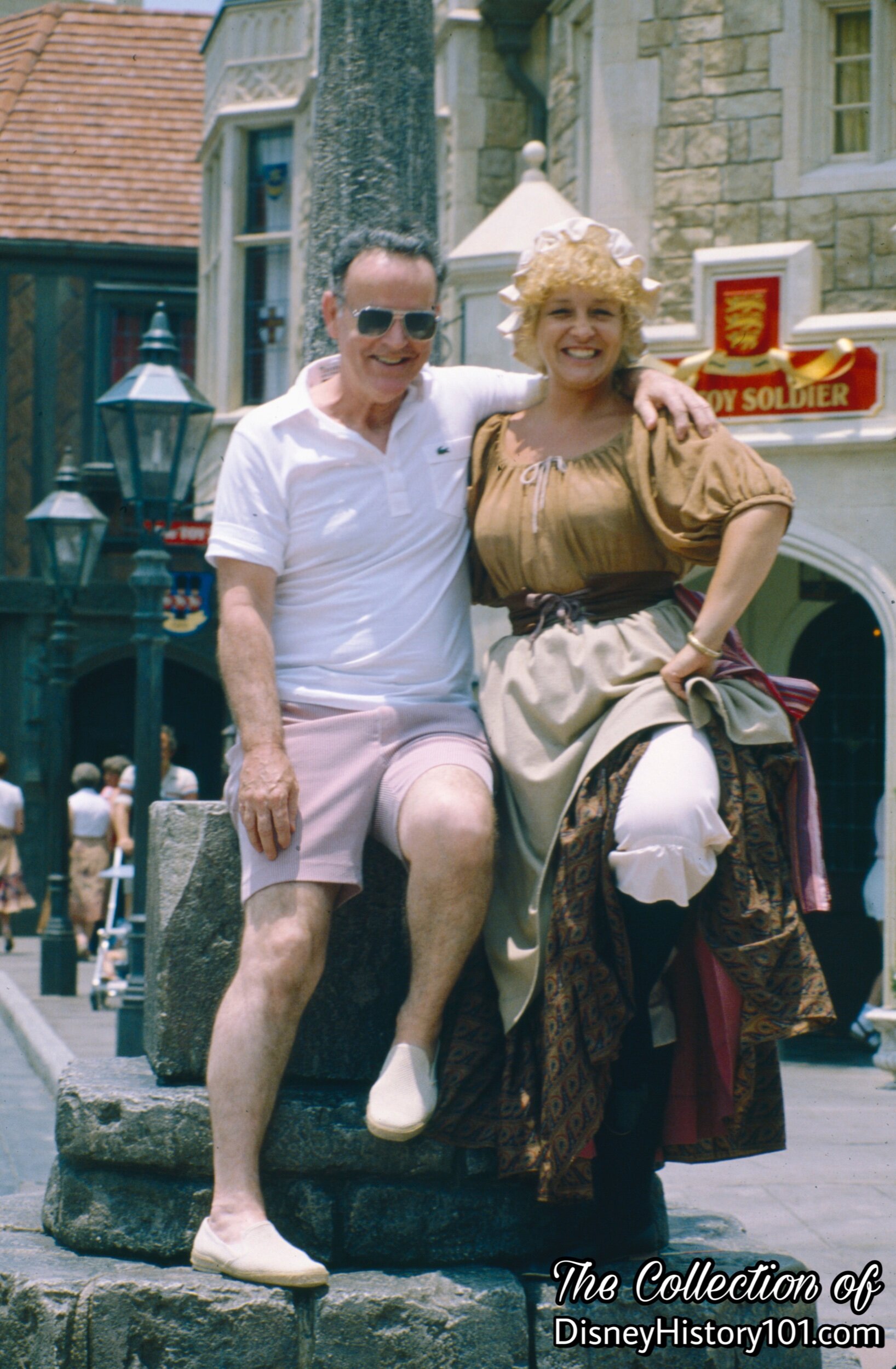
A Streetmosphere actor of the United Kingdom World Showcase.
Other popular crowd-pleasers were the Pearly Kings and Queens.
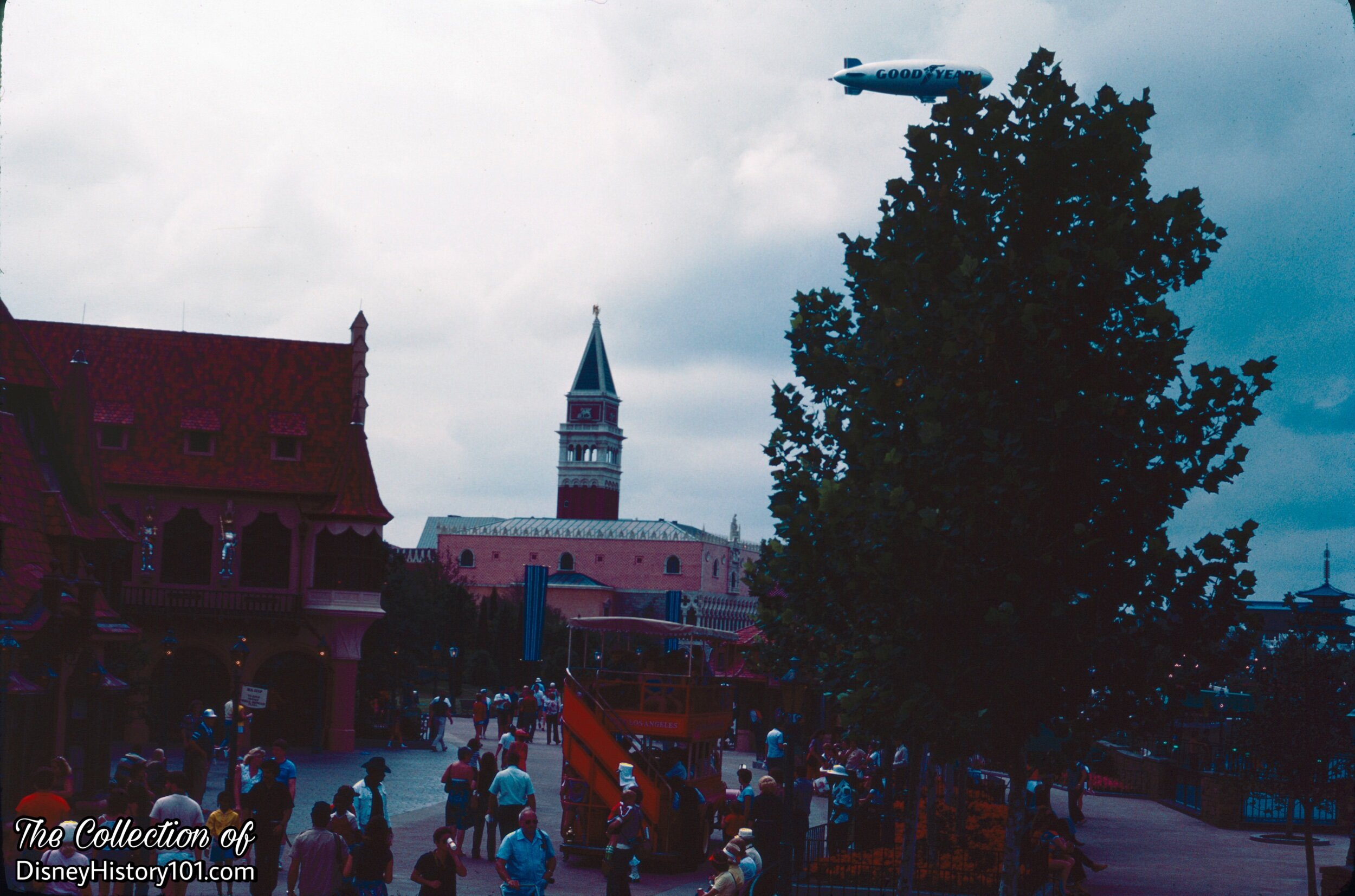
Viewing the Italy World Showcase from Germany World Showcase.
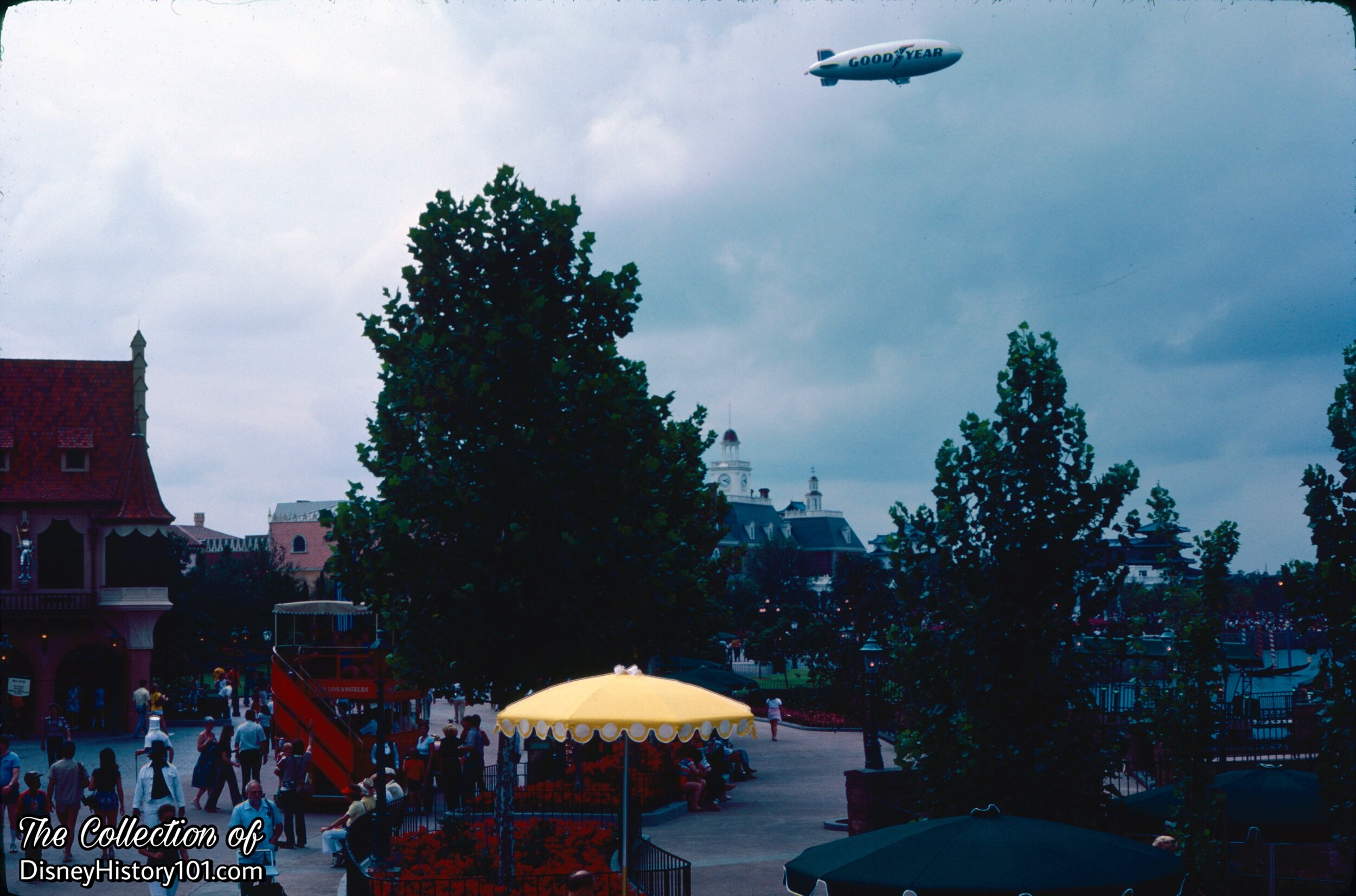
The view from the Germany World Showcase. Note the European double-decker bus.
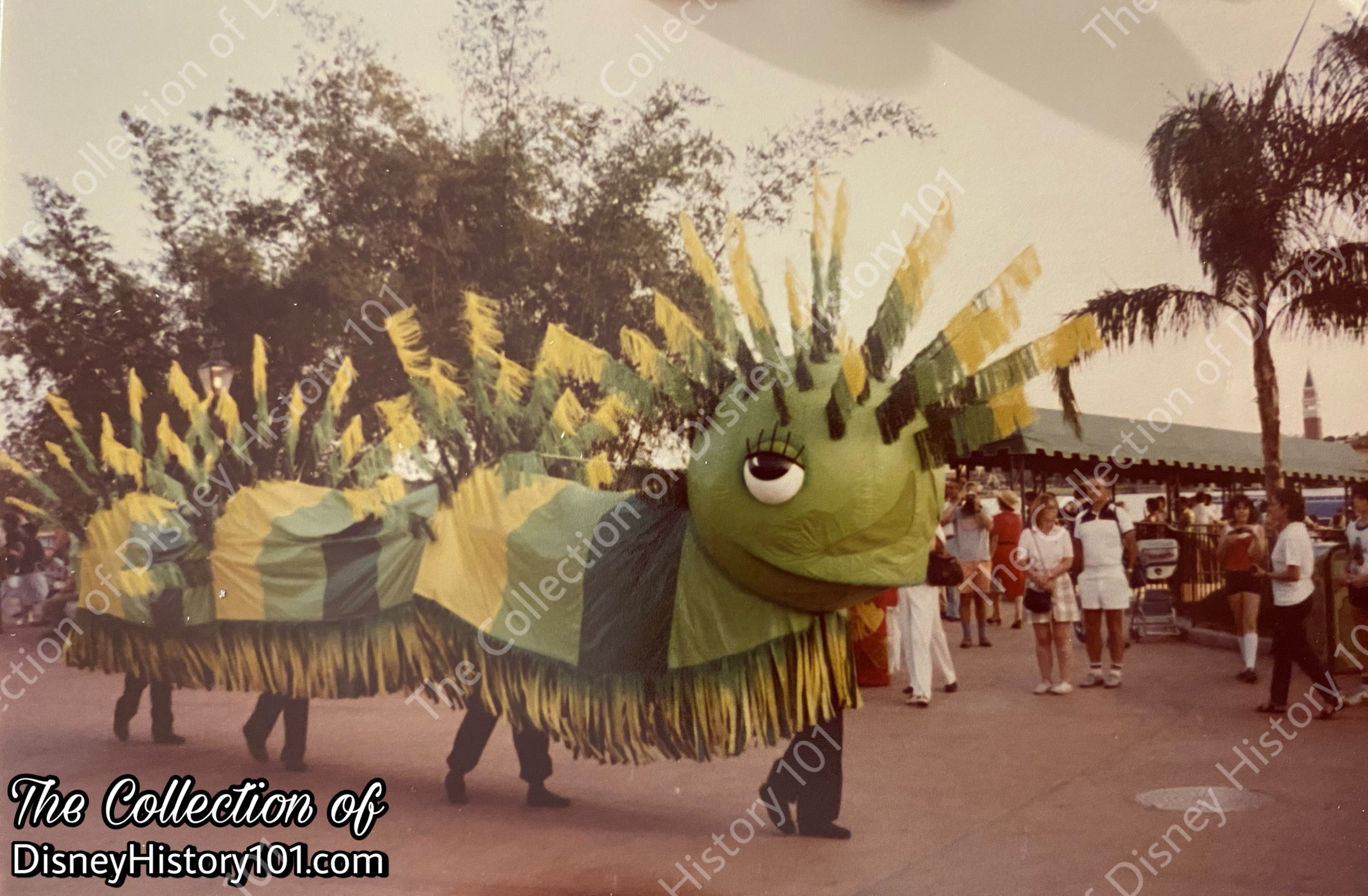
World Showcase Parade.
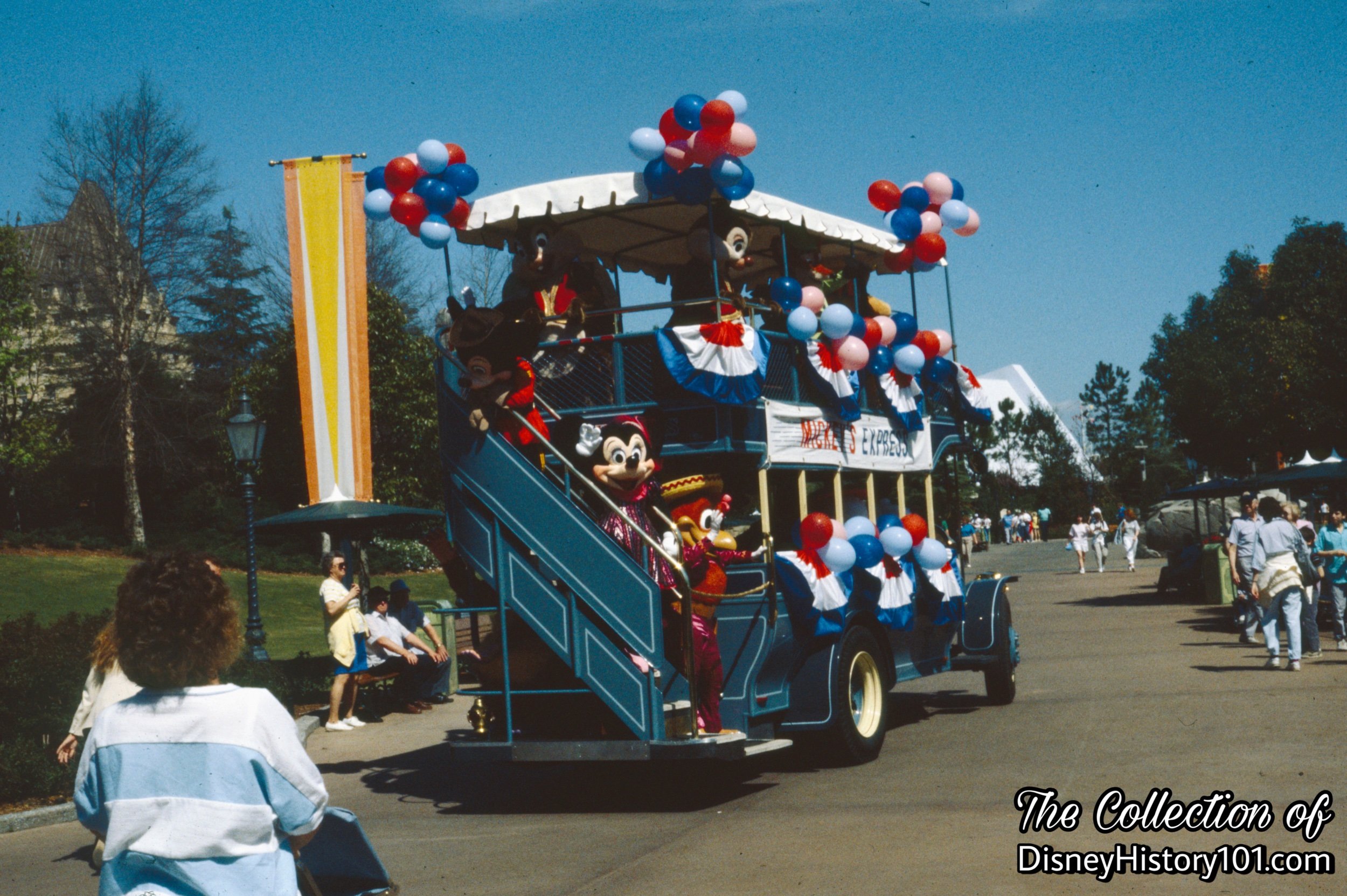
Mickey’s Express nears Canada World Showcase.
By c.2007, Guests May recall “Disney Characters on Holiday” (DCOH), a group of Characters that performed in several locations in Epcot, entering and exiting on a European double-decker bus. One of their Set Locations was in the Norway pavilion.
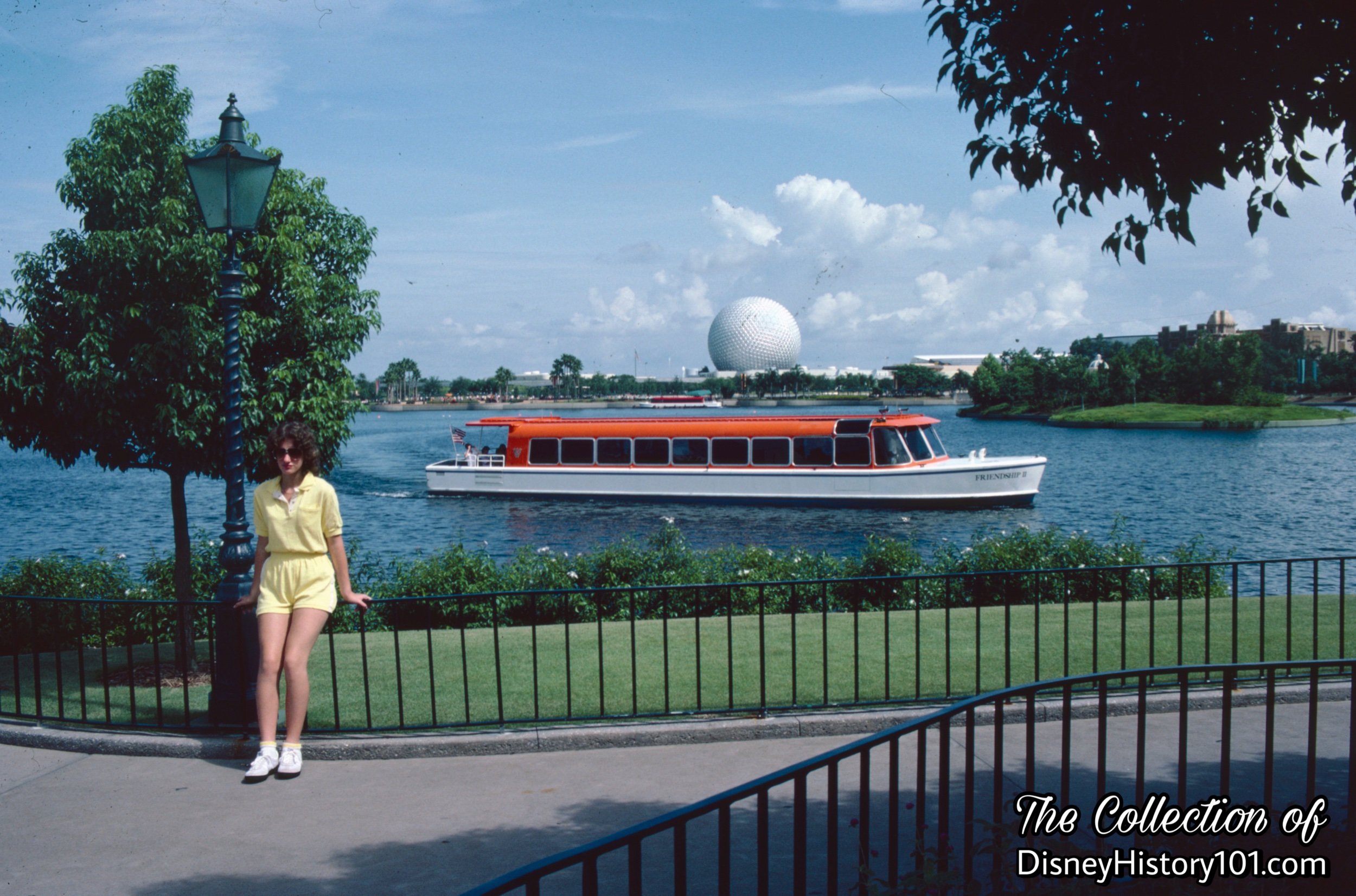
Nearby, the Friendship Boats transport guests from Dock #3 (neighboring the Germany World Showcase) across the lagoon.
Obviously, the fastest way to move people over the extended areas of a Park is with moving vehicles. "FriendShip" launches crossed the World Showcase Lagoon and readily accommodated guests in wheelchairs and strollers. Buses regularly circled the World Showcase promenade. By 1982, getting around the World Showcase area was made easier with additional transportation, in the form of seven more busses and two new boats with a third under construction.
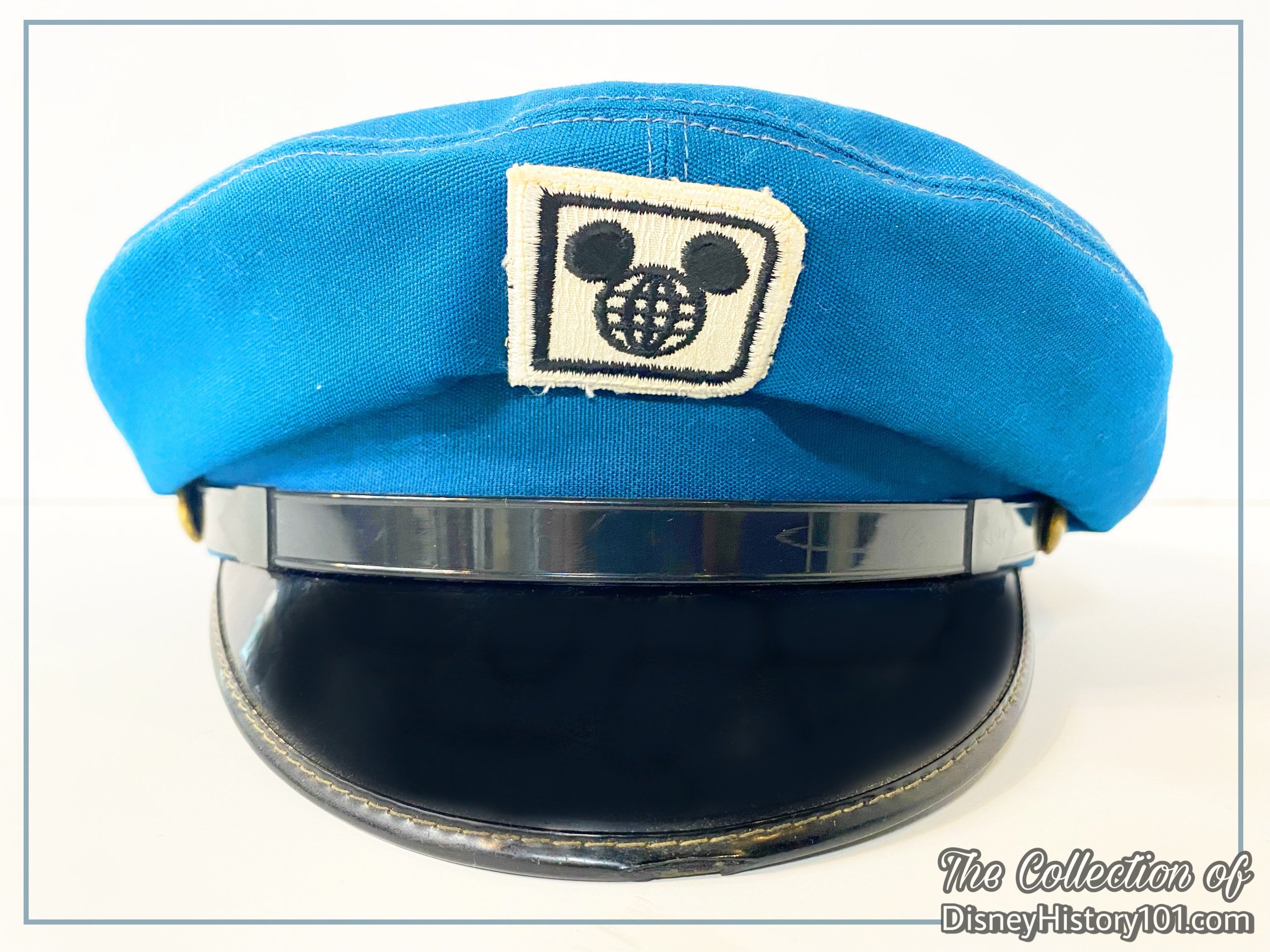
EPCOT Center Friendship Boats Watercraft Hat by Creative Costuming at the Disney-MGM Studios.
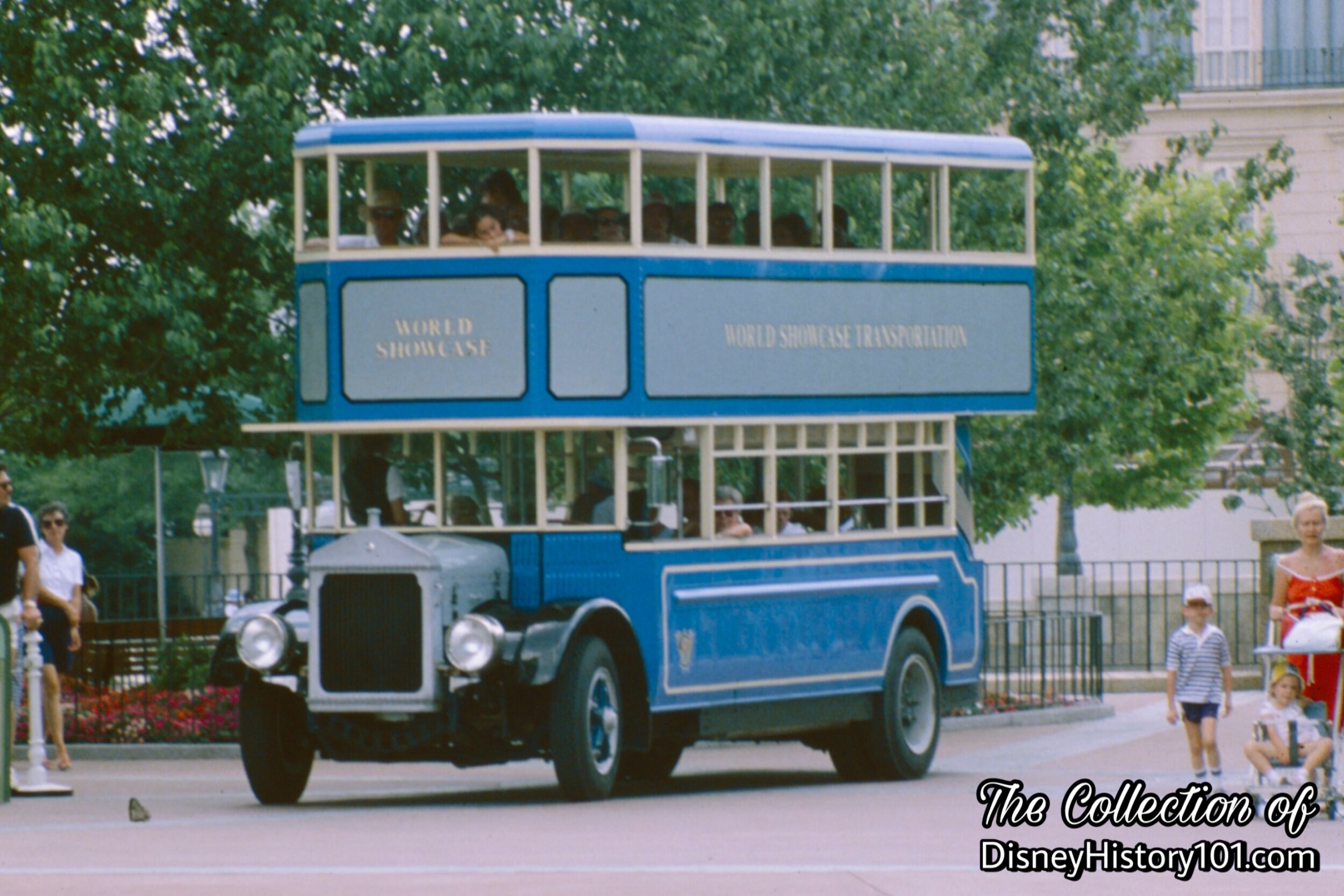
A European double-decker bus.
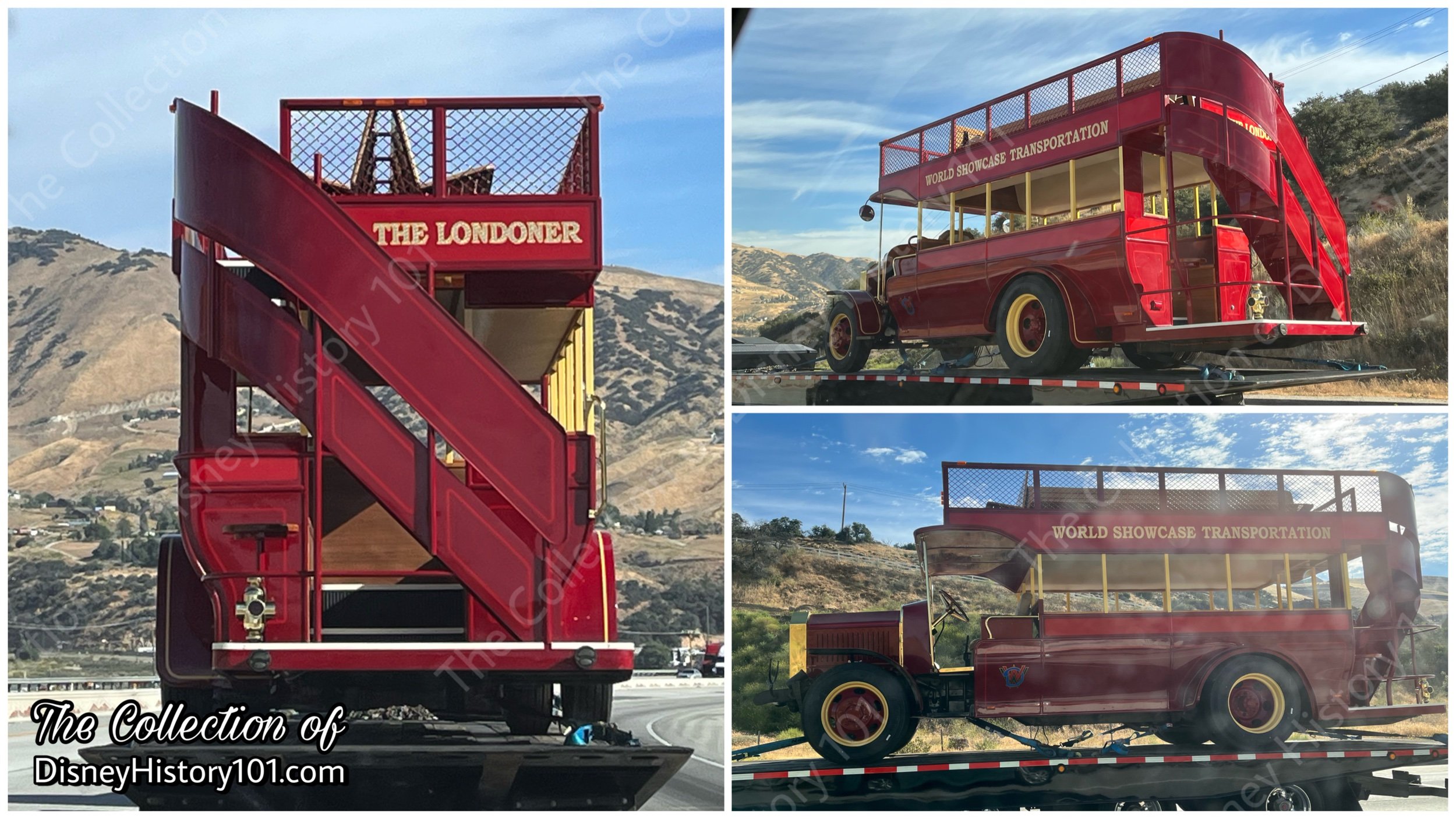
Ever wonder what became of those buses? We spotted a World Showcase Bus along a California highway in 2023.
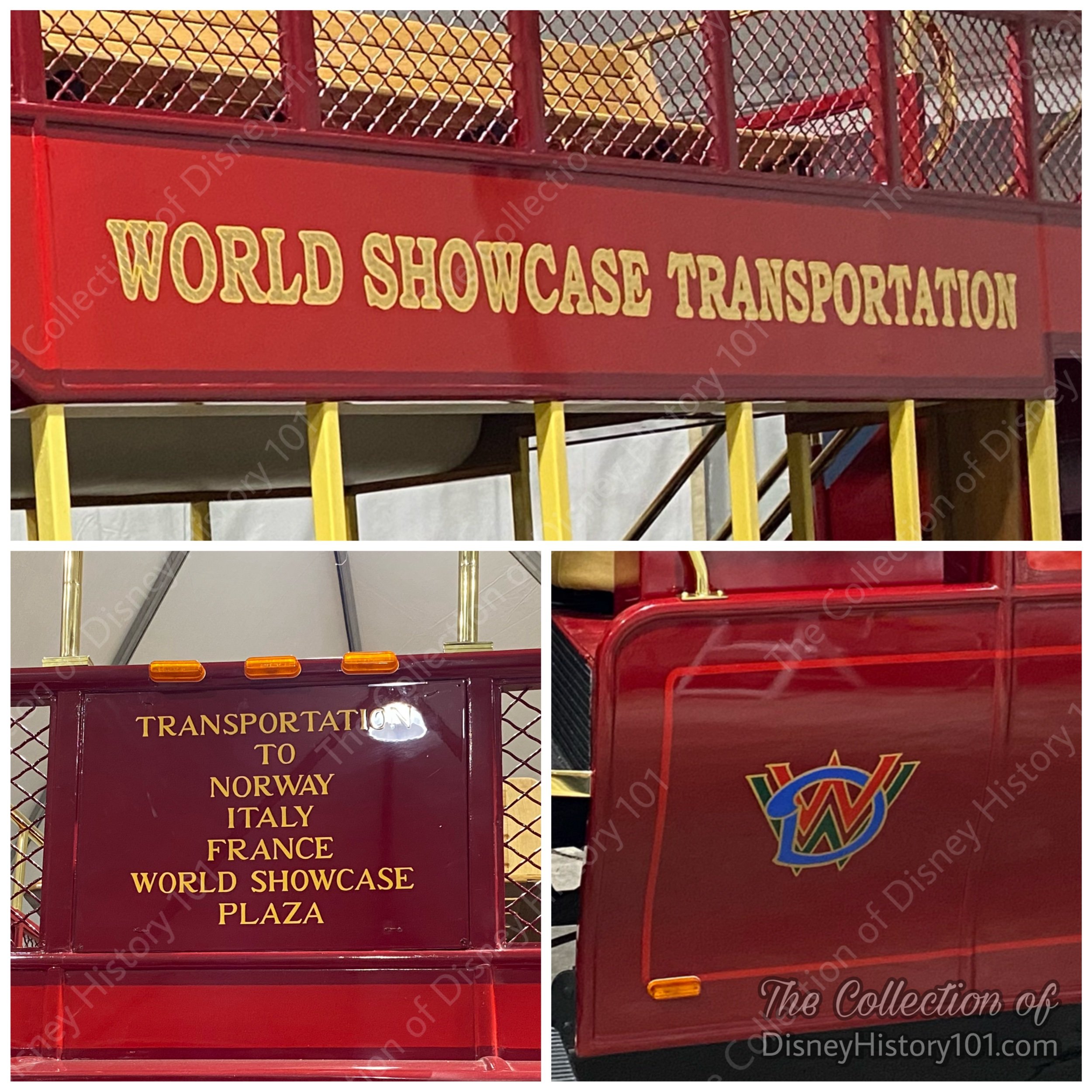
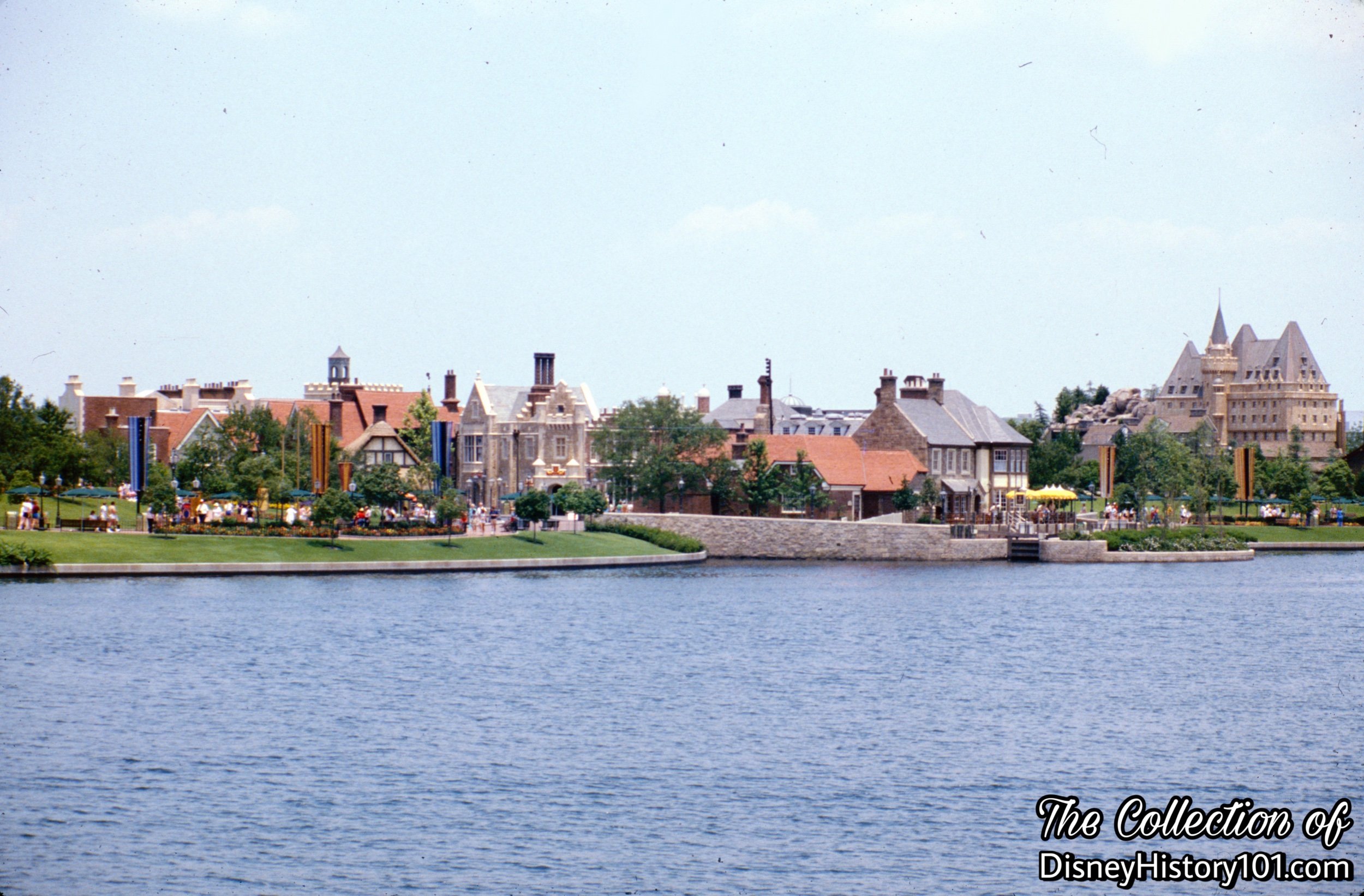
The United Kingdom World Showcase from the other side of the World Showcase Lagoon.
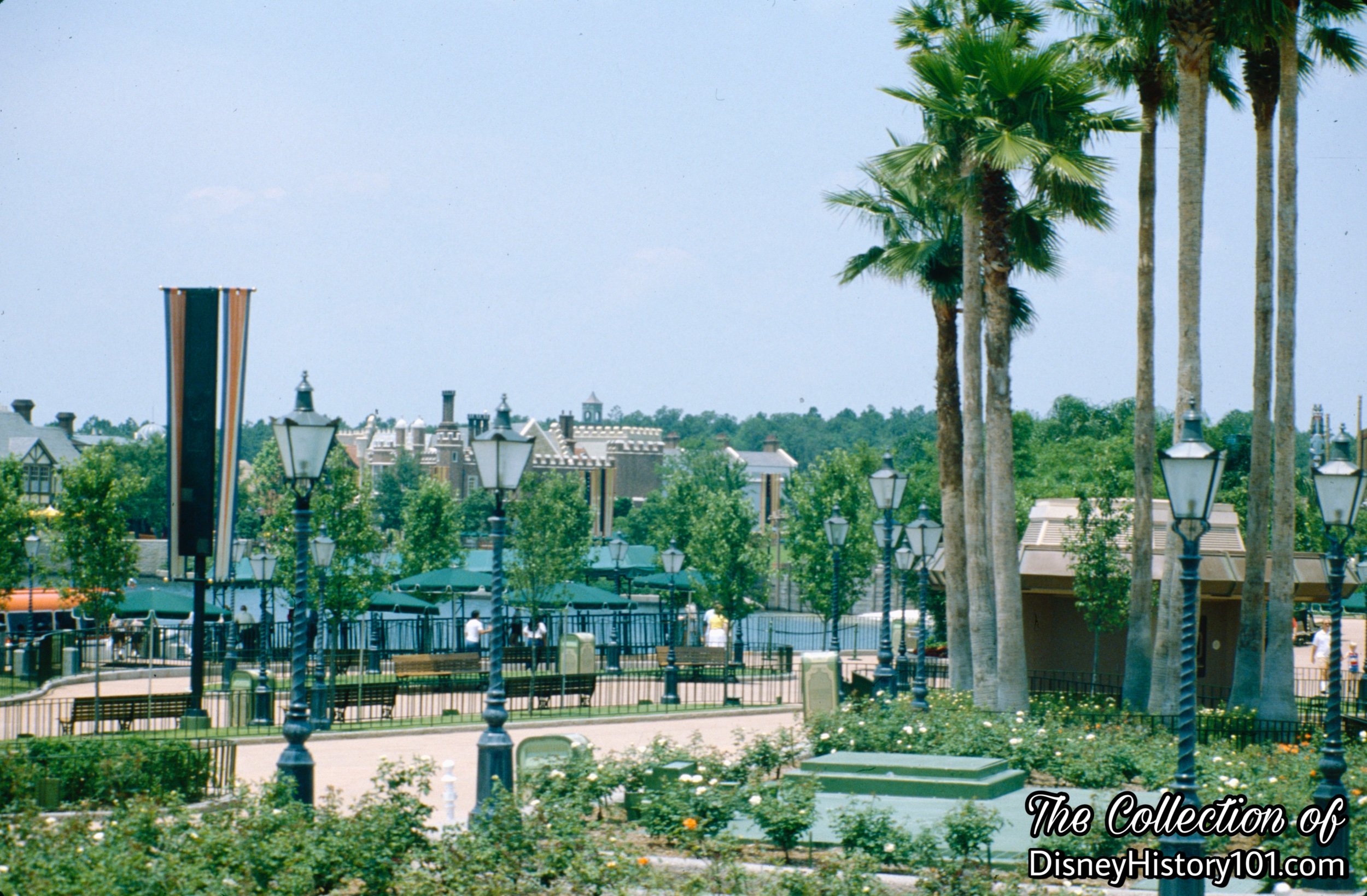
The United Kingdom World Showcase from the other side of the World Showcase Lagoon.
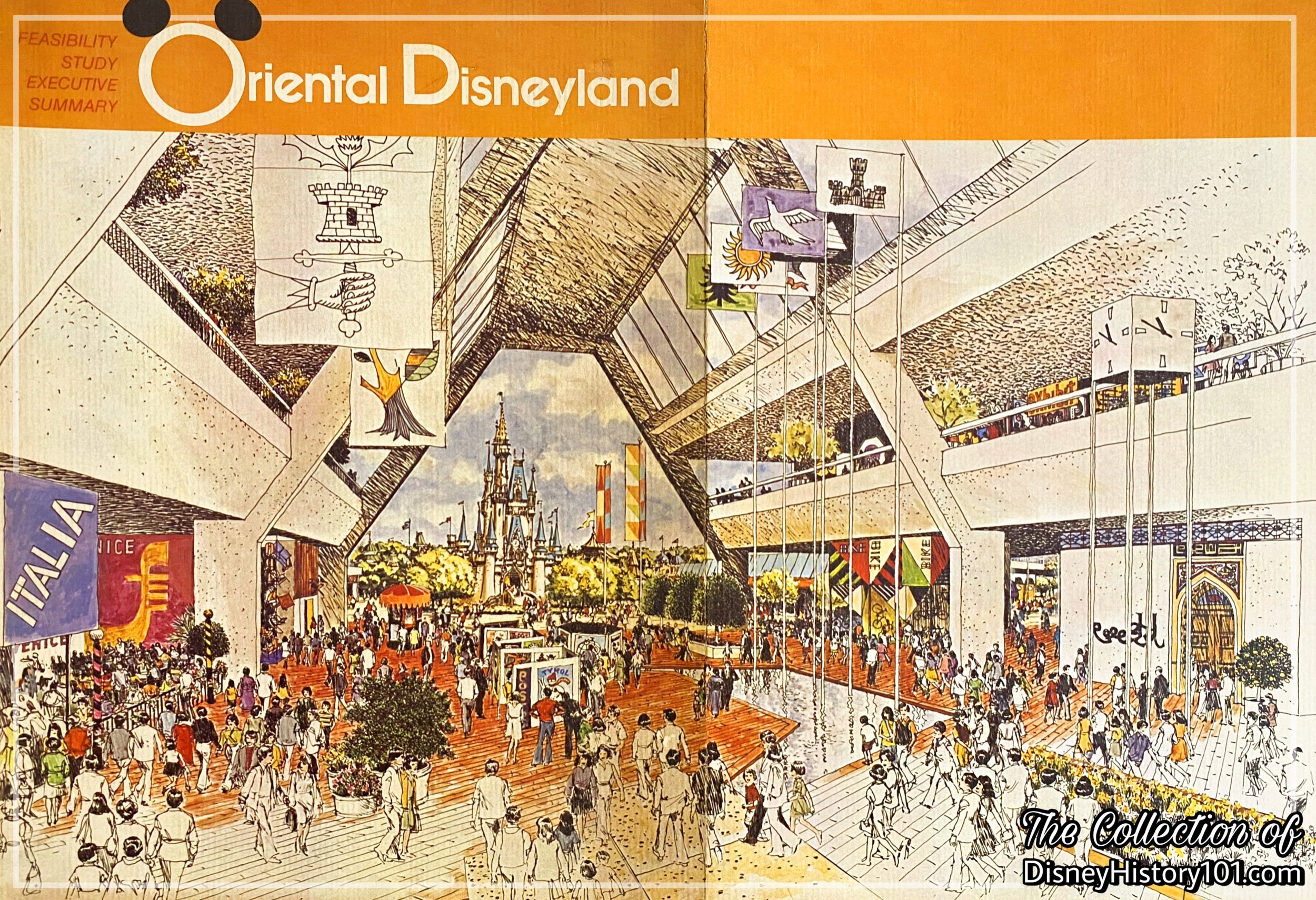
International Land depicted on the cover of the Feasibility Analysis and Executive Study for Oriental Disneyland (later named Tokyo Disneyland).
By August of 1975, the Feasibility Analysis Economic Study was completed for (what was first billed as “Oriental Disneyland”), an area called “International Land” was mentioned. It seems that (much like the original concept for EPCOT Center), Guests of International Land would also have “an opportunity to experience the endless variety of today's community of nations… discover the culture, traditions, tourism, and accomplishments of the participating countries through a wide variety of exciting shows and attractions, restaurants, and shopping streets unique to the individual nations.”
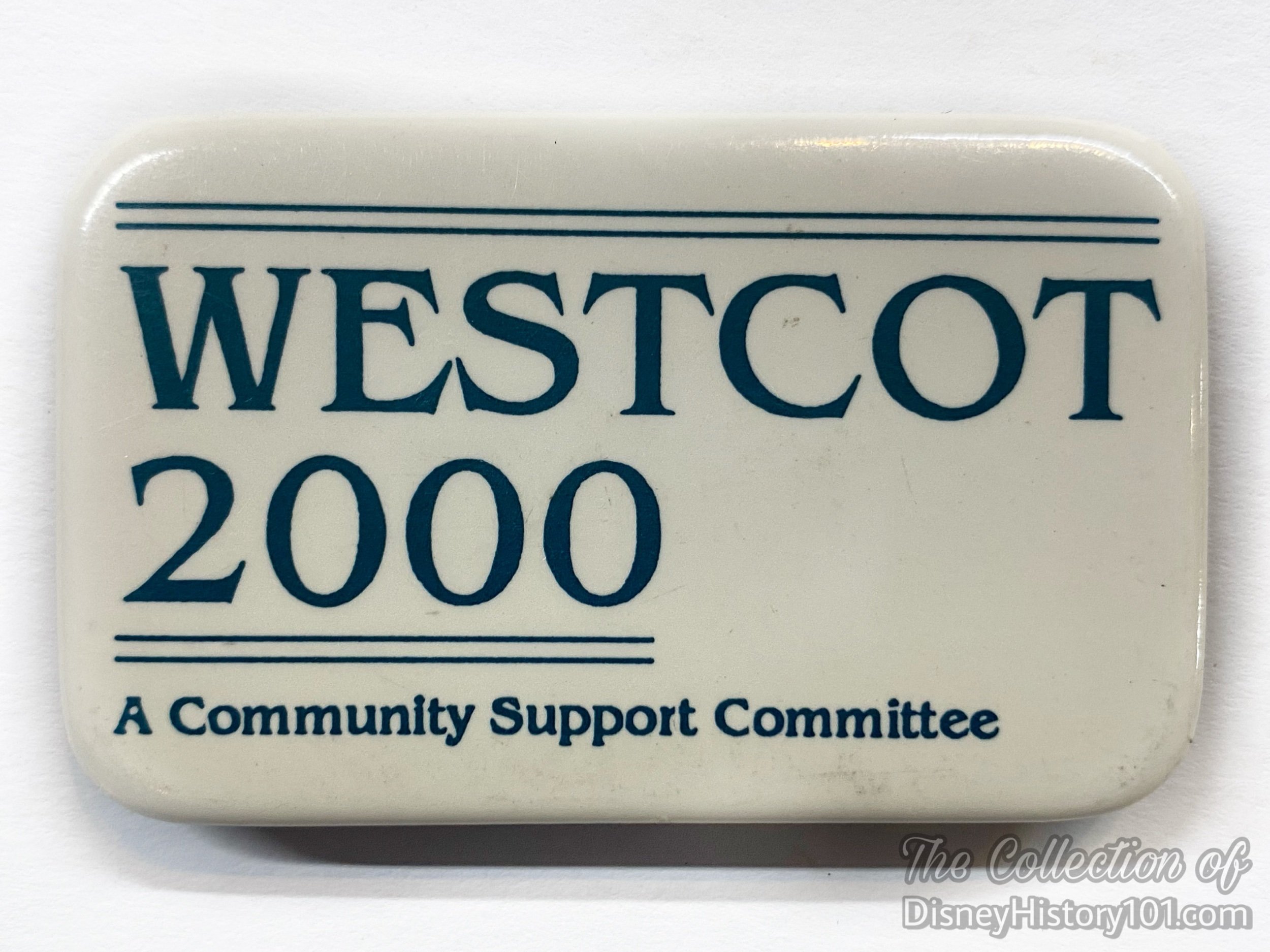
“It Looks Like We Started Something - Epcot Center Legacy”
The EPCOT Center World Showcase nearly had a legacy in WESTCOT Center - “a West Coast version of EPCOT Center, with a Spacestation Earth as its centerpiece, and a World Showcase. It was initially announced in March 1991, to be built where Disney California Adventure was eventually situated.” [Disney Facts Revealed by Dave Smith, 2016]
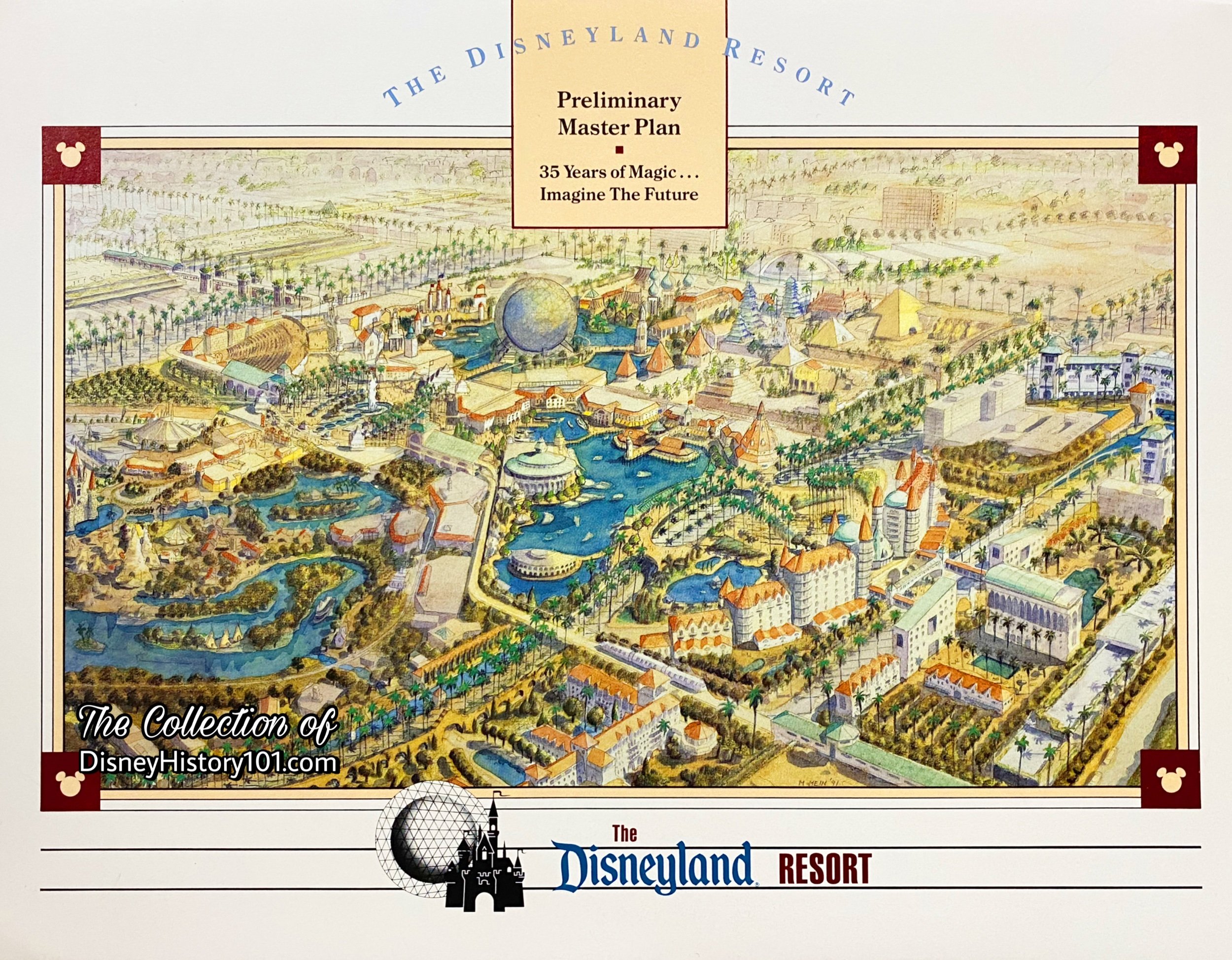
World Showcase nearly had a legacy in WESTCOT Center. Guests would have been transported to the Wonders of WESTCOT themed pavilions. At World Showcase, located around the island, visitors would have explored every corner of the globe at dramatic pavilions of foreign lands. WESTCOT was to include a whole new World Showcase of culture, traditions, tourism, and accomplishments of participating nations. Like EPCOT Center, these would be experienced through a wide variety of exciting shows and attractions, restaurants, and shopping streets unique to the individual nations.
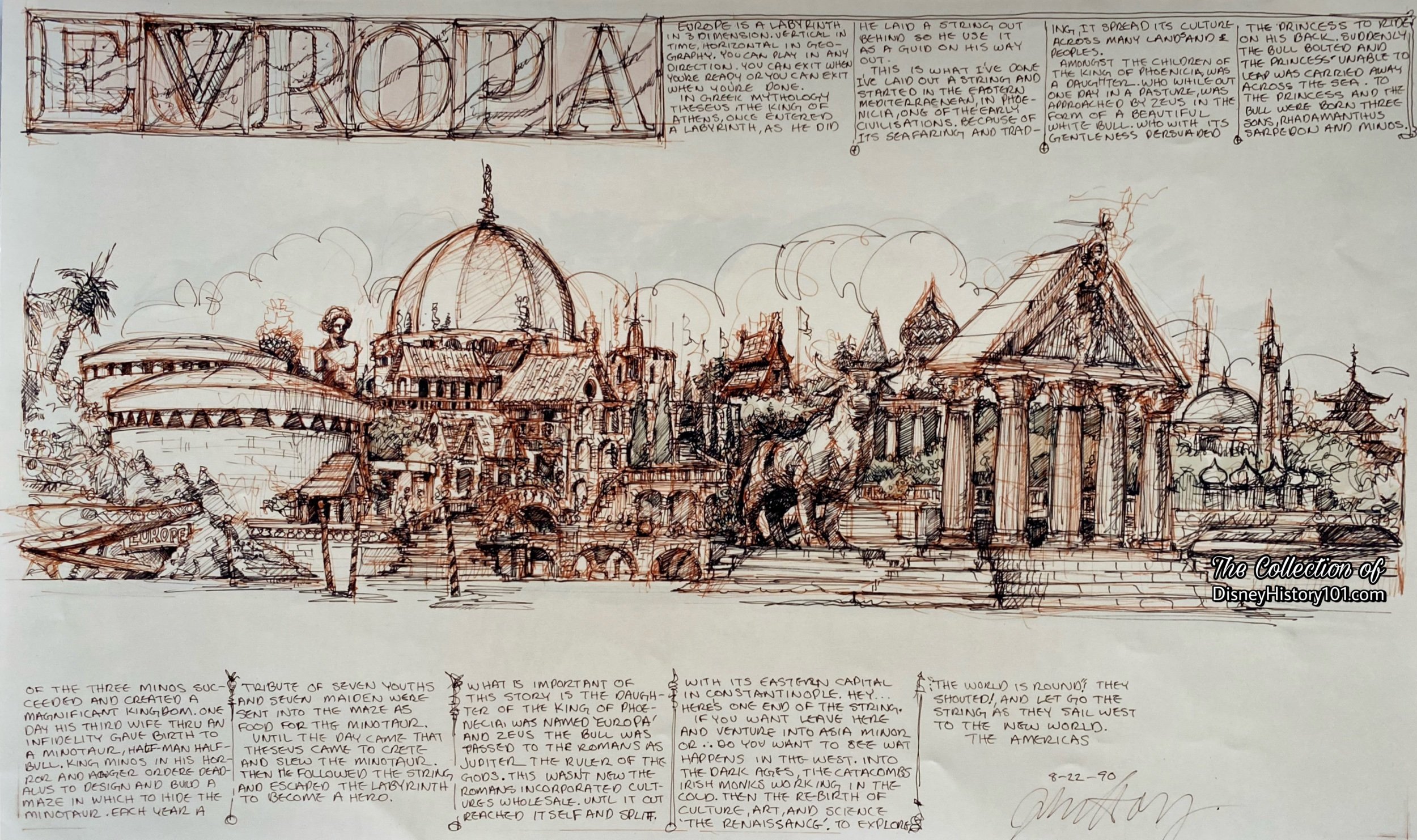
The plannd Port Disney may have included an area themed to the character of Europa.
